Success stories and newsletter
Success Stories
Spotlight on…Dr Vivian Mendez Alvarez
Applied BioSciences, Faculty of Science and Engineering
What’s your area of research?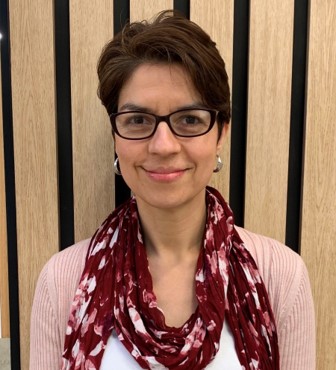
I study behaviour and reproduction of insects and spiders and am interested in both basic science and the applications of knowledge gained from basic science in solving practical problems for agriculture. In basic science, I am very much interested in the role of the pheromones in insect communication and reproductive behaviour. However, on the practical side, once you find pheromone compounds that attract or repel conspecifics, competitors or predators, then you can use that knowledge to develop sustainable tools to control insect pests. Such tools can greatly reduce the use of pesticides in food production.
Who inspires you?
I am inspired by people who are passionate about what they do and no matter how successful or bright they are, they keep themselves grounded and modest.
What inspires you?
I am inspired by curiosity and vastness of unexplored possibilities. As long as there is excitement about the possibilities, we will always find something new to explore and develop.
How will your research make the world a better place?
In Applied BioSciences at Macquarie we are committed to delivering research that can solve practical problems for industry partners through the development and use of environmentally sustainable approaches. We collaborate with organisations that are deeply involved with Australian agriculture and we direct our efforts to help with their problems and needs. Flipping the traditional academic model, rather than starting with curiosity we often start with more practical discussions with end-users about their needs. We then seek innovation and discovery on the journey to meeting those needs. Most of our research is funded by agriculture industries, and we have the responsibility of turning those funds into solutions for industries and rural communities.
How do you inspire or encourage women, Indigenous Australians, other minorities or under-represented groups into your discipline?
I am from Costa Rica, a developing country. English is not my native language and I learnt it late in life. I have two kids and I am a single mum. I would tell women with a similar background that they should not give up on their dreams, it is a difficult path, many times you are not doing exactly what you would like to be doing but resilience and having your dream as one of your top priorities is critical. You might need to sacrifice family time, being away from friends and your culture but your goals and dream can come true. As a supervisor, when I see a student that has sacrificed the comforts of their home country, including family support to help raise their children, to come to Australia to obtain a degree, I admire their courage and would do whatever in my power to support their efforts.
How do you fund your research?
I currently have funding from organisations that support basic research such as the Australian and Pacific Science Foundation and I also seek opportunities to translate my skills to develop projects for industry, particularly with Hort Innovation Ltd and Grains Research Development Corporation. But often even industry-based programs recognise the need for strategic basic research to underpin the development of practical outcomes. The industry-based projects tend to be much larger than those for basic research, and require personal skills for negotiation and project development.
What’s a recent success that you’re proud of?
I led the development of a $5.4M project that was recently funded by Hort Innovation, in collaboration with my colleagues in Applied BioSciences, Dr Bishwo Mainali, Dr Soo Jean Park and Prof Phil Taylor. This was a much larger and faster enterprise than I had taken on previously, and in meeting the challenges of the project development and application process I uncovered numerous personal abilities that I had not previously seen in myself. With only four weeks from announcement to deadline, we brought together a team of more than 20 collaborators from seven organisations and won the competitive selection.
What’s one piece of advice you would give to an early career researcher?
My advice is to have as many interactions as you can with people that you admire and who inspire you in academia and in industry, and force yourself into situations within your work environment that you might not be comfortable with at the beginning but that may uncover skills that you never imagined you had. Only by testing yourself with new challenges those skills are unleashed and then you can use them to accelerate your career.
I recently found that trusting my instincts in decision-making works really well for me and has helped me to develop large and complex projects and to manage stakeholders. I learned this when forced to use my instincts in situations that needed fast decisions at critical points. I uncovered a new skill by forcing myself into an uncomfortable situation that was initially very daunting. But what was once frightening is now a strength that I actively seek to use both in my own projects and to support projects developed by colleagues.
What do you find most rewarding about your job?
The most rewarding part of my job is collaborating with people from diverse disciplines who are excited about science and solving problems, and have fun in the process. To me working with a chemist, a molecular biologist or a modeller is always exciting because it opens doors to more sophisticated interdisciplinary research that vastly expands the opportunities to address research challenges while also bringing the enjoyment of working collectively to combine our skills as a team. It is also very rewarding to know that our research, funded by growers, helps to develop tools and solutions that not only benefit Australian agriculture but that are also friendly to the environment.
What do you find most challenging about your job?
The most challenging aspect of the job is maintaining coherence and 'drive' in teams from diverse disciplines and organisations working on complex and challenging projects. Students and collaborators are always excited and fresh at the beginning of a project, but every project comes with challenges and periods of hard grind, and changes in personal and professional circumstances of team members can affect priorities and motivation. I found this challenging at times and have worked on finding strategies to keep everyone positively engaged in the collective activities of a team.
August 2022
Past Success Stories
Spotlight on…Prof Ingrid Piller - July 2022
Prof Ingrid Piller, Department of Linguistics, Faculty of Medicine, Health and Human Sciences
What’s your area of research?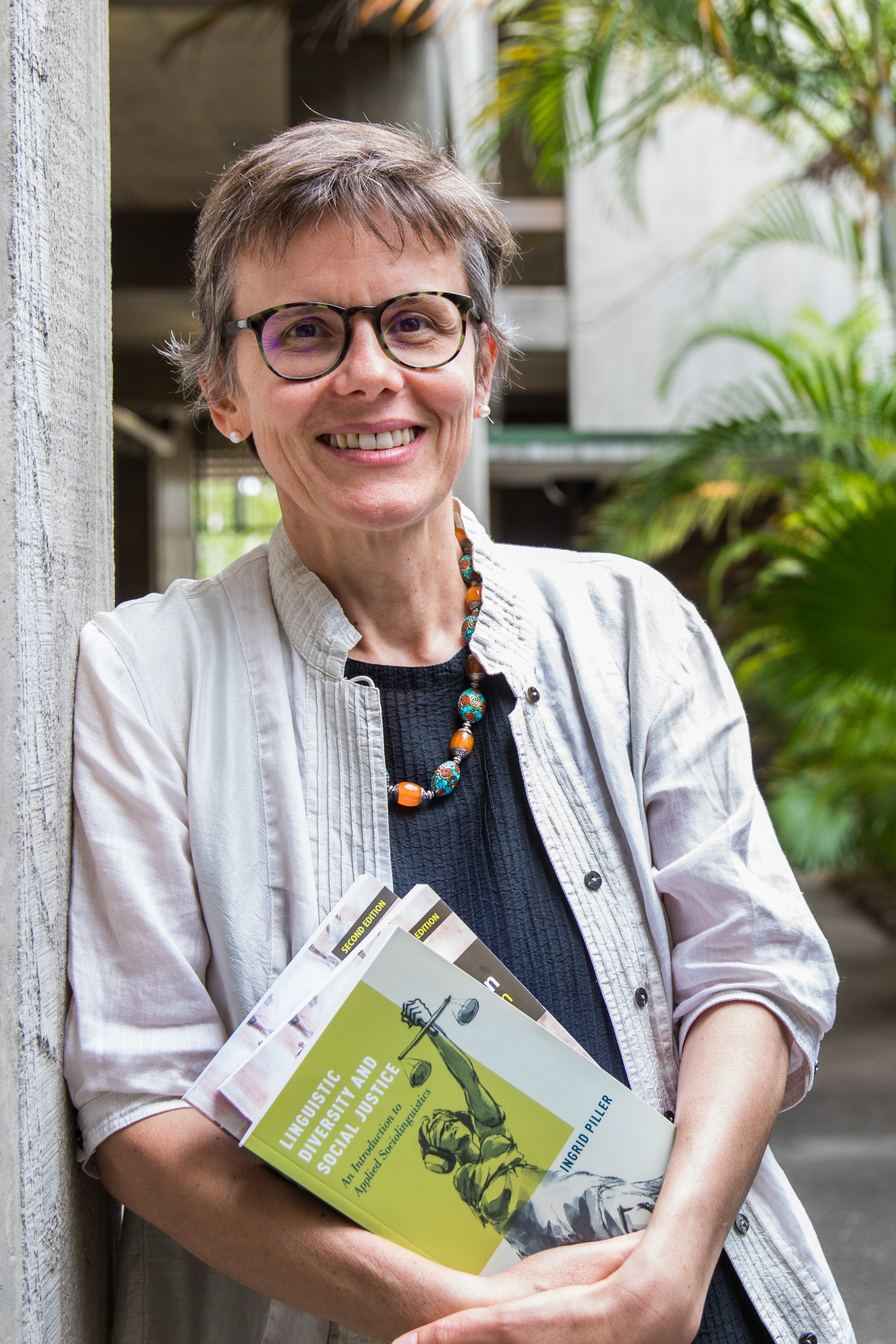
Linguistic diversity in social life: in Australia we live in a highly linguistically diverse society with about 25% of the population speaking a language other than English at home. People from non-English-speaking backgrounds face significant disadvantages when it comes to accessing education, employment, health, or the legal justice system. My research explores these language barriers to full and equal social participation and seeks to promote social equity by finding ways to overcome them.
Who inspires you?
My teachers and my students.
How will your research make the world a better place?
One of my most recent journal articles found that primary schools communicate enrollment information only in English, even if up to 98% of their students come from non-English-speaking backgrounds. This means that parents may not be able to engage with schools effectively and their children may lose out from the start. Therefore, our research provides the tools to improve home-school communication in linguistically diverse societies, and that will make the world a better place by reducing linguistic disadvantage.
Piller, I., Bruzon, A. S., & Torsh, H. (2021). Monolingual school websites as barriers to parent engagement. Language and Education, 1-18. doi:10.1080/09500782.2021.2010744 (open access)
Easy reader version: Piller, Ingrid. (2021). Monolingual school websites as barriers to parent engagement. View online
How do you engage with end-users of your research?
I founded and edit a popular virtual research dissemination platform, Language on the Move. The site connects scholars with research interests in intercultural communication, language learning, multilingualism, and bilingual education internationally, and brings their research to a broad global audience. We have close to 150 contributors from Australia and 27 other countries, almost 900 content pages, 8,000 comments, and 1.6 million views. The associated Twitter feed @lg_on_the_move reaches 22.9k followers. This network has provided our team with an effective platform to connect with educators, communicators, and policy makers.
How do you inspire or encourage women, Indigenous Australians, other minorities or under-represented groups into your discipline?
As a woman, mother, and migrant who has made it to the top of my field, I know the hazards of the leaky pipeline from personal experience. Therefore, I concentrate my supervision, mentoring, and support on women from non-English-speaking backgrounds. Of the 31 PhD candidates I have supervised to completion, 28 are women, and 24 use English as an additional language and come from outside the Anglosphere.
In an upcoming journal article, co-authored with two of my former supervisees, Jenny Zhang and Jia Li, who are now professors at Zhongnan University of Economics and Law in Wuhan and at Yunnan University in Kunming, we explicitly address how to challenge the disadvantages in global academic publishing faced by multilingual scholars. We undertook a collaborative autoethnography to demonstrate what enabling academic and personal networks look like, and to highlight the importance of linguistic and epistemic brokerage.
Piller, Ingrid, Zhang, Jie, & Li, Jia. (2022). Peripheral multilingual scholars confronting epistemic exclusion in global academic knowledge production: a positive case study. Multilingua. doi:doi:10.1515/multi-2022-0034 (open access)
Easy reader version: Piller, Ingrid. (2022). How to challenge Anglocentricity in academic publishing. View online
How do you fund your research?
As a teaching and research academic, I am grateful that my research time is funded by Macquarie University. My PhD students have also received significant internal funding through the MQRES and iMQRES schemes. Externally, I have been fortunate that, over the course of my career, I have received substantial research funding from funding bodies in Australia, Germany, Switzerland, and the United Arab Emirates (UAE). In addition to the ARC, funding bodies have included the Australia-Japan Foundation, Australian Immigration Department, Emirates Foundation, German Academic Exchange Service (DAAD), German Research Council (DFG), Humboldt Foundation, Swiss National Fund, and Swiss Virtual Campus. The bulk of this funding has gone into personnel costs and has supported several PhD students and postdoctoral researchers to conduct sociolinguistic ethnographic research of intercultural communication in schools, workplaces, and the media.
What’s a recent success that you’re proud of?
Two of my international PhD students who completed their PhDs against significant odds during the pandemic in 2021 have both just signed book contracts with prestigious international publishers for monographs based on their theses:
Madiha Neelam’s book about Muslim women as speakers of English will be published by Palgrave Macmillan and Pia Tenedero’s book about Communication that counts will be published by Multilingual Matters.
Muslim women as speakers of English shows that the stereotype of the silent Muslim woman means that their English language proficiency is routinely underrated. Their supposedly low English proficiency then becomes politicized to justify intervention in and surveillance of Muslim communities. Communication that counts takes a deep dive into the language and communication practices involved in offshored accounting services provided globally by accountants based in the Philippines.
Are you currently working on a grant or high-impact paper? What’s it about?
Together with five former students – Donna Butorac, Emily Farrell, Loy Lising, Shiva Motaghi-Tabari, and Vera Williams Tetteh – I am currently completing a book manuscript contracted to Oxford University Press about Life in a New Language. Based on almost 20 years of sociolinguistic ethnographic research with over 100 migrants to Australia from Africa, Asia, Europe, and the Middle East, we explore what it means to start a new life as an adult through a new language. We illuminate how our participants learned English, found work, interact with colleagues, parent their bilingual children, confront racism, and achieve belonging.
What’s one piece of advice you would give to an early career researcher?
It’s been a while since I was an ECR, so I’ll give the word to two of my recent graduates: Dr Laura Smith-Khan suggests that seeking out support networks is essential, and Dr Pia Tenedero recommends surrounding yourself with people who believe in you. They both have many more tips up their sleeves and you can read Laura’s reflections on her PhD journey in full here and Pia’s 10 secrets to surviving her PhD here.
What do you find most rewarding about your job?
I genuinely love my job – to be able to teach and research is an incredible privilege. The greatest reward comes from seeing my students succeed.
Who at Macquarie University deserves recognition for their outstanding contribution to the university’s research effort?
Our professional staff who work behind the scenes to keep the university’s teaching and research enterprise going. Their support undergirds all our achievements and successes.
July 2022
Spotlight on…Prof Tom Smith - June 2022
Prof Tom Smith, Department of Applied Finance, Macquarie Business School
What’s your area of research?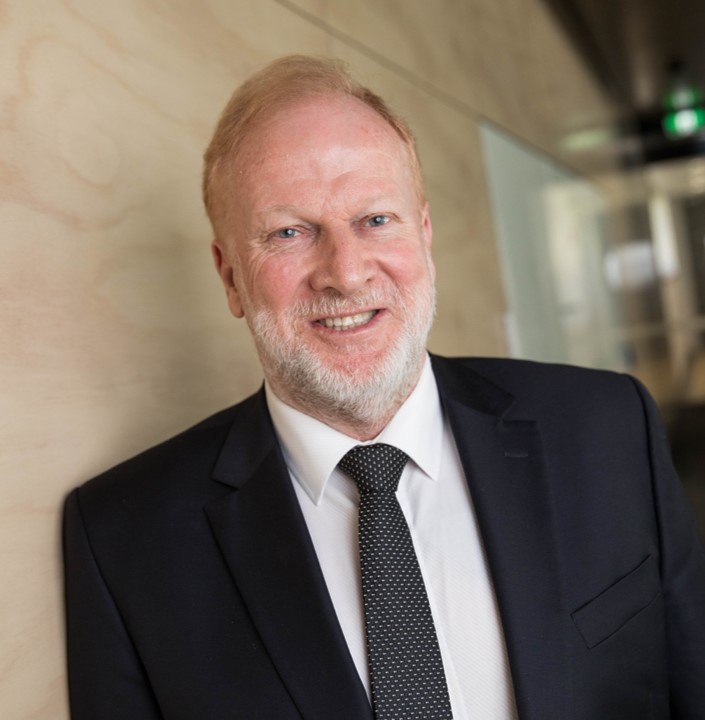
My area of research is finance, asset pricing theory and tests, fintech, and environmental finance. My current research focuses on environmental finance. My team puts dollars and cents on the costs and opportunities presented by global environmental change, one of the grand challenges facing humanity today. Our research shows that the opportunities of a transition to clean technology are enormous with a projected $20 trillion increase in wealth.
Who inspires you?
I am inspired by all the wonderful colleagues working in my Department. We have a diverse research portfolio across the core finance disciplines, but also new areas such as digital and environmental finance. Our Department also hosts two successful centres – the Centre for Corporate Sustainability and Environmental Finance headed up by Professor Martina Linnenluecke, which is at the forefront of research on global environmental change, and the Centre for Applied Finance Research, headed up by Professor Andrew Lepone, which is producing impactful research in the areas of market design, investment and behavioural finance.
What inspires you?
I am inspired by the grand challenges facing humanity and applying research across disciplines, universities and internationally to address these challenges and leave the planet in a fit state for future generations.
How do you engage with end-users of your research?
Our research is highly relevant to shaping and providing insights that underpin the fundamental transformations that are happening in the finance industry. Beyond the important work by our Centres mentioned above, our department is producing world-class output in many areas relevant for end-users. For example, Professor Elizabeth Sheedy, a professor in my Department, is a renowned risk governance expert and works directly with companies and regulators on financial services misconduct, remuneration practices, enhancing financial services culture/conduct and related issues. Professor Michael Aitken – another Professor in my Department – has led Macquarie’s input on the successful Digital Finance Cooperative Research Centre. This initiative brings together stakeholders in fintech, regulation and across various industry sectors to develop and commercialise new opportunities in these areas. We have multiple colleagues working on cutting-edge digital finance research, including Associate Professor Sean Foley, Professor Andrew Lepone and Professor Vito Mollica.
How do you inspire or encourage women, Indigenous Australians, other minorities or under-represented groups into your discipline?
I am a part of a group of Business Professors who run an Indigenous Business Development Program to provide the latest in Accounting, Finance, Marketing and Strategy to Indigenous Businesses throughout Australia. This has led to excellent engagement with us and Universities in general, including PhD student enrolments.
What do you find most rewarding about your job?
The most rewarding apart of my job is teaching people how to do research and seeing them succeed with top tier publications in their own right. I have supervised over 50 PhD students to completion and the most rewarding thing for me is seeing them succeed with over 50 tier 1 publications in their own names.
What do you find most challenging about your job?
Bringing cutting edge research into the classroom. We have redesigned both our Masters of Banking and Finance (pre experience students) and our Masters of Applied Finance (post experience students) to include the latest research on Environmental Finance and Fintech. This has led to the Masters of Applied Finance being rated as the number one program in Australia and 32nd in the world and has resulted in an increase of 52% in student numbers from 2017 to pre pandemic in 2019 for the Master of Banking and Finance and a 12% increase for the Masters of Applied Finance.
June 2022
Spotlight on…Assoc Prof Kate Rossmanith - May 2022
Assoc Prof Kate Rossmanith, ARC Future Fellow, Department of Media, Communications, Creative Arts, Language and Literature, Faculty of Arts
What is your area of research?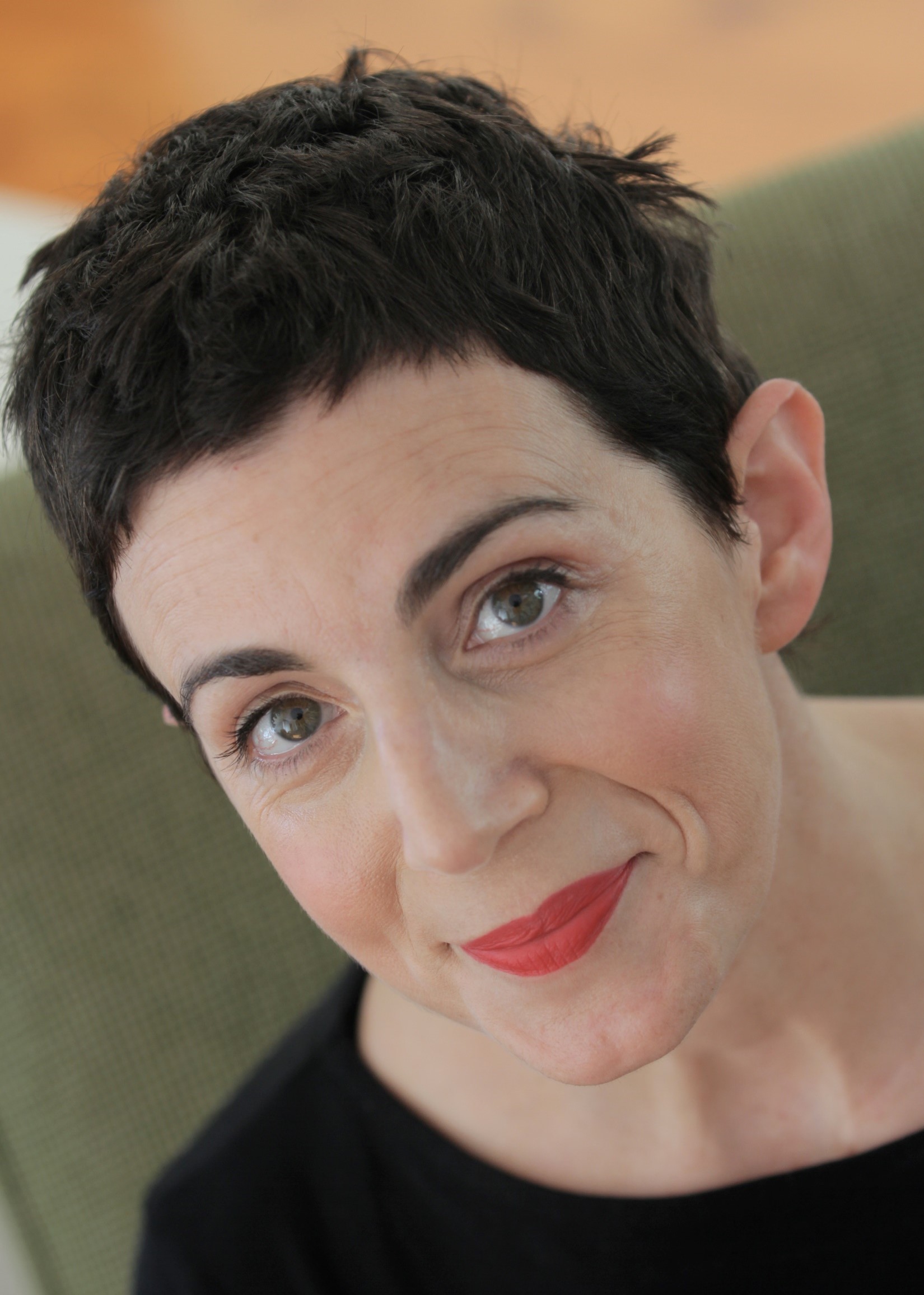
My research examines emotion in criminal justice processes. It considers the role that emotion plays, doesn’t play, and is expected to play, in the practice of law and justice. I study ill-defined emotion concepts (e.g. ‘remorse’, ‘empathy’ and ‘closure’) and how they are understood by, and inform the experiences of, people in the justice system. My work is interdisciplinary, combining anthropology, criminology, cultural studies, and creative practice.
What is the problem you aspire to solve?
Emotion plays a central role in law and justice and yet we are only beginning to understand precisely how. Part of the problem is that people routinely invoke emotion concepts without an interrogation of what is meant by them. For example, what is ‘remorse’? How do judges assess it? How do offenders enact it? What does the justice system want it to do?
My latest work is on ‘closure’. There is a widely held view that the criminal justice system can help provide ‘closure’ for victims of crime and their loved ones. However, ‘closure’ as a concept is amorphously defined; there is no agreement about whether it exists, or, if it exists, how it can be achieved.
What’s a recent success that you’re proud of?
Recently I was awarded an ARC Future Fellowship, which I am thrilled about. In the next four years I will examine how ‘closure’ functions as an emotion (and an emotional expectation) in the justice system and in people’s lives. This will be realised through an investigation into the ways in which bereaved families and police experience unsolved homicide. Despite the enormous public interest in unsolved homicide cases, very little research has been done on how they affect the people most impacted by them, nor how those people might be best assisted. I am working with the Homicide Victims’ Support Group, the police, and coroners, and will conduct fieldwork and interviews. An HDR study attached to the project will focus on the particular experiences of Indigenous families.
How will your research make the world a better place?
By transforming our understanding of emotion concepts, my research hopes to inform the working practices of judges, lawyers, parole authorities and police, and improve outcomes for victims and offenders. It will also potentially improve people’s personal lives. My research reaches large public audiences. This is because I use both traditional approaches and creative research methods (e.g. literary books, essays, documentary). My ‘closure project’ will use creative nonfiction techniques to secure new knowledge unable to be secured via other means. It will develop language – new modes of expression – that meaningfully situate people’s fraught experiences of grief, confusion and feelings of non-resolution.
Who inspires you?
I am inspired by trailblazing Australian nonfiction writers. Fifteen years ago, I was selected to participate in masterclasses with scholar and award-winning writer Drusilla Modjeska. Those 12 months were life changing: Drusilla showed me how essay and memoir forms could be blended with scholarly research to access fresh understandings of human experience. Since then I have received mentorship and support from other writers too, including Helen Garner, recipient of the 2016 USA Windham Campbell prize for nonfiction.
I am inspired by the many judges, magistrates and coroners I have encountered who embrace kindness as an organising principle. I have had the good fortune of collaborating with Hugh Dillon (former NSW Deputy State Coroner) and Judge Frank Gucciardo (County Court, Victoria) on projects regarding blame, forgiveness, and the shadowy workings of wisdom.
Who at Macquarie University deserves recognition for their outstanding contribution to Macquarie’s research effort?
The team at the Faculty of Arts research office provide outstanding support. They truly understand the nature of humanities, social science, and creative arts research, and the demands associated with such research and funding bids. (During the many weeks of writing my Future Fellowship application, I phoned/emailed them almost every day for advice!)
Being a woman in the field of academia brings particular challenges. I am so grateful to the many senior women at Macquarie who have modelled, and continue to model, sustained encouragement and tremendous generosity in their research mentoring.
What’s one piece of advice you would give to an early career researcher?
Take risks. Be audacious when it comes to conceptualising your research program. Embark on research projects that truly excite you.
May 2022
Spotlight on…Dr Haoran Ren - April 2022
Dr Haoran Ren, ARC DECRA Fellow, School of Mathematical and Physical Sciences, Faculty of Science and Engineering
What’s your area of research?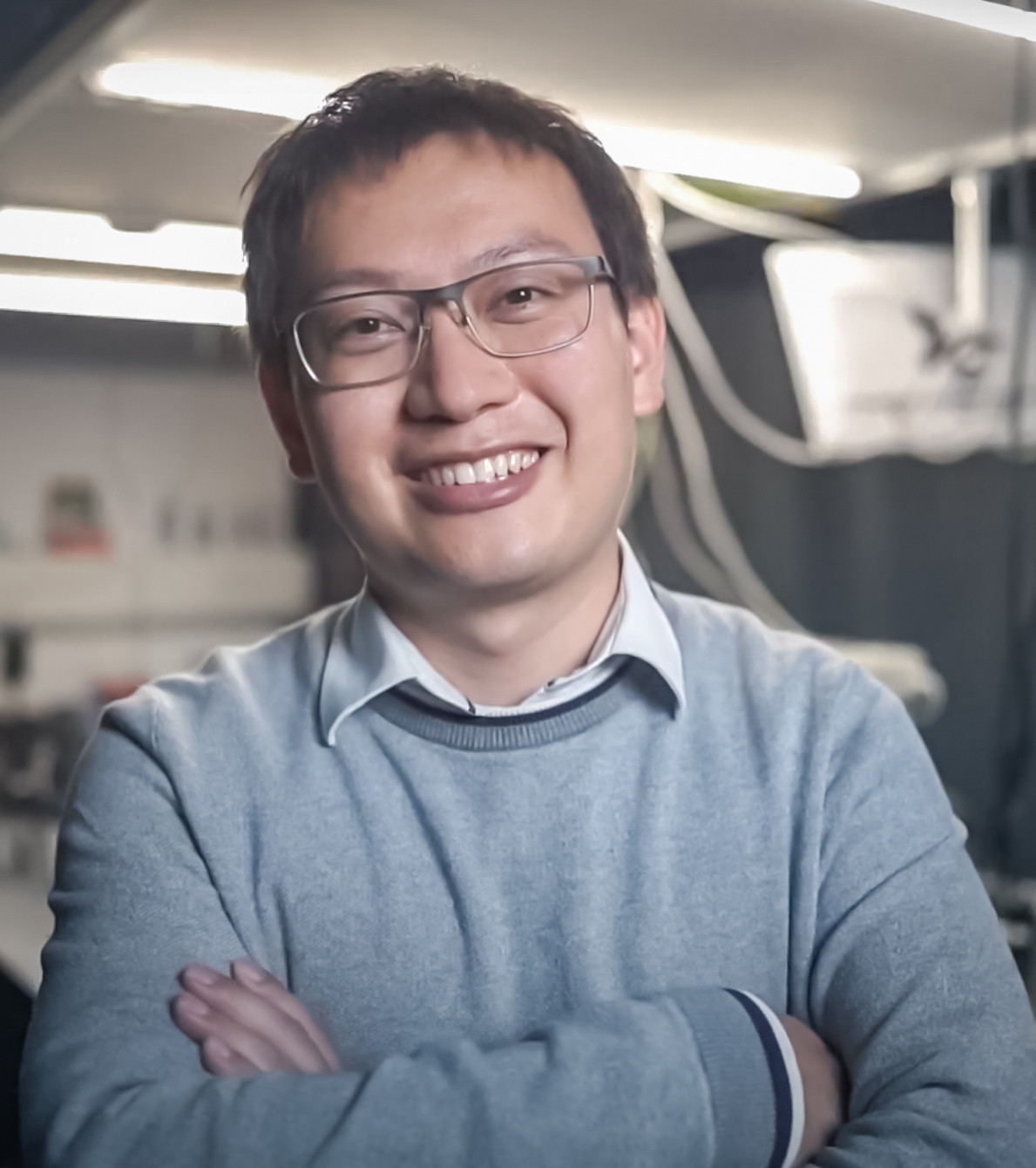
My research area is nanophotonics, with the goal to develop advanced optics and new optical materials to enable us to control light. I am interested in exploring new physics and applications of various nanostructures and optical materials and studying their light-matter interactions at the nanoscale. My current research focus, and the subject of my DECRA, is functionalising optical fibres, including fibre-optic endoscopes, through the use of ultrathin planar optical elements. The ultimate goal of this research is to create a better endoscope with enhanced imaging quality for the visualisation of the interior of the patient’s body.
What inspires you?
I am inspired to create direct impact for our nanophotonic research with both academia and industry. We have had great positive feedback on our work in metasurface holograms (ultrathin holographic devices) leading to more than a thousand follow-up research publications within the last three years. More importantly, I can see the potential impact of our nanophotonic devices for future photonic technologies. Photonic technology is a broad term: photonics is indeed prevalent today. For instance, fibre-optic internet in our homes and offices, lighting in our computer and TV screens, cameras in our smartphones are just a few examples of photonic devices. I am very pleased to see that our nanophotonic devices can be used for these real-world applications, and more pleased by the fact that the nanophotonic devices I am currently working on outperform other technologies. This gives me a strong motivation to strive for the best-performing nanophotonic research.
What’s a recent success that you’re proud of?
I am very happy that I was recently awarded an ARC DECRA fellowship. This will allow me to build up my own research group and put me on an exciting journey to be a research leader. The aim of this project is to design and interface multi-functional metasurfaces (ultrathin optical elements) with optical fibres for advanced all-on-fibre light control. We are also very pleased to receive funding for an ARC Discovery Project. It is a terrific opportunity for my colleagues and me to further expand our team to develop a nanophotonic chip that could replace the traditional bulky optical system used for the control of twisted light carrying high-bandwidth data.
Are you currently working on a grant or high-impact paper? What’s it about?
I am working with a vacation student and colleagues at the MQ Photonics Centre on initial studies for the ARC Discovery Project. We are investigating the effect of turbulence on light propagation in the atmosphere. I am also working on a paper with a PhD student at LMU Munich. We introduced a novel nanophotonic structure consisting of gold-coated polymer triangles, called 3D nano-fins, for ultrahigh-sensitivity refractive index and molecular sensing. We hope this work will end up with a high-impact journal paper.
What’s one piece of advice you would give to an early career researcher?
No reason for complacency. Seek out new mentors, colleagues, collaborators and work with them to expand your horizon and network.
April 2022
Spotlight on...Assoc Prof Tom Murray - March 2022
Assoc Prof Tom Murray, ARC Future Fellow, Department of Media, Communications, Creative Arts, Language and Literature, Faculty of Arts
What’s your area of research?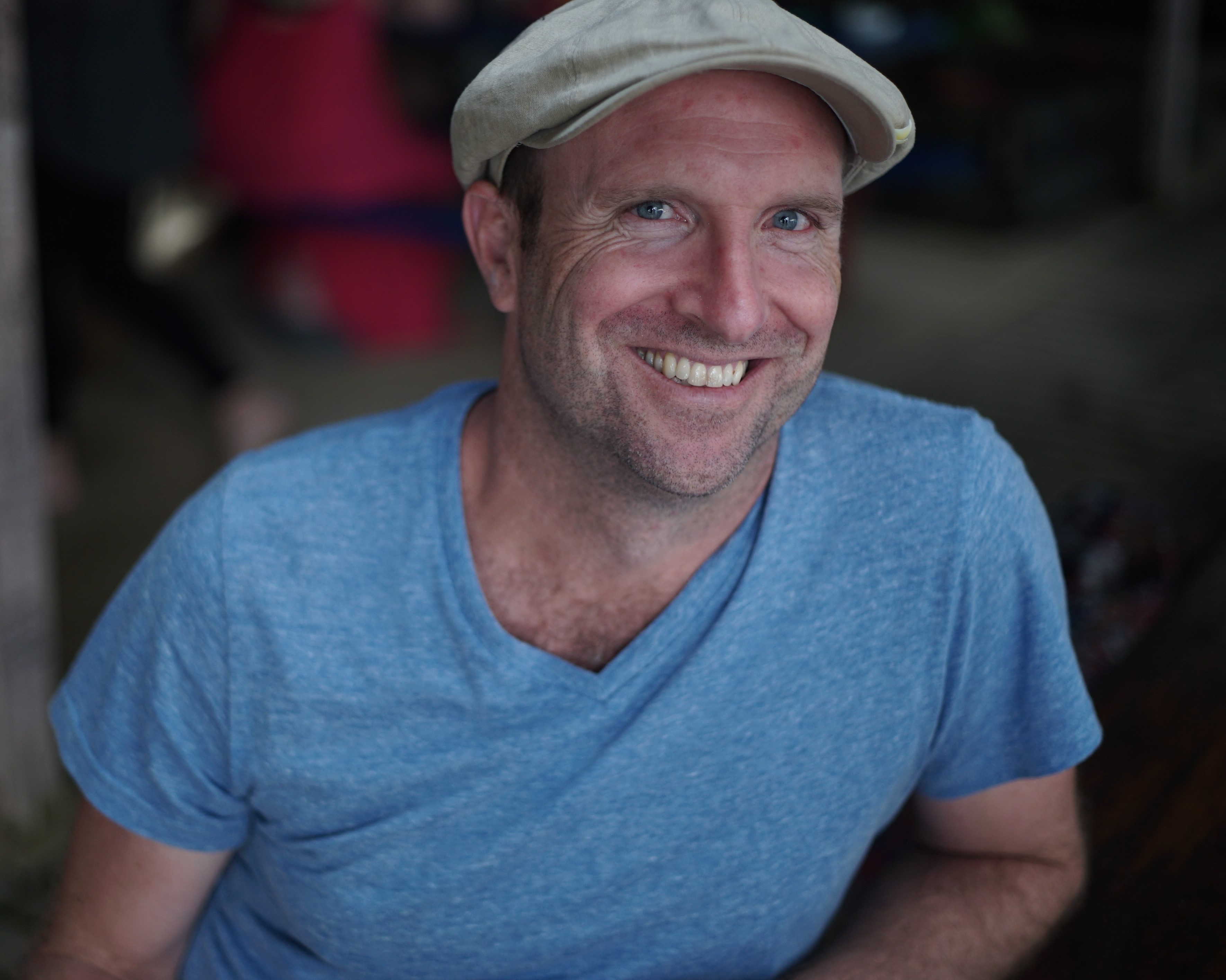
I am a documentary film-maker, audio-maker, writer, and story-teller. Much of my work has been about the colonial occupation of Australia and its impact on Indigenous Nations. I have made a number of documentaries in collaboration with Indigenous communities that personalise and particularise the colonial experience. These include Dhakiyarr vs the King about the consequences of a 1930s campaign to send soldiers to massacre Aboriginal people in NE Arnhem Land (because the traditional owners were thought to be resisting colonial law). Another project, In My Father’s Country, was about the Howard Government’s ‘Northern Territory Intervention’, and its impact on the culture and wellbeing of Arnhem Land communities. Most recently, I have told the story of Indigenous World War One hero Douglas Grant. It is a story that connects the Australian Frontier Wars, WW1, and today. It’s also a meditation on a more inclusive, environmentally and culturally-rich Australian future (currently screening on SBS On Demand: The Skin of Others).
Who inspires you?
My parents inspire me, in who they are as people and in what they’ve achieved. They were school-teachers who then became academics (not an easy journey if you were born into the post-war working-class in the north of England) – and they approach life and work with energy and curiosity. In fact, they’re both still teaching, and learning!
Beyond my parents, in my teens I was lucky to spend time under the wing of Sandra Egger – a formidable, tireless and brilliant law reform activist, educator, and scholar who was an advisor to NSW Premier’s Neville Wran and Barry Unsworth. She spent decades prosecuting arguments for law reform that sometimes became legislation (like the National Firearms Agreement in 1996). From Sandra I learnt that social change doesn’t happen because people sit in their living rooms and think something is a good idea – it requires vast amounts of targeted work. For a teenage idealist this was a profound thing to see in action!
Another inspiration is the educator, artist, and architect, Richard LePlastrier. He’s taught me many things, but to name just one: he explained that artists are the seers, they ‘see’ things first – and that art and design are agents of change. Another thing I learnt from Richard that has been important to the research I do, is that we think with and through the tools we bring to a problem. That you draw conclusions through the materials you contemplate with. Hence, a solution drawn in charcoal on paper might be different from a solution drawn in computer.
I’ve also been inspired by my adoptive family in NE Arnhem Land. In the 22 years that I have been visiting and living in the Homelands of NE Arnhem Land I’ve had many friends and teachers from the Wirrpanda, Maymuru, Gumana, Marawili, Yunupingu, and other families. They’ve inspired and expanded me in so many ways. They’ve demonstrated an entirely new worldview and although I’m only a child in knowledge of the Yolngu world, it’s still enough to blow my mind.
How will your research make the world a better place?
My research is often delivered in stories. Personal stories. National stories. Stories about the past, stories about the things we love and fear. Stories are a slow-burn change-agent. My mentors demonstrated to me that world-making requires the long-view. Social, cultural, and legislative change might take decades, generations. And it always takes huge amounts of work. When you look back at important moments of change-making and nation-building such as Medicare, gun law reform, the National Disability Insurance Scheme, and Marriage Equality – or you look forward to Indigenous Treaty and an appropriate Australian National Day, an adequate response to climate change, a global amnesty on destroying the natural world, proper arts funding, and addressing corporate greed and malfeasance, modern slavery, and gendered violence – so many people have put their shoulders to those world-making wheels. Including the story-tellers.
How do you fund your research?
As an audio and screen producer, my research has been funded by screen organisations and by the Australian Research Council. I’m currently trying to raise funds through NGOs, international funding schemes and philanthropy, to do some projects on climate-change impacts on the Pacific. I’m also producing a history film in Indonesia and the Top End that I’ll have to secure some additional funding for!
Who at Macquarie University deserves recognition for their outstanding contribution to the university’s research effort?
I’m really thankful to the Arts Research Office led by Jan Zwar (and Gill Ellis previously). They’ve been instrumental in helping establish creative-arts-based research as a legitimate research method and strategy. They’ve done so alongside research leaders such as Professors Kathryn Millard, Catriona Mackenzie, Robert Reynolds, Louise D’Arcens, the Faculty Dean Martina Mollering, the office of the DVCR, and Professor Sakkie Pretorius. Without this broad support, and the invaluable input of our departmental admin and technical team, our research area would not have blossomed, and we’d certainly not be in our current nation-leading position in the field.
So thank you to all these people! Their support and investment has certainly paid off! Just recently we’ve had MQ screen and documentary research projects at all of the major east-coast festivals including the Sydney Film Festival, Melbourne Film Festival, St Kilda Film Festival and Antenna Film Festival, and our work has been broadcast on national television and won major awards like the Victorian Premier’s History Award, ATOM Awards, Australian Directors Guild Award, Australian Screenwriters Guild Award, Australian Screen Editors Guild Award, APRA Screen Music Award, and we’ve won an ARC DECRA, two ARC Discovery grants, an MQ PGRF and two ARC Future Fellowships! These are successes built through years of support.
--
A/Prof Murray’s most recent film is currently screening on SBS On Demand: The Skin of Others
March 2022
Spotlight on…Assoc Prof Yuling Wang - February 2022
Assoc Prof Yuling Wang, ARC Future Fellow, School of Natural Sciences, Faculty of Science and Engineering
What’s your area of research?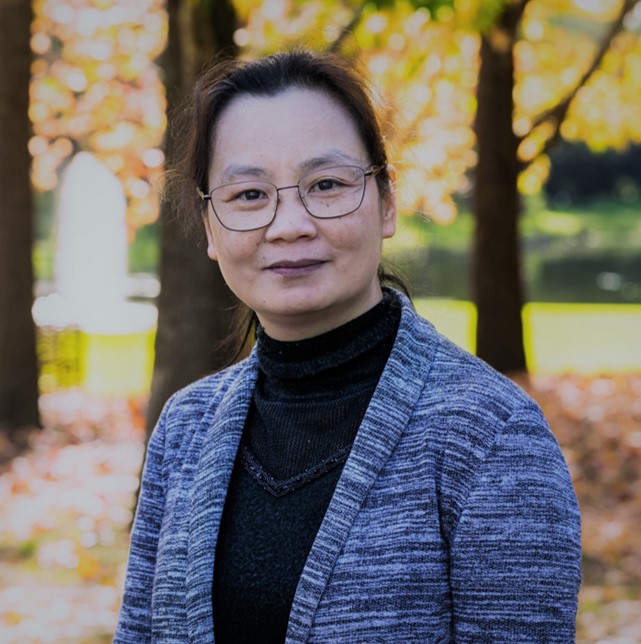
I am an interdisciplinary researcher working across chemistry, physics, engineering, and biomolecular sciences. My current research focuses on the development of platform technology that utilizes rationally designed multifunctional nanomaterials, spectroscopic techniques (e.g. surface-enhanced Raman scattering) and sensors for highly sensitive structural detection of disease biomarkers, with the aim to enable point-of-care testing and in vitro diagnostics.
What is the problem you aspire to solve?
Biomarkers hold much promise for the early and rapid detection of cancer and other diseases. In theory, multiple diseases could be diagnosed simultaneously at the point-of-care. But in reality, the lack of ultrasensitive technology is holding back the potential of biomarkers. My research effort is to provide innovative technologies that could rapidly and sensitively detect and monitor multiple biomarkers simultaneously in patient samples, thus delivering on the promise of biomarkers.
How do you fund your research?
It’s hard, but we try every single opportunity to seek funding through grants from the Australian Research Council, Cancer Institute, Macquarie University internal grants, as well as the industry-funded grant.
What’s a recent success that you’re proud of?
I have been recently awarded an ARC Future Fellowship, which I was so excited about. In the next 4 years, I will be able to work with world-renowned scientists to create an innovative and robust platform that will be used to profile the multi-omics signature of small extracellular vesicles secreted from host-pathogen interactions. We anticipate that this platform will be capable of delivering accurate sensing results and offering enormous potential for improved health and environmental outcomes, with applications in the life, agricultural and environmental science industries.
What’s one piece of advice you would give to an early career researcher?
Seek out a mentor who really cares about you. Set up regular meetings and prepare the meetings with your mentor.
What do you find most rewarding about your job?
Seeing students succeed in their projects, with publications, awards, and grant applications. I really enjoy working with students in the lab. Their success is also my success.
What do you find most challenging about your job?
Time management. I hate to do last-minute things, but I find it’s very challenging to get things done far before the deadline.
February 2022
Spotlight on…Assoc Prof Daniel Ghezelbash - January 2022
Assoc Prof Daniel Ghezelbash, ARC DECRA Fellow, Macquarie Law School, Faculty of Arts
What’s your area of research?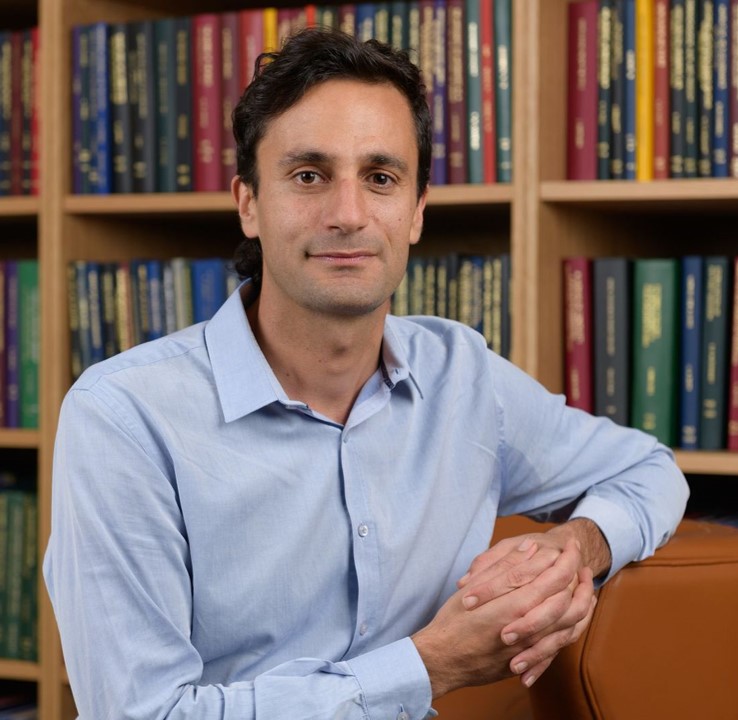
All my work is aimed at creating a more just and equitable legal system. Much of my work centres around ensuring asylum seekers and refugees can access protection. My research, as well as my practice as a refugee lawyer, strives to inform the development and adoption of more humane refugee and asylum policies in Australia and abroad. I’m also interested in the potential for technology to increase access to justice. This includes by helping lawyers do their jobs faster and better, allowing them to assist more people, as well as the use of tech tools to compile data and call out systemic discrimination in our legal system.
Who inspires you?
My parents. Their refugee experience fleeing Iran and settling in Australia is a huge inspiration for my work. I’m acutely aware of the privileges I’ve enjoyed because of that journey and the fact that I grew up in Australia – and I want other refugees to be able to access those same privileges.
What is the research question you aspire to answer or the problem you aspire to solve?
All my research starts by identifying a real-world problem I want to solve. One that I have been particularly interested in recently is how to win the hearts and minds of the public to support more humane refugee and asylum policies. Public support is essential for any policy change – so that fundamental question sits above all my other work. It’s one that has vexed refugee advocates for decades. I’ve teamed up with a crack interdisciplinary team of behavioural psychologists and philosophers to try and build an evidence base for what works and does not work in this space.
What’s a recent success that you’re proud of?
My recent ARC DECRA fellowship which looks at whether it is possible to speed up asylum processing, without compromising fairness. Fast and fair processing is in the best interest of refugees, reducing the time they spend in limbo, as well as saving costs for the government. The hope is that this win-win situation will make it easier to implement any policy recommendations coming out of the research.
I’ve also just wrapped up a really exciting residency at the ABC, as part of their Humanities ‘Top 5’ program. It was fun playing journalist for two weeks and getting training on how to best communicate complex ideas to a mass audience.
Are you currently working on a grant or high-impact paper? What’s it about?
The most exciting thing I’m working on write now is a series of papers which provide quantitative analysis of individual decision-making patterns of judges and tribunal members in refugee cases. With the assistance of a wiz student, we built a program which automatically processed and coded thousands of court cases, and we managed to get our hands on the tribunal data through freedom of information requests. The data provides unprecedented transparency into the way refugee cases are decided, and confirms the fact that a refugee's chances of success depend largely on what decision-maker they are assigned. Everyone working in the refugee space has suspected this for a long time, but it’s really exciting to have hard proof, which I hope may create some pressure for better and fairer decision-making going forward.
What’s one piece of advice you would give to an early career researcher?
I’m only 5 years out of my PhD – so I’m still trying to figure out things myself! But I think one of the most important skills to develop in academia is to accept and embrace rejection. If you are not regularly having your papers rejected or grant proposals knocked back, you are not aiming high enough. The best papers I’ve had published have been rejected multiple times – but with valuable feedback that I implemented and contributed to the papers eventually being picked up by high calibre outlets. I’ve literally lost count of how many ARC grants I’ve been knocked back on (4 or 5?). Every failure was a valuable learning experience which laid the groundwork for my successful DECRA application this year.
What do you find most rewarding about your job?
Inspiring the social justice lawyers and advocates of the future. I was at a training session run by Refugee Advice and Casework Services and one of the big law firms in the city to train lawyers to run judicial review cases for refugee applicants. Half the room were former students of mine, that were all in commercial practice, but had given up their time pro bono to be there and help refugees. That was a really moving moment for me.
What do you find most challenging about your job?
It would be the fact that I am working in such an adverse political environment. It is difficult devoting your life and work to a cause – and watching things just go from bad to worse year in year out. But it’s the small victories that keep me motivated, whether its securing a visa for a refugee client, or contributing to a rare progressive reform, such as the Medevac Bill a couple of years ago (which was unfortunately repealed shortly thereafter by the government).
January 2022
Spotlight on…Prof Mark Hancock - December 2021
Prof Mark Hancock, Department of Health Professions, Faculty of Medicine, Health and Human Sciences
What’s your area of research?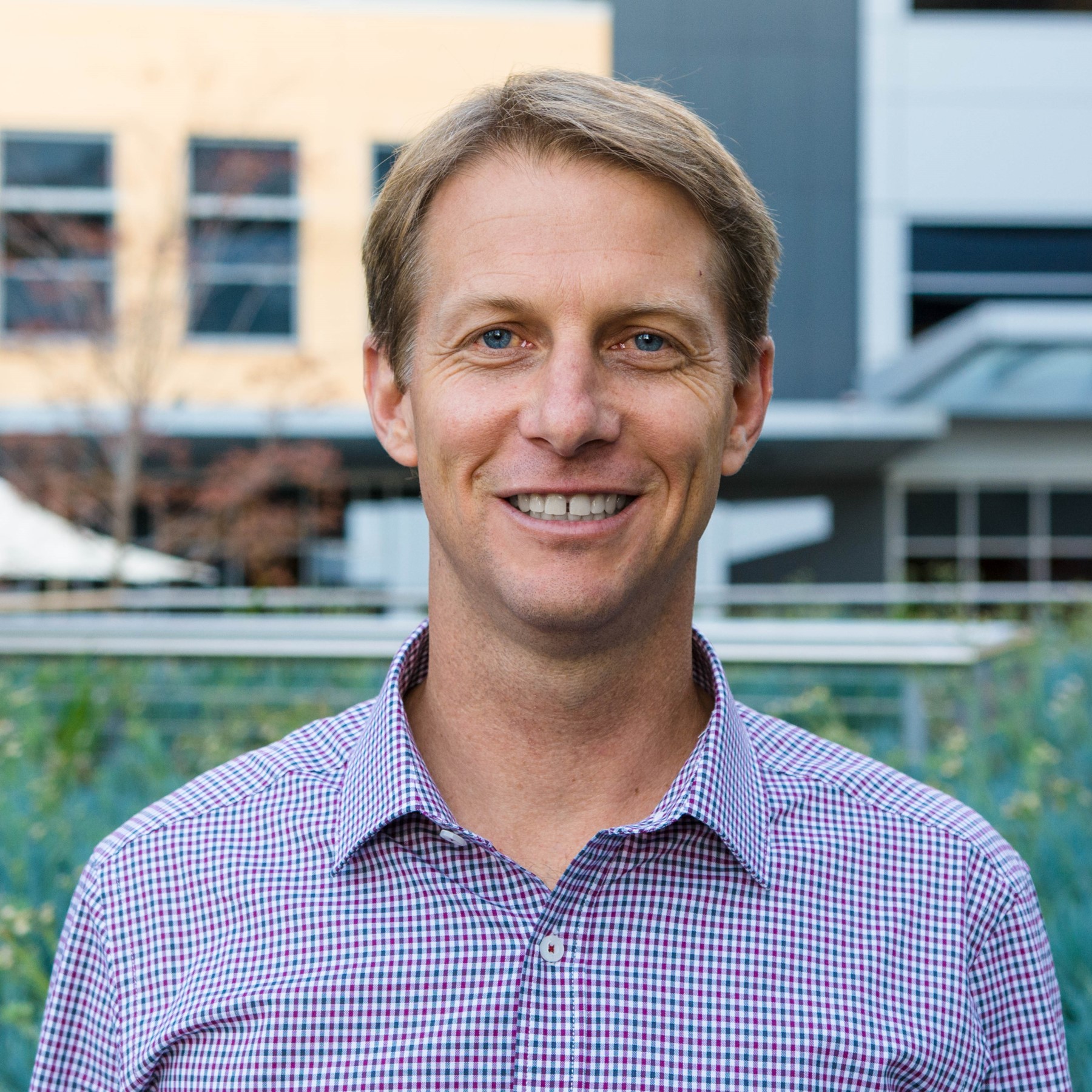
My research area is musculoskeletal health conditions, in particular back pain. I conduct a wide range of studies, from those aiming to better understand the risk factors and causes of back pain, through to clinical trials and implementation studies. The ultimate goal of my research is to improve health care and health outcomes for people with back pain.
What is the research question you aspire to answer or the problem you aspire to solve?
Back pain is a recurrent condition, and most people have multiple episodes. If we can develop highly effective prevention strategies this would greatly reduce the personal and societal burden due to back pain. One of our current NHMRC funded clinical trials is investigating if an individualised walking program can prevent recurrences of back pain. If anyone is interested in participating, you can find out more on our trial website.
How will your research make the world a better place?
Back pain is the leading cause of global disability and enormously costly for individuals and societies. Unfortunately, many people receive interventions that are not evidence based, resulting in poor outcomes and waste of health resources. Our research aims to both develop more effective interventions and improve the care received by people with back pain.
How do you engage with end-users of your research?
We have not always done this well, but more recently we have realised how important it is. We now try to include patient and clinician collaborators in much of our work. Our NHMRC Centre of Research Excellence is developing clinician, patient, and funder advisory groups.
What’s a recent success that you’re proud of?
We recently received MRFF funding to investigate a new model of care for low back pain. The study will determine the effectiveness of integrating a musculoskeletal clinician (physiotherapist or chiropractor) within general practitioner’s (GPs) clinics for patients with low back pain. The study will evaluate the effect of this new approach on patient health, health system, and societal outcomes.
What’s one piece of advice you would give to an early career researcher?
Find a really good mentor. My career has been enormously enhanced by wonderful and generous mentors.
What do you find most rewarding about your job?
There are a number of things I love about my job particularly working with really clever and interesting people from all around the world. I also really enjoy rapidly sharing our research findings with our Doctor of Physiotherapy students.
Who at Macquarie University deserves recognition for their outstanding contribution to the university’s research effort?
Many people make an outstanding contribution to Macquarie University’s research effort, but two immediately come to mind for me. Viviana Bong does a wonderful job supporting our HDR students and the staff supervising HDR students. Kyle Ratinac (FMHHS Research Manager) provides wonderful support to researchers in our department and faculty.
December 2021
Spotlight on…Dr Claire Wright - November 2021
Dr Claire Wright, ARC DECRA Fellow, Department of Management, Macquarie Business School
What’s your area of research?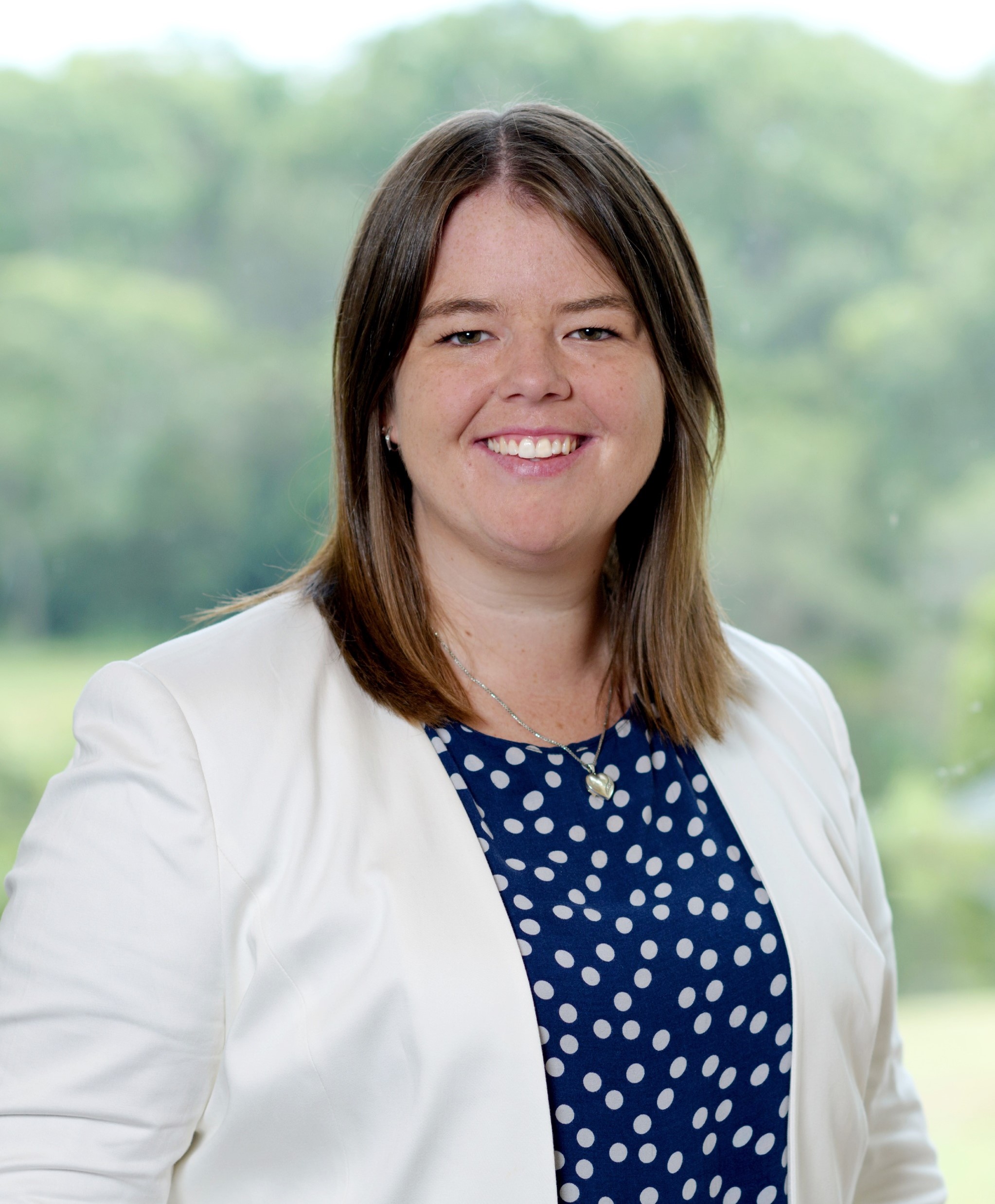
I’m a business historian, so I look at how corporations develop over the long run. My focus over the last few years has been on Australia’s very large corporations across the twentieth and early twenty-first centuries, the way companies appoint leaders (board members and executives), and their impact on company strategy. My specific focus at the moment – and the subject of my DECRA – is Australian women corporate leadership from 1910 to 2020, including the diverse ways women have impacted firms, their long-term pathways to leadership roles, and the impact they have had on decision-making and governance.
How will your research make the world a better place?
I hope that by better understanding how women have found their way into leadership roles in the past, I can improve strategies to support them in the future. I would also like to broaden the type of women who have access to leadership roles, not just the privileged few who are currently corporate leaders, but those from a range of backgrounds and with different ideas and skills to bring to the table. We know that diversity in leadership can be transformational for firms and for society, and I hope to play a small part in helping bring about that change.
What’s a recent success that you’re proud of?
I feel proud about the recent DECRA result. Applying for a DECRA takes several months of your own labour and that of your supervisor and the excellent research office staff. The result then takes close to a year to come out, and you’re probably going to have to do it all again. You’re up against some wonderful applications (many of whom are friends and colleagues), and there is a very low chance of success. It is a humbling experience, and one that has taught me patience and resilience. I am very happy (and still a little shocked) that my application was successful.
What’s one piece of advice you would give to an early career researcher?
Firstly, hey, I know it’s tough out there, you’re doing great. My primary advice is to be nimble. The early-career stage is a great time to try new projects, work with new colleagues and see where your research takes you. Job searches and grant applications are very competitive, and having skills and contacts across multiple areas is going to be useful.
What do you find most challenging about your job?
It can be really hard to discover new things! Part of the reason there may be a gap in the literature is that it’s not interesting or important, or it might not even be possible to answer the question. Research is often independent to some degree, and I sometimes suffer from a lack of motivation, procrastination, disinterest or distraction. Especially during lockdown, I’m sure I’m not the only one who has felt the clutter and brain fog!
What do you find most rewarding about your job?
It is also very exciting to discover new things! I also enjoy connecting my research to current events, using what I know to broaden or deepen important public conversations. It’s important work to do, and I feel grateful to be able to do it.
November 2021
Spotlight on…Dr Fatemeh Salehi - October 2021
Dr Fatemeh Salehi, Senior Lecturer, School of Engineering, Co-Director, Macquarie Sustainable Energy Research Centre, Faculty of Science and Engineering
What’s your area of research?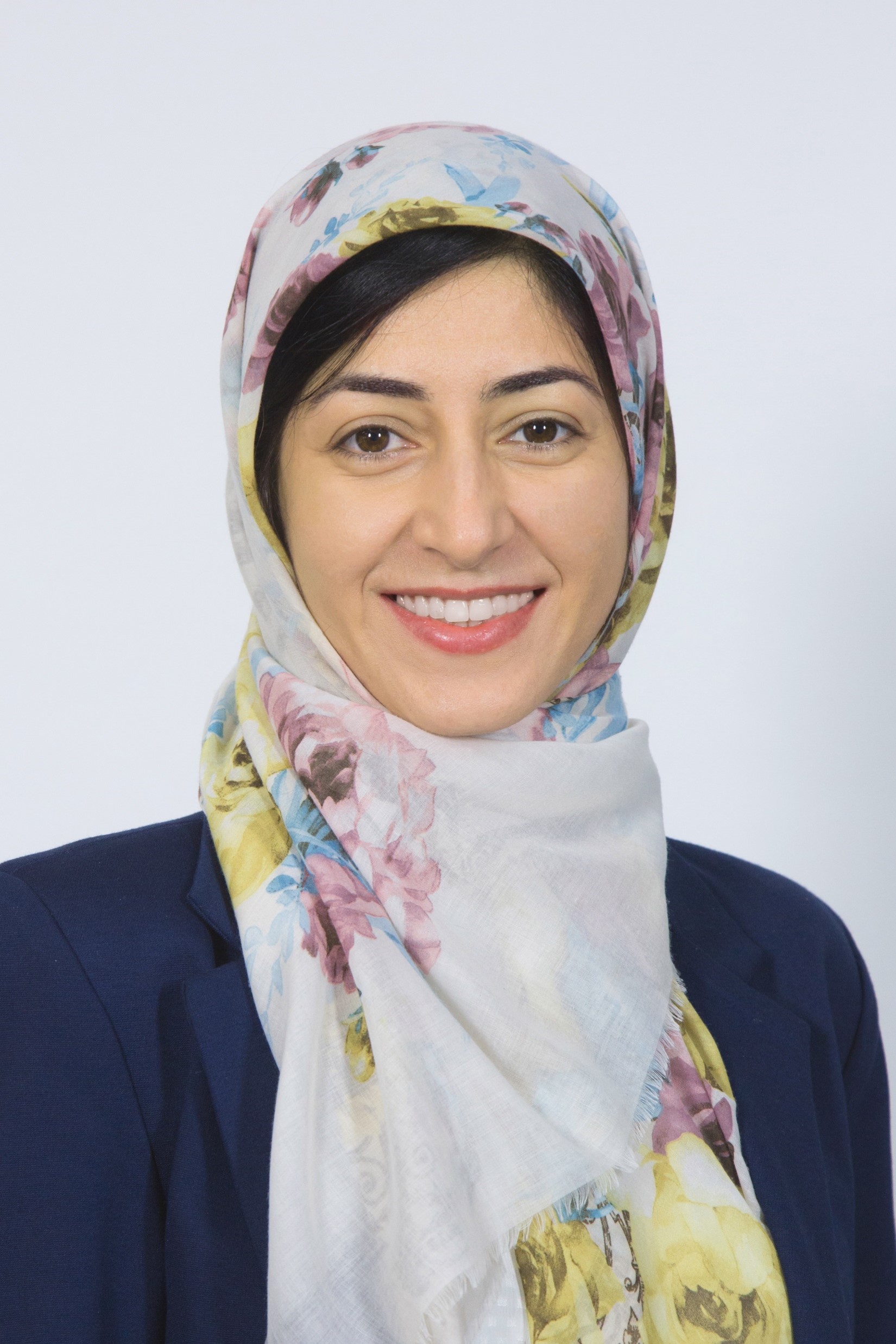
My research aims to develop computational models to predict fluid flows in different engineering applications. I am particularly interested in understating the particles and droplets evolution in turbulent flows which are relevant to various applications from clean engine technologies to drug delivery systems. I use computational fluid dynamic (CFD) techniques and machine learning algorithms to advance accurate, reliable, and cost-effective computer tools for such flows. These models enhance our understanding of flow behaviour and provide the base for the development of new technologies which are more optimised, sustainable and cost-effective.
How will your research make the world a better place?
I am very passionate about the environment and I hope that my research on clean energy technologies contributes to a faster and smoother transition from fossil fuel combustion technologies to safe and sustainable energy technologies that use clean fuels such as bio-oil and hydrogen.
What’s a recent success that you’re proud of?
I have been recently awarded a Fulbright Scholarship. As a Fulbright Scholar, I will spend four months at the world-class clean energy laboratory at the University of Michigan to create a new cost-effective computer tool for modelling spray flows in combustion devices. This will assist the design of engines with extremely low emissions. The significance of such accurate spray models will also benefit other applications, notably flame spray pyrolysis for nanoparticle synthesis and inhalers.
What do you find most rewarding about your job?
Continuous learning! I equally enjoy learning from my students and from my colleagues who are world-class researchers in the field. I’ve also found it rewarding to see my students become successful. I feel their success is also my success.
What do you find most challenging about your job?
The funding resources are very limited which makes the research environment highly competitive. Sometimes it is difficult to stay motivated and inspired after receiving a rejection. However, it is a part of our job and happens to everyone! As I’ve gained more experience, I’ve learned that you can see any rejection as a new opportunity! For example, I worked on a grant application which wasn’t successful but it has created a new collaboration opportunity for me.
October 2021
Spotlight on…Prof Bamini Gopinath - September 2021
Prof Bamini Gopinath, Cochlear Chair in Hearing and Health, Macquarie University Hearing, Faculty of Medicine, Health and Human Sciences
What’s your area of research?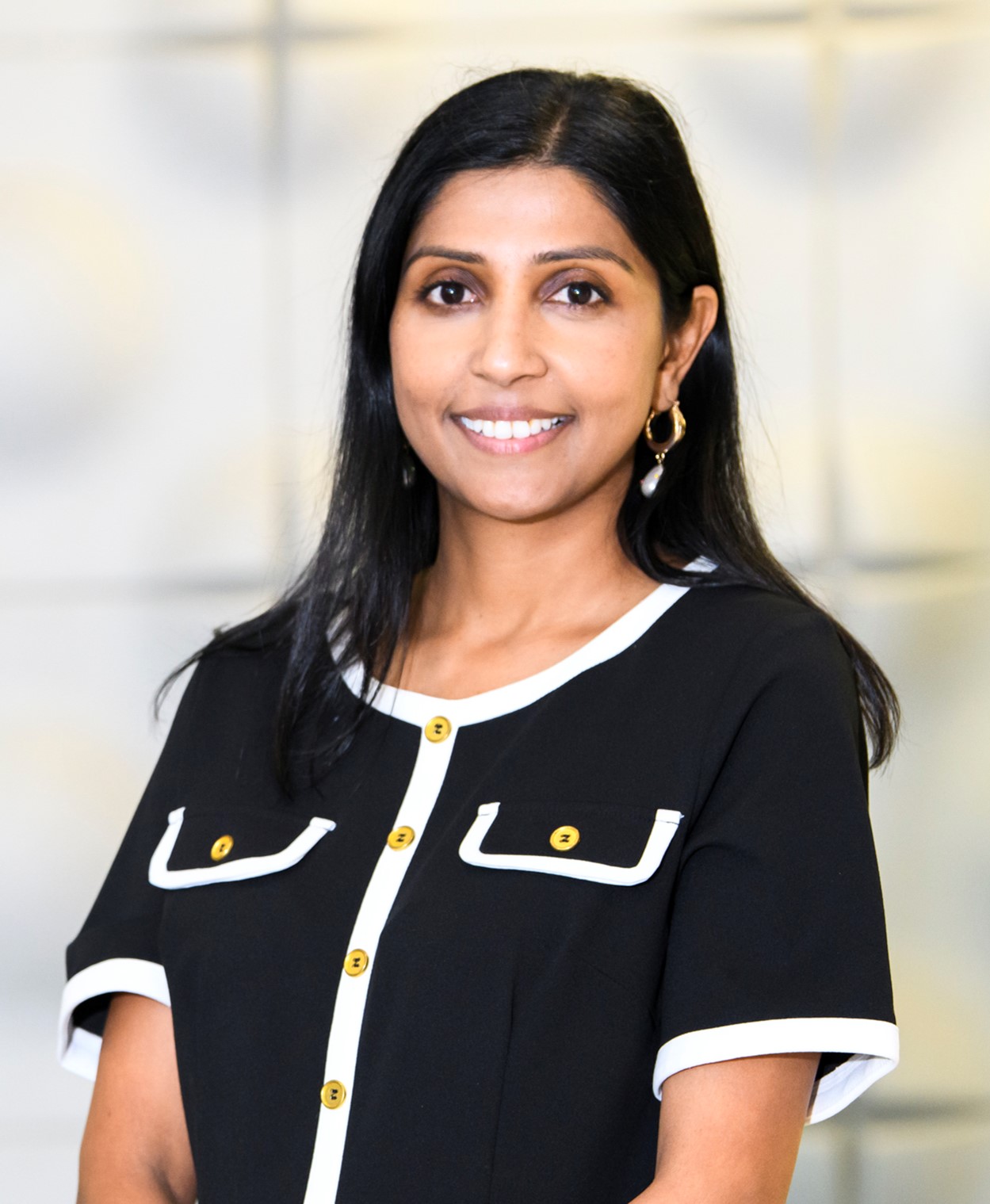
My area of research is public health and epidemiology. Specifically, I am focussed on using data collected through large population-based studies and clinical registries to establish the prevalence, risk factors and impacts of sensory loss, primarily vision and hearing loss in adults. I then seek to apply this new knowledge to design, implement and evaluate preventive strategies targeting specific risk factors; as well as evidence-based interventions that addresses the negative health and social impacts associated with sensory loss.
What is the problem you aspire to solve?
There are challenges that still exist in terms of achieving best-practice and optimal outcomes for hearing impaired adults. Consequently, a substantial number of adults are likely to continue to experience the physical and psychosocial impacts of untreated hearing loss. We aim to tackle this problem by bringing a public health perspective to hearing research that goes beyond audiology and one which encompasses broader health and social outcomes such as quality of life, cognition, functional ability and social participation across the life course.
How will your research make the world a better place?
We hope that our research catalyses real transformation of the hearing loss landscape and thereby, ensure a world that is accessible, inclusive and respectful for people living with hearing loss and one that is centred on the diversity of lived experience.
What’s a recent success that you’re proud of?
We were pleased to receive funding from Department of Health in 2020 to conduct the Second National Eye survey, and more recently we received support through Macquarie University to include an ear health component as part of this survey. This will allow us to examine 5,000 participants including Indigenous and non-Indigenous Australians across 30 sites in Australia, aiming to provide contemporary data on the state of vision and hearing health. The survey will start to recruit participants in late 2021/ early 2022 and will take about 2 years to complete.
What’s one piece of advice you would give to an early career researcher?
Seek out multiple mentors both within your field and outside of the field as early on as possible in your career. Their advice, feedback and guidance as you progress through your career is invaluable. They are also likely to ‘open doors’ for you and introduce you to their local and/or global network of collaborators, leading to opportunities that otherwise may be available to you.
What do you find most rewarding about your job?
The nature of our job means that I get to learn something new almost every day, there is always some new research study that contributes some piece of new knowledge to the existing evidence-base. This in turn inspires us to consider a new approach or strategy to tackle our research question(s) of interest. Additionally, it has been extremely rewarding helping the next generation of public health researchers to develop new skills and build their expertise and become independent researchers themselves.
What do you find most challenging about your job?
The most challenging aspect of my job is the increasingly competitive nature of category 1 and 2 grant funding schemes. For example, success rates for most NHMRC grant and fellowship initiatives have decreased substantially in the last few years, which has meant that sometimes quite innovative and impactful research has not been funded.
September 2021
Spotlight on…Prof Javier Álvarez-Mon - August 2021
Prof Javier Álvarez-Mon, Professor in Near Eastern Archaeology and Art, Department of History and Archaeology, Faculty of Arts
What’s your area of research?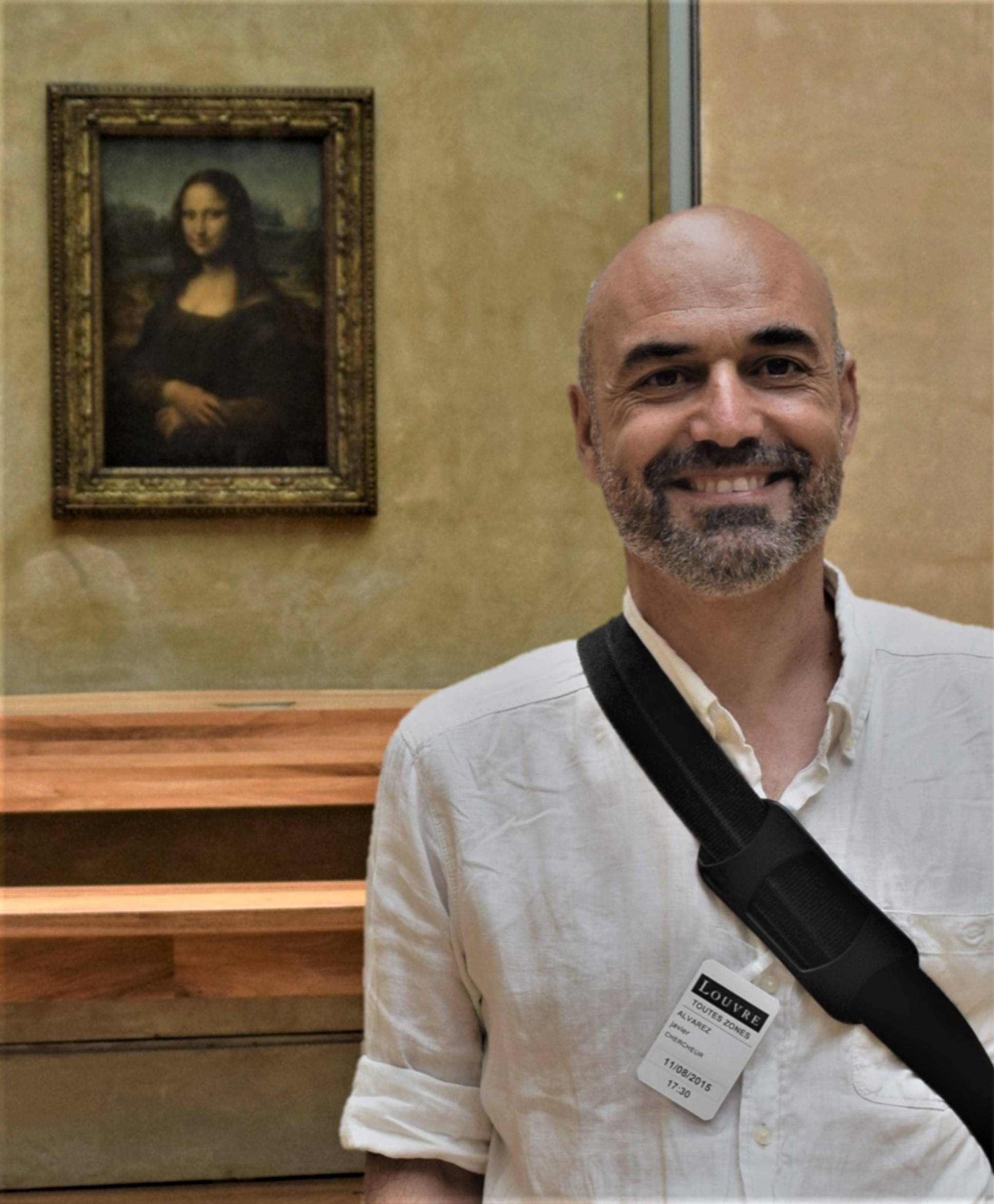
I am an archaeologist and art historian specialized in the ancient Iranian civilization of Elam (ca. 4200-525 BC) and its legacy to the early Persian empire (ca. 550-500 BC). Elam is hardly a household name, and of the civilizations to have participated in the dynamic processes of contact and interchange that gave rise to complex societies in the Near East it has remained the least known. My research uses the laboratory of ancient Elam, a goldmine for ancient historians, to articulate the emergence and evolution of complex society—from the first villages to towns, kingdoms, states, and empires.
Who inspires you?
My father. He was a mountain guide who taught me the love of nature, the path of empathy and compassion, and working with purpose without losing hope. He was also a staunchly independent and honest man, mixing humour with sharp criticism of consumer societies driven by the acquisition and accumulation of material goods and the commodification of the natural world.
What inspires you?
The “holy book of nature”, to borrow from Goethe. To me, nature is the mirror in which to contemplate the measure of my place in the universe. Whenever I need to recharge my batteries, I seek solace in the incredible natural world of Australia, its awesome landscapes, trees, and wildlife. Applied to my research this experience has helped me to recognize associations between religious experience, whether in temples or open-air highland sanctuaries, artistic creativity, and features of the natural world such as rivers, waterfalls, caves, lakes, trees, mountains, etc.
What is the research question you aspire to answer or the problem you aspire to solve?
Capitalizing on recent archaeological discoveries and advances in our understanding of the art of the Elamite civilization (c. 4200-525 BC) my next project aspires to rearticulate the identity of one of the most celebrated geo-political entities of all time, the Persian empire (c. 550-323 BC). By privileging native Elamite traditions, rather than perceived foreign influences, a redefinition of Persia as heir to Elam will present a new paradigm of artistic continuity between Elamite and Iranian populations and induce a seismic shift in the traditional, c. 2,500 years old, understanding of Persian artistic, socio-cultural, and religious identity. By presenting a radical new concept, that the genesis of the Persian empire was a local and indigenous phenomenon, it promises to revolutionize our understanding of the cultural heritage and identity of “Persia,” which has long been embedded in western European scholarship and popular imagination as the Other to “the West”, while still, ironically, being understood, described, and explained in Western terms and values.
How will your research make the world a better place?
I believe the historian plays a critical role in a healthy democracy by providing a record of the past based on facts and informed interpretations. Within my own discipline, my work aims at re-humanizing the function and value of art history as a critical tool for the retrieval of past experiences and responses to the world. This approach positions the art historian in a privileged position to examine intellectual and emotional human experiences articulated by the artistic record (i.e., birth, childhood, ageing, death, family, community, love, faith, health, wealth, suffering, injustice, vulnerability, aesthetics, and more). This is a pragmatic, contextualizing, approach to the understanding of the nature of art; it suggests that to know what art is, we need to know what art does.
What’s a recent success that you’re proud of?
Last year I published The Art of Elam (ca. 4200-525 BCE), to date, my Magnum Opus. This book represents almost two decades of work documenting and analysing Elamite artefacts in museum collections around the world and in situ at archaeological sites in southwest Iran. Illustrated with 1450 photographs, 190 line drawings, and digital reconstructions of hundreds of artefacts—some of which have never before been published—it offers a view of, and a critical reflection on, the art history of one of the world’s first and least-known civilizations, illuminating a significant chapter of our human past. This work has already attracted international accolades, being praised by leading scholars in archaeology and art history including Sir John Boardman (Oxford).
What do you find most rewarding about your job?
Working on a large time-scale discipline that lends itself to the formulation of questions that have not been asked before. The thrill of discovery lurks in every corner!
If you were given a $200,000 research grant, what would you do with it?
Since I am in possession of the largest ever digital recording of Elamite art and artefact collections, I would reinforce Macquarie University’s current position as the world center of Elamite studies by gathering a team of specialists to help me with the creation of an on-line Museum dedicated to the preservation, study, and promotion of Elamite civilization.
August 2021
Spotlight on…Dr Sasha Tetu - July 2021
Dr Sasha Tetu, Senior Lecturer, Department of Molecular Sciences, Faculty of Science and Engineering
What’s your area of research?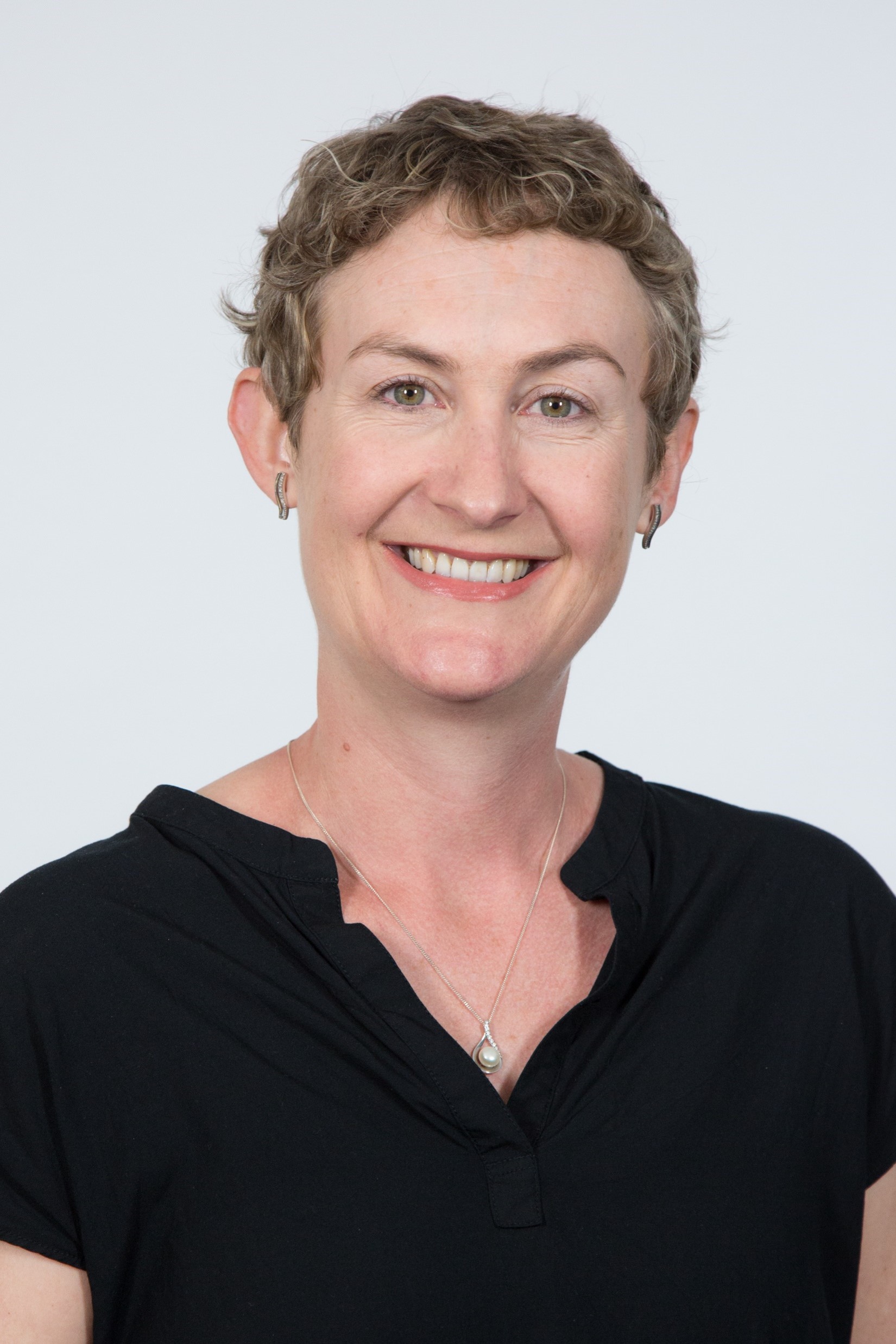
My research looks at what kinds of microbes are present in different environments and what factors lead to certain microbes being more or less successful in a particular habitat. I also look at how bacteria adapt to different environmental pressures.
Many bacteria are amazingly adaptable, able to pick up new genes from the environment and use this new genetic information to deal with challenging conditions. In the past microbiologists have mostly thought about this from the perspective of disease, but I am interested in exploring how we can use this to our advantage and put bacteria to work, producing things of interest or helping to clean up environmental pollutants.
What inspires you?
I am inspired to tell the story of how critical bacteria are to good health in people, plants and animals, and also the planet.
Bacteria have had mostly bad publicity in the past, being considered mainly as disease-causing “germs”. Happily, this has started to change, and more people are learning about how bacteria can contribute to good health, due largely to interest in the gut microbiome. I hope to help to extend this awareness of the usefulness of bacteria, highlighting how bacteria contribute not just to our health, but also to healthy growth of plants and animals as well as supporting ecosystem health on land and sea via contributions to the food chain and nutrient cycling.
What’s a recent success that you’re proud of?
I am part of a team which was recently awarded an ARC Linkage Project to support industry-linked research into how drones might contribute to revegetation efforts here in Australia. My part will be looking at whether drone-planted seeds may benefit from a coating of “good microbes” to help with native seed germination and plant growth in efforts to revegetate degraded land.
It is fantastic to be involved in applied microbiology research with potential conservation outcomes and have a chance to collaborate with my good friends in plant biology.
Are you currently working on a grant or high-impact paper? What’s it about?
I am working on a paper at the moment that I hope will be high-impact. It is the last piece of work from my DECRA fellowship research project, looking at how plastic pollution affects key marine photosynthetic bacteria that underpin marine food webs.
We exposed communities of marine microbes to the mix of substances that leach from a common type of plastic and looked at how different types of microbes responded. We found that some microbes grow better, suggesting that these may be able to use some of the substances leaching from the plastic. Unfortunately, however, almost all of the photosynthetic microbes stopped growing when exposed to these plastic leachates, indicating that these chemicals were toxic to important groups of organisms.
This research is important as we generally rely on microbes coping with, or even helping to clean up our pollutants, but this shows that some important microbes will not survive such exposure. Our findings show plastic pollution has the potential to affect ocean health, as photosynthetic bacteria support the marine food chain and are critical to carbon cycling. Hopefully these findings will help provide further evidence for why we should not treat our oceans as rubbish dumps!
What do you find most rewarding about your job?
Being able to interact with a great group of colleagues – I have been fortunate to have had a fantastic group of supportive work mates across all my years here at Macquarie, which has helped me to stay motivated and keep my head up when funding applications don't come through.
I also enjoy being able to teach a new group of students each year about all the roles the microorganisms play in human heath, industry, agriculture, etc. If some proportion leave with a better understanding of good handwashing technique AND an idea of what is now possible in modern day microbiology, I’m happy.
What do you find most challenging about your job?
Balancing all the research, teaching and administrative obligations whilst still finding time to hang out with my partner and two primary school age children – I am all too aware that the window of time where my kids want me to play lego and read to them won’t last forever!
July 2021
Spotlight on…Assoc Prof Nengye Liu - June 2021
Assoc Prof Nengye Liu, Director, Centre for Environmental Law, Faculty of Arts
What’s your area of research?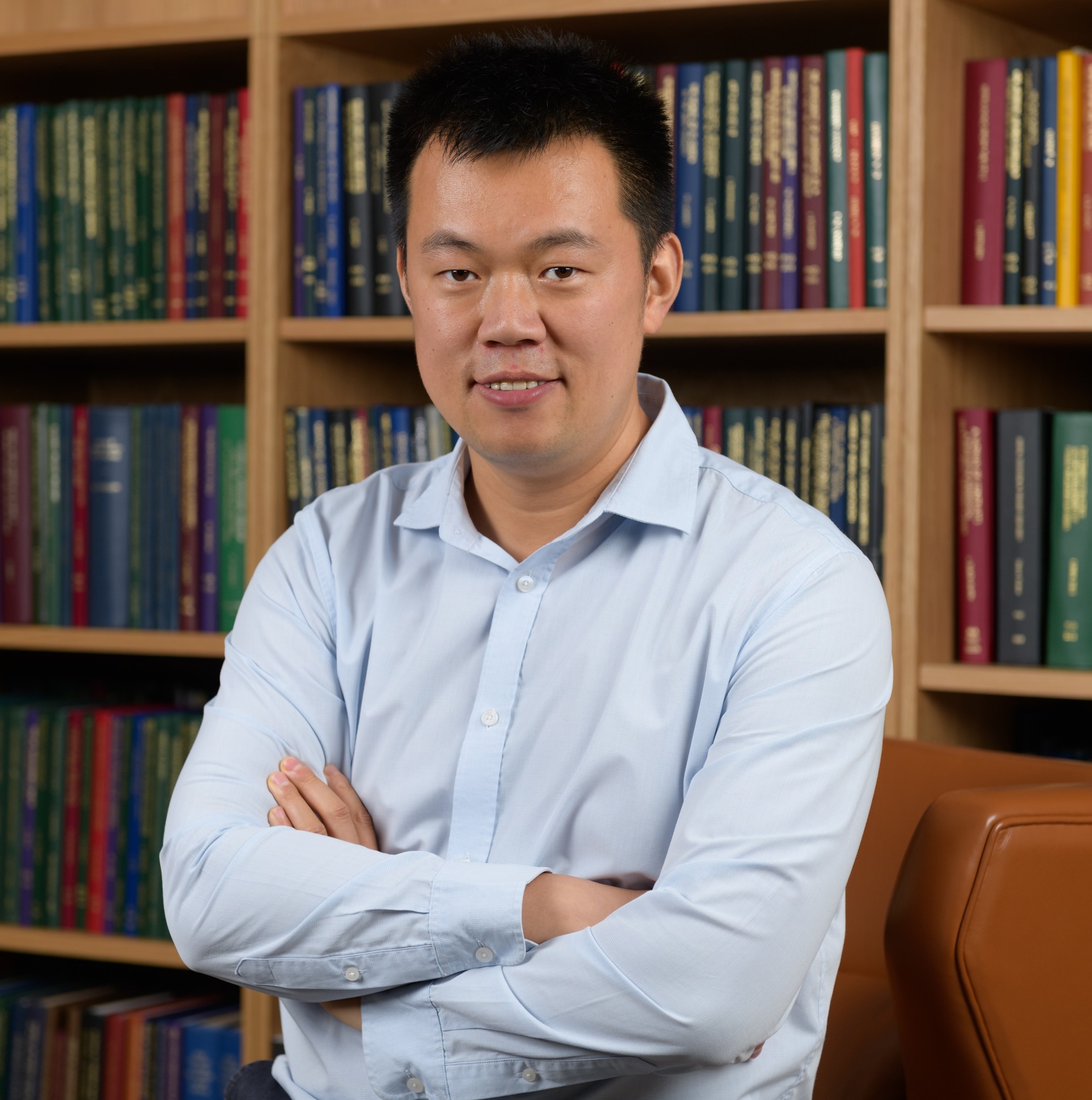
I am an international lawyer with a research focus on global ocean governance. I am also Director of the Centre for Environmental Law at Macquarie University, the oldest continuously research active environmental law centre in the southern hemisphere. Together with my team, we are collectively driving transformative change to address the global challenge of biodiversity loss and mass extinction from a legal perspective.
Who inspires you?
My wife and colleague Dr Michelle Lim is the most inspiring person in my life. Our relationship is the constant source of positive transformative change at the personal scale.
What inspires you?
Nature, mighty nature. For example, in 2019, I went to the southern tip of Latin America. It was at that moment – standing in front of Patagonia, the world’s third largest ice-sheet, I began re-imagining human-nature relationships. The urgency of such re-imagining has been underscored by the COVID-19 pandemic.
What is the research question you aspire to answer or the problem you aspire to solve?
Geopolitical and global environmental change, technological advancement as well as associated increases in human activities are posing great challenges to existing governance regimes in those few remaining parts of the world’s ocean relatively untouched by human exploitation. One of the big questions I aspire to answer is how the international community could best govern the final frontiers of our planet (Arctic, Antarctica, deep seabeds and high seas) for a peaceful and sustainable future.
How do you inspire or encourage women, Indigenous Australians, other minorities or under-represented groups into your discipline?
Being myself from a minority background in Australia, I am very much attuned to intersectional issues which occur across societies. I believe the best way for encouraging others is to inspire by the power of examples (as Joe Biden said). For example, in our Centre for Environmental Law, our team comes from a highly diverse background. So we have been working together in a very cohesive way on biodiversity law and governance.
How do you fund your research?
Over the past decade, I have been lucky to succeed in several Category 1, 2 and 3 grants. But of course, generous institutional support such as study leave and research assistance are equally important for conducting my research.
What’s a recent success that you’re proud of?
In February 2021, the Centre for Environmental Law launched its first ever webinar series “Law & Nature Dialogue”. Our vision is to consolidate our status as a globally leading hub for biodiversity law and governance. We are very fortunate to have prominent experts from Australia, Belgium, China, New Zealand and the United Kingdom to speak in this series. I am very proud and still shocked to see overwhelming responses from every corner of the planet. The first webinar on 22 February 2021 received more than 200 registrations across five continents.
Are you currently working on a grant or high-impact paper? What’s it about?
The team in the Centre for Environmental Law is currently working on our Manifesto, which will lay a solid academic foundation for the Centre’s future. The Manifesto will demonstrate our understanding on how to drive transformative change to living in harmony with nature. We are going to demonstrate our understanding about the role of law in this process. What law can and should do in driving this change.
What’s one piece of advice you would give to an early career researcher?
Publish or Perish. It is one single (and perhaps harsh) piece of advice I would like to give to all early career researchers.
June 2021
Spotlight on…Assoc Prof Simon McMullan - May 2021
Assoc Prof Simon McMullan, Department of Biomedical Sciences, Faculty of Medicine, Health and Human Sciences
What’s your area of research?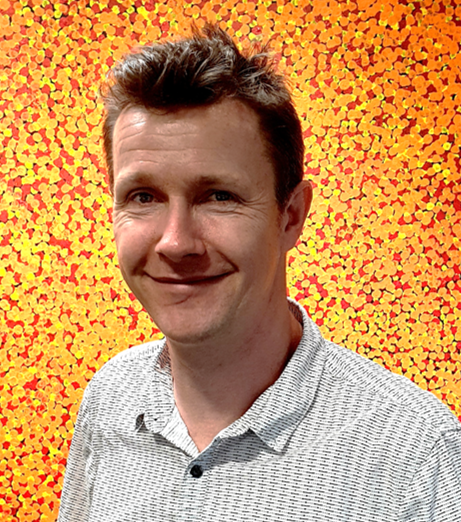
We want to understand how the brain controls the body and, in particular, the bodily systems that keep us alive from moment to moment. We are particularly fascinated by the neural circuits that control the respiratory and cardiovascular systems. This intricate machinery is entirely autonomous and requires no input from the ‘conscious’ brain; the neural circuits that keep us alive become active prior to birth and remain so throughout life, their silence defining the moment of brain death. We want to know how neural life-support systems sense the needs of the body, how and why they become dysfunctional in disease, and whether their organisation contains any bugs or features that could be targeted therapeutically.
What inspires you?
I love the technological aspect of my job – I’m most inspired by the creativity and craftiness that often defines the top tiers in my field; the ways people design ways to manipulate or record neural activity; the repurposing of genetic tools and even viruses to probe the intricate structure of the brain, and the beautiful elegance of the brain itself.
What is the research question you aspire to answer or the problem you aspire to solve?
We have known for many years that common cardiovascular diseases are preceded by changes in the part of the unconscious brain that looks after bodily housekeeping, and that such changes are predictive of the onset of disease in later life. The origins of these changes are multifactorial – a combination of genetic, lifestyle, and environmental – but we don’t really understand how those risk factors translate to altered neural activity at a cellular level: Understanding the interplay between risk factors, circuit architecture and neural activity is the key to developing interventions that can block or reverse disease-causing maladaptions.
How will your research make the world a better place?
One of the challenges in our field is the structural complexity of the brain: for example, the tiny brain of the mouse contains over 900 regions! Accurate navigation of brain scans therefore requires extensive training and remains error-prone and time-consuming, a major bottle neck to efficiency and reproducibility. In addition to our work on the autonomic nervous system, which we hope will translate into improved therapeutic targets, one project we’re excited about at the moment is an analytical tool developed by an MRes student in the lab, Harry Carey, in collaboration with colleagues in the Neuroinformatics and Machine Learning communities, which can rapidly and accurately identify brain regions from scans. The current prototype approaches human expert performance and is several thousand times faster. The final version, which we hope to release shortly, will improve the efficiency and standardise the analysis of preclinical neuroscience imaging data.
What’s a recent success that you’re proud of?
A lot of neuroscience research is aimed at impressing other neuroscientists; our target audience is often quite boffiny. For that reason, I’m particularly proud of a recent article published in Frontiers in Neuroscience written by three of our PhD students, Christine Saleeba, Bowen Dempsey and Sheng Le, which explains key concepts and rapidly emerging technologies in the field of ‘connectomics’, a sub-discipline of neuroscience that seeks to understand structural architecture of nervous system connectivity. It’s beautifully written with the novice in mind and has been really well received by the community.
What’s one piece of advice you would give to an early career researcher?
Seek out the best journal articles, mentors and supervisors you can find and learn from them. Avoid jerks.
May 2021
Spotlight on…Dr Robyn Clay-Williams - April 2021
Dr Robyn Clay-Williams, Australian Institute of Health Innovation, Faculty of Medicine, Health and Human Sciences
What’s your area of research?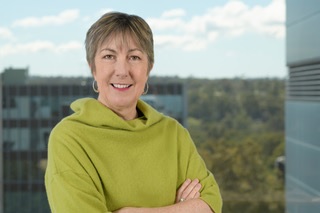
I lead a stream of cross-disciplinary research in Human Factors and Resilient Health Care at the Australian Institute of Health Innovation (AIHI). Human factors involves designing workplaces, processes and equipment so that they are easy to use and help, rather than hinder, work. Resilient Health Care is about ensuring that workplaces are sufficiently adaptable to cope with unexpected events or crises (for example COVID-19). Prior to my academic career, I served 24 years in the Royal Australian Air Force (RAAF) as an electronics engineer and test pilot. This year I’ve been featured on a commemorative coin to celebrate the Royal Australian Air Force 100 year Anniversary.
How will your research make the world a better place?
Across Australia, and internationally, around 10% of patients who visit hospitals suffer harm. Despite 25 years of effort, trying to prevent things going wrong has not worked. Resilient Health Care flips this idea on its head and aims to reduce harm by increasing the number of things that go right. It is too early to tell, but we think that this new approach will improve safety through understanding work-as-done in caring for patients and designing workplace processes that are easier to follow.
How do you engage with end-users of your research?
My research is very practical. My research team works with doctors, nurses and leaders in hospitals to solve real workplace problems. Our Resilient Health Care intervention in a regional Queensland hospital, for example, reduced elective surgery cancellations due to unavailable intensive care beds from up to 6 to less than 1 per month. This meant an additional 72 complex cardiothoracic or neurosurgical operations could be conducted in that hospital each year.
What’s one piece of advice you would give to an early career researcher?
Write (and write and write). It’s never too early, for example, to write perspectives and opinion pieces to supplement your research articles. It doesn’t matter that you are new to your field - sometimes the fresh insights are the most interesting!
What do you find most rewarding about your job?
I get to work with a fabulous team of researchers and clinicians to explore new and interesting ideas, and to test them out in practical settings. Sometimes small changes in workplace processes or equipment can make a big difference to clinicians, reducing their stress or improving their joy in work.
What do you find most challenging about your job?
Obtaining funding for exploratory work that has awesome potential longer term, but no immediate or guaranteed benefit. How DO you do that?
April 2021
Spotlight on…Dr Lyndon Koens - March 2021
Dr Lyndon Koens, ARC DECRA Fellow, Department of Mathematics and Statistics, Faculty of Science and Engineering
What’s your area of research?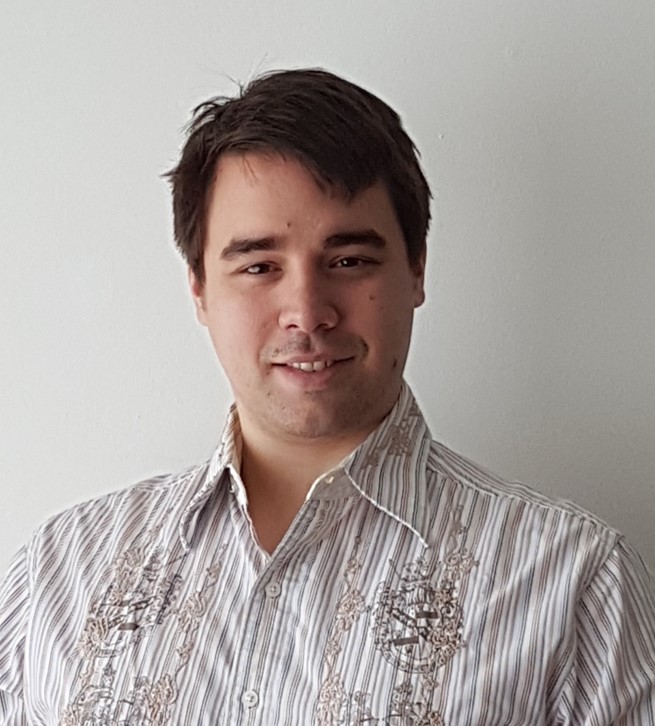
My research explores microscopic mechanics in viscous fluids. Such mechanics is vital in the organisation and reproduction of biological cells, the swimming of spermatozoa and bacteria, the motion of clay, gels, and suspensions and development of micromachines. Researchers in my field develop novel lab on chip technologies, new key-hole surgery techniques and some meta-materials. As a theorist I look to create simple and accurate models for these systems which can be used to further optimise and improve these systems.
Who inspires you?
I am most inspired by my partner. She is the smartest person I know. After completing a PhD in biology, she went into graduate administration in an engineering department and within months she had a good grasp on what they did. She doesn't have a mathematics background but still has a strong grasp on what I do and is often the first person I talk to about my ideas.
What inspires you?
I often sit in awe of many of the consumer products we take for granted. For example, liquid soap has been a vital part of our life in 2020 and 2021. Yet it does so many amazing things. We push a nozzle and it flows, it will hold its shape in our hand and, if we rub our hands together, it increases in volume rapidly. I even gave an undergraduate Mathematics seminar on the physics and mathematics of these systems.
What is the research question you aspire to answer or the problem you aspire to solve?
It is my dream to create bottom up models of complex multicomponent systems in viscous fluids. These models involve multiple scales which, as of present, do not have accurate and effective methods to treat. For example, spermatozoa are of a similar size to the mesh within cervical mucus (depending on time of the cycle). Hence to model fertilisation, we need to be able to model the interaction of the spermatozoa with the individual fibres of the mesh near the swimmer and the remaining mesh far from the swimmer.
What’s a recent success that you’re proud of?
I was very fortunate to start a DECRA fellowship in 2020. I knew these grants are very competitive and I feel honoured to be selected. This project looks to create fast and accurate modelling techniques for collections of fibres in a viscous fluid.
Are you currently working on a grant or high-impact paper? What’s it about?
At this moment I am responding to the reviews on my manuscript about geometric phase techniques for microscopic swimmers. The manuscript shows that for such swimmers no single stroke maximises the swimmer's displacement and provides a novel method to design swimmers for specific tasks.
What do you find most rewarding about your job?
I am privileged to find both teaching and research very rewarding. I really enjoy watching something “click” with a student and finally determining a solution to a challenging research problem. Given these events occur on different timescales, a good balance of teaching and research can leave me smiling continuously.
If you were given a $200,000 research grant, what would you do with it?
If I received a $200,000 grant, I would hire a postdoc with knowledge of high-power computing in viscous flows. We would explore the hydrodynamics of suspensions of filaments (possibly active), exploring the behaviour and rheology of these systems.
Who at Macquarie University deserves recognition for their outstanding contribution to the university’s research effort?
There are so many within my department that deserve more recognition for their work. Dr Chris Lustri has been an amazing support for the applied mathematics team at Macquarie and he took on much more responsibility as 2020 progressed. I know he has recently been promoted but I still feel he deserves more.
March 2021
Spotlight on…Dr Francesca Short - February 2021
Dr Francesca Short, ARC DECRA Fellow, Department of Molecular Sciences, Faculty of Science and Engineering
What’s your area of research?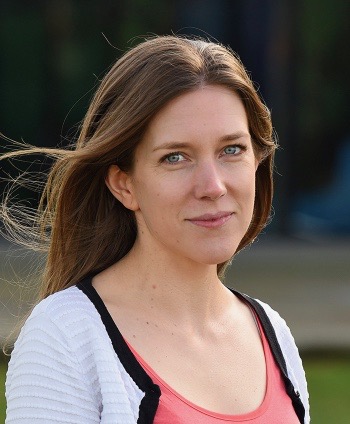
Very broadly, I study decision-making in bacterial pathogens. Many bacteria only become problematic when certain genes for virulence or antibiotic resistance are switched on. But what determines this switch? The aim of my work is to understand how these damaging behaviours are controlled, with the long-term goal of being able to control them ourselves with new medical treatments.
Who inspires you?
As a kid I was inspired by my grandma – she studied science when that meant getting a bus to the boys’ school across town, and ended up working as a researcher at the South Australia museum. These days I am inspired by my colleagues.
What inspires you?
I am inspired by nature. To me, microbiology is all about understanding how life works.
How will your research make the world a better place?
We’re already in a really difficult situation with antibiotic-resistant bacteria, and without new treatments we will lose the ability to treat common infections. This is still a fixable problem, but more research into bacterial infections and new treatments is essential to stop things from getting worse.
How do you inspire or encourage women, Indigenous Australians, other minorities or under-represented groups into your discipline?
I teach a free online course on bacterial genomics and disease transmission. We attract learners from all over the world, with a high proportion coming from places without much microbiology research infrastructure. They represent the full range of educational backgrounds and it is great to hear their stories and help them learn about the field. The course includes many interviews with scientists to give a snapshot of what life in science is like.
What’s a recent success that you’re proud of?
I was awarded an ARC DECRA fellowship in 2020 to expand my work on bacterial gene regulation networks. The ideas in the application had been at the back of my mind for a long time, so I am excited to have the opportunity to make them happen.
Who at Macquarie University deserves recognition for their outstanding contribution to the university’s research effort?
My mentor, Prof Ian Paulsen, has done an amazing job building up research capacity in synthetic biology and microbiology. Thanks to him and others in the department we have a great research community in this area at Macquarie.
February 2021
Spotlight on…Dr Hollis Taylor - January 2021
Dr Hollis Taylor, ARC Future Fellow, Macquarie School of Social Sciences, Faculty of Arts
What’s your area of research?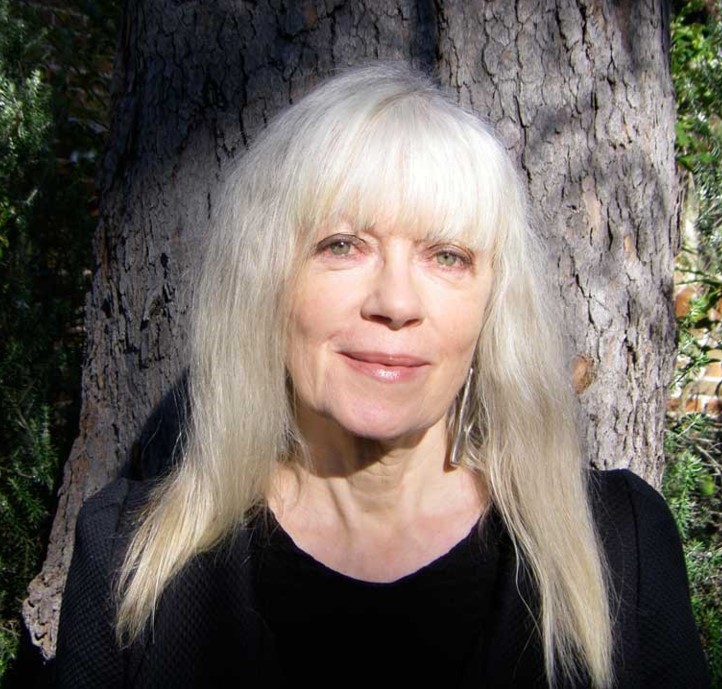
I record and analyse the nocturnal songs of pied butcherbirds for months each spring in Central Australia. My research is founded on the belief that although the natural sciences and musicology can be taught separately, they cannot be deployed separately to solve issues of musicality in birdsong. So, I combine biologists’ formidable tools and findings with the analytic apparatus of musicology, including a musician’s trained ear.
Who inspires you?
Each feathered chorister inspires me. Pied butcherbirds all sing differently, with a repertoire that changes annually. Structurally complex, combinatorial, and remarkably melodic, their songs are sonic heirlooms, the manifestation of likely millions of years of culture cutting across this land. So, I engage with a very long tradition.
What is the research question you aspire to answer or the problem you aspire to solve?
Is birdsong music? I’ve made the case that it is. Now, my question is, how is birdsong music? I’m mapping song elements and complexity over geography and time to see how pied butcherbirds transform their phrases, as well as how this compares to human music traditions.
How do you engage with end-users of your research?
In addition to publications summarising my interdisciplinary collaborations, my project celebrates avian achievements through performances, recordings, museum installations, radio features, and lectures to the general public. It’s not a difficult sell. Animals have always fascinated us, and in this time of extinctions and climate change, that’s even more the case.
How do you fund your research?
I am an ARC Future Fellow, but I also self-fund my fieldwork because in a longitudinal study, you can’t miss a season, even in the lean years.
What’s a recent success that you’re proud of?
My most recent commission is to write a musical work (with violinist/composer Jon Rose) for recorder virtuoso Genevieve Lacey and Cambridge University’s Choir of Trinity College. It features a Central Australian pied butcherbird nocturnal song from one of my recent field recordings.
Are you currently working on a grant or high-impact paper?
I’m working on a paper for Frontiers in Psychology. We know that songbirds learn their songs—but are they teachers as well as learners? In this paper, I present evidence for teaching in the pied butcherbird, in the process advocating for a broad, inclusive appreciation of the activity. This is consistent with my inclination to push against claims of human uniqueness in all arenas until we explore our planet in more depth.
What’s one piece of advice you would give to an early career researcher?
Manifest multiple results for every project and not just a paper (or two). Plan ahead so you can document and output in a variety of ways: recorded interviews, photos, video clips, articles for The Conversation or a broad public audience, podcasts, installations, lectures on multiple platforms within and without academia—the lot.
What do you find most rewarding about your job?
To hear the liquid crystal song of a pied butcherbird holding forth in the dark of the night—nothing compares.
What do you find most challenging about your job?
Large data sets. We can add to this the tyranny of journal impact factor that encourages theory over field studies.
January 2021
Spotlight on…Prof Stefan Trueck - December 2020
Prof Stefan Trueck, ARC Future Fellow, Department of Actuarial Studies and Business Analytics, Macquarie Business School
What’s your area of research?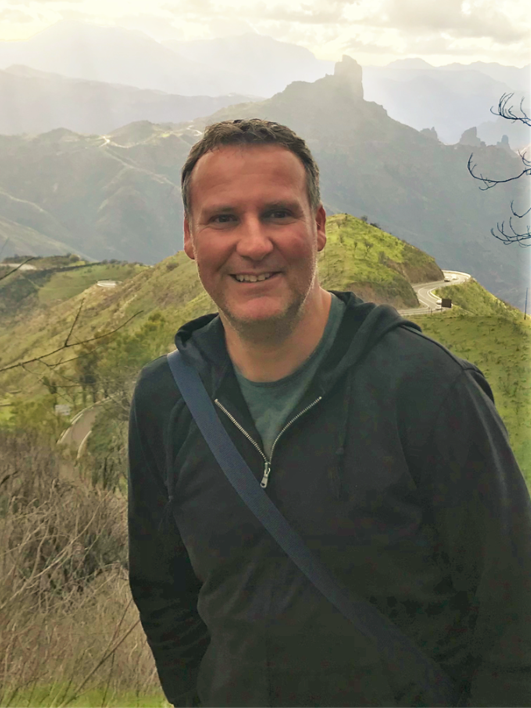
I am a financial econometrician, i.e. I love to work with data and models. My key research areas are risk management, the analysis of financial markets, and energy economics. A significant part of my work has been on wholesale electricity markets and the behaviour of electricity prices at power exchanges, where electricity is traded. Due to the (still mainly) non-storable nature of electricity, wholesale prices are extremely volatile. More recently, I have also concentrated on topics related to the economic analysis of climate change and renewable energy.
What inspires you?
The work of scientists who have invented something that makes a contribution to society. It’s still hard to believe that humans managed to understand the laws of physics or thermodynamics, get airplanes to fly, or invent the television, the Commodore 64, the internet, or solar panels. In business, economics and finance it is very difficult to predict the outcomes of the behaviour of a large group of humans. But some of the work and models in our discipline have been pretty cool as well, and modeling the economic side of markets, technological innovation, or human behaviour is quite fascinating.
How will your research make the world a better place?
I hope that my research on electricity markets will help to contribute to a smooth transition from a sector that has originally been dominated by ‘dirty’ and CO2 emission intensive generation from fossil fuels and is now more and more shifting to renewable sources. I have no doubt that this transition will be a successful one in the end, but such a drastic change brings a lot of challenges. I believe that my work contributes to facilitating these changes at the lowest possible cost to consumers.
What’s a recent success that you’re proud of?
Being awarded a Future Fellowship in 2020. After many years of submitting ARC applications and continuously improving different project proposals, this was a fantastic outcome. I think this is also a recognition of the important research my co-authors and I have done in the econometric analysis of electricity markets over the last 10-15 years. The group of co-authors also includes a large cohort of PhD, MRes and Honours students I have supervised and who have had many excellent ideas and have done fantastic work in the area. The funding that comes with the Fellowship will also allow me to continue to work with a team of Early Career Researchers and HDR students – something I really enjoy.
What’s one piece of advice you would give to an early career researcher?
Make sure to work with the right people who are smart, fun to work with and/or can help you to enhance your career. Also try to be helpful to other researchers (also junior colleagues) and share any success with everyone who has contributed. What I have learned over the last 15 years is the importance of contributing to the research community, i.e. presenting your work, organizing conferences, and building research partnerships and networks. Being connected and knowing people in your field is extremely valuable.
What do you find most rewarding about your job?
Spending most of my time on researching topics I find incredibly interesting, and learning new things every day. I also like the flexibility of being an academic. Also, I like to think that I am still getting better at what I am doing.
What do you find most challenging about your job?
The fact that you are never finished with your job and there is always something that could be improved on a paper, project etc. is challenging. Research never stops, even while you are on holidays. Finally, the more senior your role becomes, the less time you actually have for doing what you thought you would be doing when you started your academic career: analyzing some obscure dataset, while having a nice glass of Pinot Gris.
Who at Macquarie University deserves recognition for their outstanding contribution to the university’s research effort?
Our former Associate Dean of Research, Lorne Cummings, and the fantastic team at the MQBS Research Office - in particular our Research Manager Agnieszka Baginska. Lorne and Agnieszka are not just super hard working and excellent at their job, but they are also people with good judgement, absolute integrity and they will always go the extra mile to help you. They also follow the motto all Macquarie academics have probably heard a hundred times at our graduation ceremonies: ‘Your success is our success!’.
December 2020
Spotlight on…Dr Miriam Forbes - November 2020
Dr Miriam Forbes, Senior Research Fellow, Department of Psychology, Faculty of Medicine, Health and Human Sciences
What’s your area of research?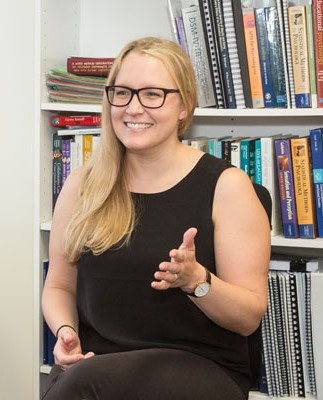
I’d call the area ‘quantitative psychopathology’. My research is working on improving the way we diagnose and classify mental illness based on patterns in the ways people experience symptoms of psychopathology. Traditional approaches to diagnosing mental disorders—like those in the Diagnostic and Statistical Manual of Mental Disorders (DSM) and International Classification of Diseases (ICD)—have a number of big limitations. I’m part of an international consortium working to develop a new empirically based classification system for mental illness called the Hierarchical Taxonomy of Psychopathology (HiTOP).
What is the research question you aspire to answer or the problem you aspire to solve?
Aspirationally, HiTOP could overcome the limitations of traditional diagnostic systems, supplanting the DSM and ICD for guiding evidence-based research and practice.
How do you fund your research?
I’ve been supported by a Macquarie Research Fellowship for the last few years, and I won the grant lottery this year so will be supported by an NHMRC Investigator Grant 2021-2025.
What’s a recent success that you’re proud of?
Last week I had a paper I’ve been working on for the last four years accepted for publication in the top journal of my field. Pretty delighted about that.
What do you find most rewarding about your job?
My undergraduate self would never have believed this, but statistics! I absolutely love analysing data. I think it’s amazing to be the first person to learn the answer to a research question.
Who at Macquarie University deserves recognition for their outstanding contribution to the university’s research effort?
Our Psychology Department Manager, Avril Moss. Much of our ability to find time to do research has been thanks to her. On top of being an amazing colleague and tirelessly working to keep the department running, Avril has shielded us from a huge administrative load and solved even our most impossible problems with her limitless arsenal of skills and knowledge. She’s magic, and we will miss her immensely.
November 2020
Spotlight on…Prof Catharine Lumby - October 2020
Prof Catharine Lumby, Department of Media, Music, Communication and Cultural Studies, Faculty of Arts
What’s your area of research?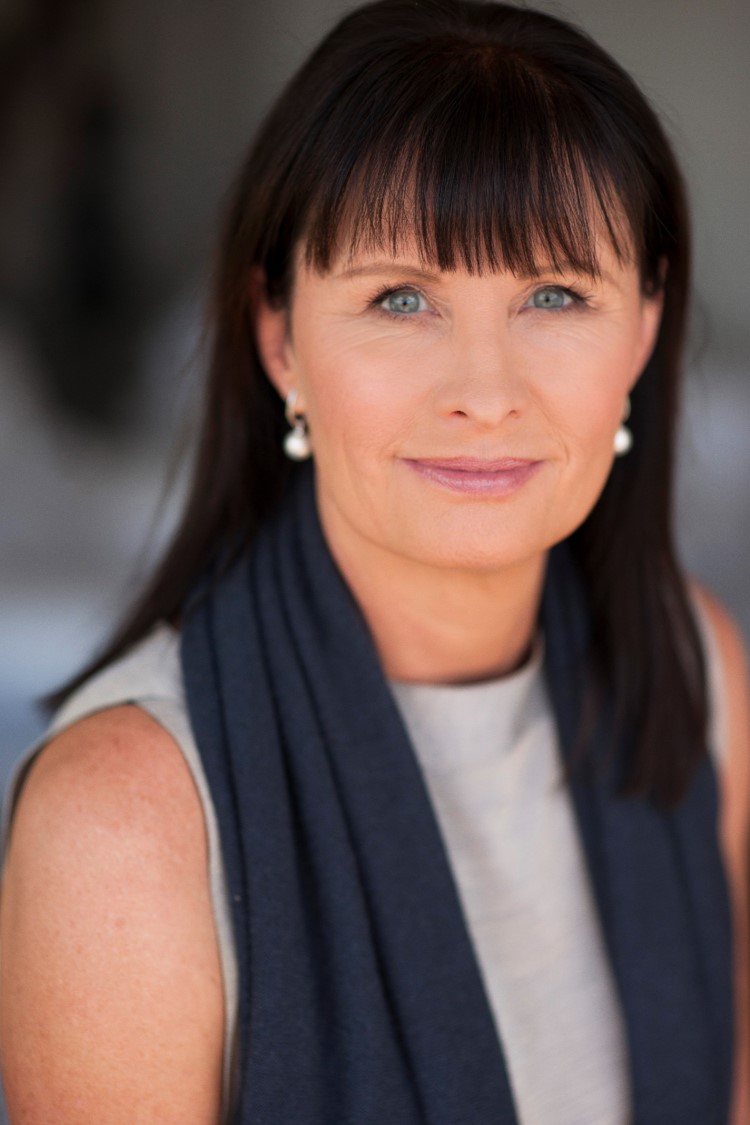
I am a Professor of Media Studies but I started out doing an Arts/Law degree at Sydney Uni. I was so horrified by the culture of large law firms when I went for interviews that I became a print and TV journalist instead for twenty years. I did my PhD in Media Studies but I also do a lot of cultural studies research focused on gender and youth studies.
Who inspires you?
Well Michelle and Barack Obama obviously. That’s a no-brainer. As a feminist I’m inspired by all the amazing women who started the first and second waves of feminism. Emily Pankhurst, Eva Cox, Quentin Bryce and Wendy McCarthy stand out in Australia. All women – and the men who support gender equality – owe them a great debt of gratitude. Intellectually, Meaghan Morris has been the biggest influence on me. Read her essays. Immediately.
What inspires you?
The fabulous young people I get to teach and learn from. They remind me that curiosity and healthy scepticism is critical to avoiding complacency in all aspects of our lives. As soon as we think we know it all we need to think again. Also, right at the moment, the Black Lives Matter movement is really inspiring. I’m an optimist and I do believe that change is possible. We need to keep momentum going when it comes to human rights. History should make us all deeply uncomfortable. That’s why we need to be informed about the past and be conscious of the privilege many of us have simply inherited.
What is the research question you aspire to answer or the problem you aspire to solve?
For me research is about putting wheels on ideas. There are many ways of being an academic. Some academics contribute great value by looking deeply into ideas grounded in pure and very theoretical research and I respect that. But for me, research is about asking big picture questions and coming up with solutions that get traction in public policy and debate. At the moment the major questions for me revolve around how we can bring voices that haven’t been heard enough into public debates: young people and people from ethnic and culturally diverse backgrounds are groups that really stand out to me. I am very concerned about the rise of populism in our democracies and the distrust of expertise that goes with that. I think we need to find a way to start conversations with people who are suspicious of experts, do more listening, and think strategically about how we can rebuild a public sphere which is less polemic and more evidenced based when it comes to solving the big issues: climate change, social disadvantage, gender and racial inequality and, in Australia, Indigenous rights should be front and centre.
How will your research make the world a better place?
Making the world a better place is a big ask. I think we build that wall one brick at a time. And change always requires a team effort. I’ve been fortunate to work with some fabulous colleagues who share my values and care about making the world a better place. What that better place looks like is always subjective of course. If I think about what I’m proudest of it is being able to get a public platform to translate my research which revolves around questions of raising awareness of social injustice and offering solutions. Having the opportunity to write and speak in the media as a former journalist means I am able to take my research outside the university walls and hopefully that has had some impact on the shape of public debate and policy.
How do you engage with end-users of your research?
Building trust is key. I have been fortunate to be the recipient of a large number of Category 2 and 3 grants which matters a lot now that ARC grants are so competitive. In my experience, you have to start by simply getting to know the needs and interests of an organisation when they align with your own research trajectory. You build bridges with individuals and understand their research needs and only then do you pitch an idea for a project. You plant seeds and water them and sometimes it takes a few years. It’s like any relationship. Trust and mutual benefit are at the heart of it.
How do you inspire or encourage women, Indigenous Australians, other minorities or under-represented groups into your discipline?
By listening to them. I let them educate me about their needs and what is getting in their way. Mentoring is always about listening, not about telling other people how to do it or how you did it. I let them ask the questions and then I reflect and offer ideas. Also, I make myself available whenever they want to talk. Mentoring is not a 9-5 thing. Sometimes it happens in the most informal settings. Again, it’s about building trust. I reach out often to people I happen to meet socially and talk about degrees they might want to think about doing. I was born into a working-class family – as many academics were – and I am very conscious that education is a pathway to opportunity for many people who didn’t grow up with middle class privilege.
How do you fund your research?
Tempted to say my credit card is maxed out. No, actually I apply for at least one ARC grant a year and always involve other colleagues. A good team is critical to getting those Category 1 grants. I also look for Category 2 and 3 grants and I get approached to do them these days because I have built, over 20 years, a strong network with the corporate and government sectors in my areas of research. For ECRs and mid-career academics I strongly suggest that they actively seek out mentors with strong track records in getting research funding and team up with them. I am always available to mentor other colleagues who want to have a chat about how to get funding externally.
What’s a recent success that you’re proud of?
Most recent one is the Who Gets To Tell Australian Stories report. It was a Category 3 project funded by Google, the MEAA and initiated by Media Diversity Australia – a not for profit organisation run by journalists who want to increase cultural diversity in our media. We found that 75% of presenters, commentators and reporters on free to air news and current affairs TV are Anglo-Celtic. And that people from a non-European background are vastly underrepresented. It got a lot of media coverage which is a start. We included some strong evidenced based recommendations on how the networks can change. Fingers crossed.
Are you currently working on a grant or high-impact paper? What’s it about?
I just finished a biography of the writer Frank Moorhouse. I’m co-authoring a book for Cambridge University Press which comes out of an ARC Discovery Project grant I’m leading on Online Violent Extremism and the role of social media in radicalisation. Quick heads up: it’s the white nationalist extremists we need to be most worried about.
What’s one piece of advice you would give to an early career researcher?
Find a good mentor. Someone who will listen and be generous. If they are a good mentor, they will roll up their sleeves and help you through every bit of forming your ideas for a project, writing the application or article and guiding you through prosecuting it.
What do you find most rewarding about your job?
Working with great colleagues and students. And reading and writing books. It’s what I always wanted to do. And I get to do it and get paid for it. What’s not to love?
What do you find most challenging about your job?
Bureaucracy.
If you were given a $200,000 research grant, what would you do with it?
Sit down with some really smart ECRs and mid-career researchers and ask them what they’d do with it. And cook up a project.
Who at Macquarie University deserves recognition for their outstanding contribution to the university’s research effort?
I have to say the research team in the Faculty of Arts led by Jan Zwar and also everyone in the Macquarie Research Services office. I have never worked with such a terrific, expert and generous team at any other university. They are the backbone when it comes to our grant success at Macquarie.
October 2020
Spotlight on…Dr Michael Donovan - September 2020
Dr Michael Donovan, Director, Indigenous Strategy, Walanga Muru, School of Education, Faculty of Arts
What’s your area of research?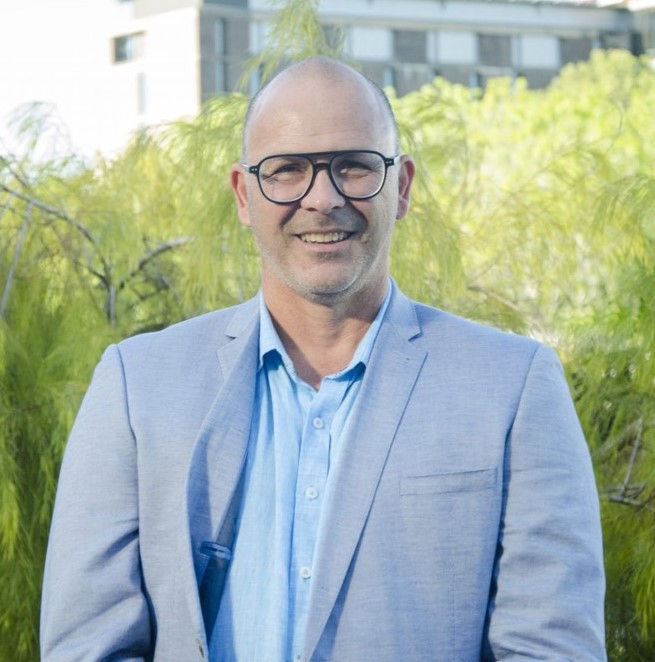
My primary focus is Aboriginal education from increasing the educational outcomes of Aboriginal students, informing pre-service teachers and teachers on best practice to engage Aboriginal students and the development of collaborative partnerships with Aboriginal communities to better engage students around Aboriginal knowledges.
Who inspires you?
I have been fortunate enough to have engaged with many important Indigenous academics and community leaders, from world-class Indigenous academics and thought leaders to small community organisations. I am inspired by Indigenous peoples who understand their cultures and engage with these understandings to better their communities and areas of influence.
What inspires you?
I am inspired and motivated by my communities. There is always an Aboriginal person who is taking on an issues within their community. Anything from school education, to health to the re-vitalisation of language and cultural practices. The strengths within my communities is always something I want to live up to and try to support in my own small way.
What is the research question you aspire to answer or the problem you aspire to solve?
Engagement of Aboriginal students within Australian schools through the development of better-informed teachers around good pedagogical practice and collaboration. For me, pedagogy is what it is all about in teaching, that is, how to engage your audience to want to examine the question and discover their understandings. Teaching through partnership and relationship is a very significant practice for what I see in education. Gaining content is important but in our information rich society, information can be easily accessed but wanting to learn something is the skill of a good educator and for me the important part of teaching.
How will your research make the world a better place?
Knowledge does not come from one source or one standpoint and for me presenting an Aboriginal understanding built from my cultural filters is an important way of building our knowledge systems. Australia is a culturally diverse society and building from these culturally rich foundations can give our knowledge systems a greater depth of understanding. Coming from the oldest continuous sustainable culture in the world is a sound starting point to develop contemporary understandings.
How do you engage with end-users of your research?
I usually initiate my research through engaging with the Aboriginal community about whether my thoughts on a research question are valuable to them. If so, this will develop a collaborative partnership that can be extended through the research partnership until I report back to the community my results and if there is any significance to them from that examination.
How do you inspire or encourage women, Indigenous Australians, other minorities or under-represented groups into your discipline?
My research generally is about working with Indigenous communities this is important to me as an Aboriginal man and as a teacher education is good starting point when dealing with wider societal issues. So, the improvement of educational systems to engage all learners is important. My work is usually done as a collaborative partnership and built on a working partnership so I hope I can encourage other Indigenous partners to build capacity within our communities.
How do you fund your research?
My research has been funded through a variety of sources including larger funding bodies like ARC, and the Department of Education, with some school focused work. I will generally follow research notice boards and try to consider my research within the aims of funding body goals. One organisation I always wanted to win a grant from was Coopers brewery who had some small research grants with community directives. Primarily because who wouldn’t want to be funded by a brewery to do some research.
What’s a recent success that you’re proud of?
In 2019-2020 I was a Fulbright Visiting Scholar, doing some post-doctoral research working with Hawaiian Focused Charter Schools across the Hawaiian Islands. This was a highlight as I had the opportunity to live and work in another country and engage with their day to day cultural experiences and who wouldn’t want to spend 10 months living in Hawaii.
Are you currently working on a grant or high-impact paper? What’s it about?
In the last few months, I have become a member of two research teams applying for different research grants. Firstly, with colleagues at UON on an ARC Linkage Special Research Initiative grant where we are interpreting technical knowledge from different perspectives including Indigenous Australians and professional scientist standpoints. I am also working with members from MSoE applying for a Medical Research Futures Fund grant examining crucial gateway for communicating healthcare to diverse communities across all Australian communities through Early Childhood Education networks. We will be examining the pathways that information about COVID-19 is presented to families and understand if there are ways to present clear informed messages to our diverse Australian communities.
What’s one piece of advice you would give to an early career researcher?
Engage with a mentor who you can treat like a friend. That is someone who you can trust and believe has your best interest at heart. A person you can confide in when you need advice but who will work with you as equals. A person you can sit down with and have a coffee or a beer and talk about life as much as your work. Mentorship is very important and having a supportive guide will help you learn the rules and have clearer goals in the academic game.
What do you find most rewarding about your job?
I am allowed to think. These thoughts then can be presented to the academy to be questioned, challenged, or engaged with. These ideas can be brought to your students or the public to support the building of knowledges or giving another view on a subject. I love to teach and being allowed to research and develop my thoughts on issues to be used in teaching is a joy.
What do you find most challenging about your job?
Deadlines are very challenging particularly if learning is a journey, as I like to believe it is. There are times when that learning journey of discovery has to be shortened to fit within those deadlines. Also, there is always more than one deadline that you are working with in academia and you always have multiple tasks all fighting for your time requiring to be completed by that deadline.
If you were given a $200,000 research grant, what would you do with it?
My research involves the Aboriginal community and Aboriginal education. My work is looking at a living breathing society and their needs in the life-long journey of learning and understanding. I would use this money to visit with community or peak community bodies and ask is there anything that MQ or our researchers can do to support them gaining a better understanding of issues within their communities. This should hopefully build greater research and build greater capacity with Aboriginal researchers and research partnerships.
Who at Macquarie University deserves recognition for their outstanding contribution to the university’s research effort?
As a relative newbie I would find it hard to identify single people for their recognition, in most research news there is someone winning another research grant.
September 2020
Spotlight on...Assoc Prof Shaokoon Cheng - August 2020
Assoc Prof Shaokoon Cheng, School of Engineering, Faculty of Science and Engineering
What's your area of research?
My research area is in Biomechanics. My current research aims to improve how inhaled drug delivery is tested. This is achieved by understanding how particles fluidise in human airways, how they interact with active cilia and what factors improve their dissolution.
What inspires you?
Nature inspires me! There are just too many hidden designs in nature that are smart and effective; that is why my design thinking always begins with biomimicry.
What is the research question you aspire to answer or the problem you aspire to solve?
Research that has the potential to be directly translated to improvements in the way things are measured and produced in industry never fails to attract me. This includes biological fluid flow, cilia beat frequency, surface imperfection in manufactured parts, and the permeability of construction material. Research in these areas is necessary to improve the medical, manufacturing and construction industry. My interest includes product design and functionality, given my deep passion for industrial design and product innovations.
How do you engage with the end-users of your research?
I am a typical engineer that needs to see things made, and this is important to maintain my sanity. Before joining academia, I worked in mechanical product design. This continues in my current research program, where the end-goal of all my projects is the development of products that can benefit a particular industry or general consumers. For example, by working closely with the major pharmaceutical research groups in Australia, we are developing a device that can significantly improve the testing and development of inhaled drug delivery systems at a fraction of the cost and time needed. I am also helping students to develop consumer products and in industrial engagement. The James Dyson Award, for example, has taken notice of our work and have recently initiated an annual engagement with our students in the product development unit in Mechanical Engineering.
What's some advice you would give to an early career researcher (ECR)?
Looking back at my time as an ECR when I was too engrossed in laboratory research, there are some things I would do differently to help advance my career. My suggestions to current ECRs: i) it's never too early to think about fellowships and other funding, ii) aim to translate your research and focus on bringing value to others, and iii) take time to ponder and reflect where you are heading in your research.
What do you find most rewarding about your job?
I get to do two things that I enjoy in life: innovating products and teaching. I also enjoy mentoring and it is always rewarding to see an HDR student grow as a scientist and demonstrate critical thinking in their work.
August 2020
Spotlight on…Prof Martin Hoyle - July 2020
Prof Martin Hoyle, Centre for the Health Economy, Macquarie Business School
What’s your area of research?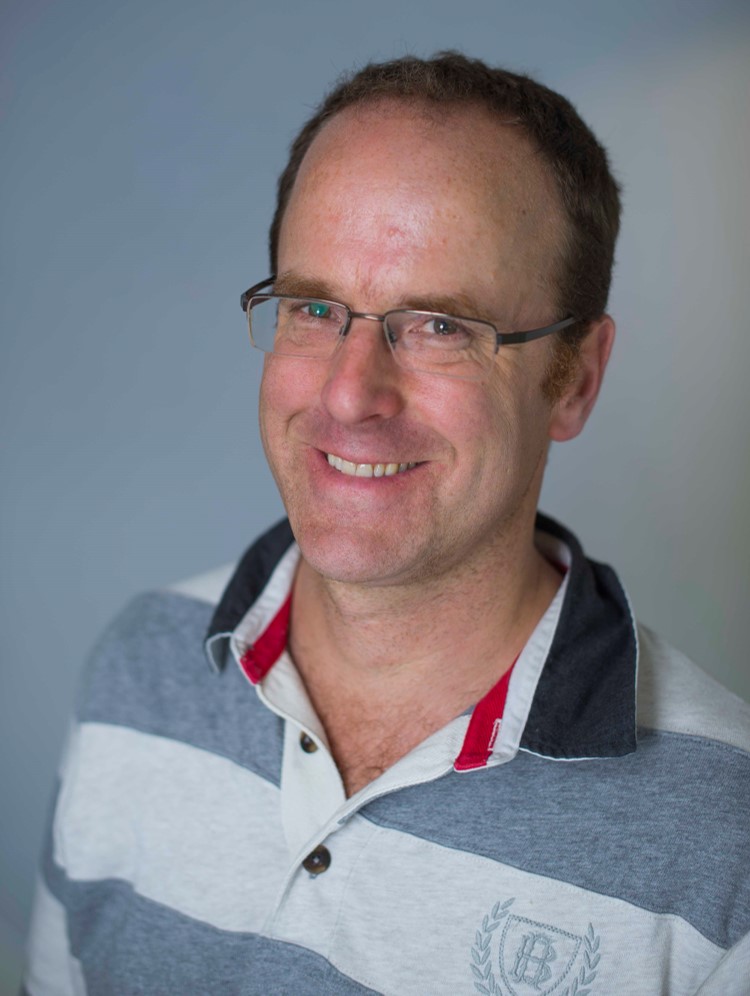
I am a health economist at the Macquarie University Centre for the Health Economy (MUCHE), in the Business School.
We assess the clinical effectiveness and cost-effectiveness of medicines, vaccines, medical devices and diagnostic tests for the Australian government.
Some people believe that health economics is all about limiting spending. But it’s actually about ensuring that money is spent wisely on effective treatments. It’s about getting the most health benefit from a finite amount of money. That’s what I do every day.
I moved from the UK to Australia last year because there is some good work on health economics done in MUCHE, and in Australia in general, and for the lifestyle!
How will your research make the world a better place?
The work we do at MUCHE helps ensure that all Australians have access to more effective treatments at a fair price.
How do you engage with end-users of your research?
Back in the UK, I did work for many years for an organisation called NICE, that assesses the effectiveness, safety, and cost-effectiveness of high cost medicines. There, my colleagues and I would scrutinize the cases put forward by pharmaceutical companies for their medicines. They have a great incentive to put forward very favourable cases for their products. Our job was to check the evidence for their claims. I used to enjoy discussing company cases at the NICE committee meetings. At the end of each meeting, the committee would decide whether the medicines would be funded by government. Here in Australia, there is a similar organization called the Pharmaceutical Benefits Advisory Committee (PBAC) that assesses the effectiveness, safety, and cost-effectiveness of all new medicines and vaccines. My colleagues and I regularly travel to Canberra to attend meetings similar to those at NICE.
Are you currently working on a grant or high-impact paper? What’s it about?
I’m very interested in the methods of assessing the effectiveness and value for money of medicines and vaccines. Bonny Parkinson and I have recently submitted a funding application to the Australian National Health and Medical Research Council (NHMRC), in which we propose to research how the assessment methods in Australia can be updated, especially using my experience of the methods used in the UK.
What do you find most rewarding about your job?
I am fascinated by the combination of the technical side of the research, and the obvious impact on patients the real world.
My colleagues and I at MUCHE regularly see how our research directly affects the decisions on whether medicines and vaccines get funded by the Australian government. So our work helps to ensure that Australians get access to effective medicines at affordable prices.
My background is in maths, and I’m passionate about researching improvements to the methods of assessing medicines and vaccines, using statistics and mathematical modelling.
I find it very rewarding helping junior staff develop into independent researchers.
What’s one piece of advice you would give to an early career researcher?
When you learn something new, write it down. Keep Word documents on all areas of your research. Writing really helps consolidate your understanding.
If you were given a $200,000 research grant, what would you do with it?
I would love to research the effectiveness and value for money of government strategies to respond to the COVID-19 pandemic and possible future pandemics. This could help inform the most appropriate responses from government. Many of the methods used to assess medicines could be used for this purpose. $200,000 would be a good start…
July 2020
Spotlight on…Dr Lisi Beyersmann - June 2020
Dr Lisi Beyersmann, ARC DECRA Fellow, Department of Cognitive Science, Faculty of Medicine, Health and Human Sciences
What’s your area of research?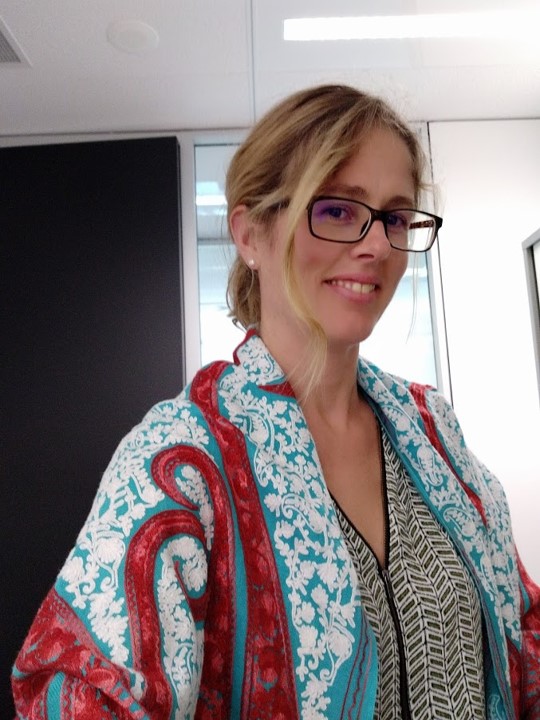
I am a cognitive scientist interested in understanding the processes underlying reading and reading development. What interests me the most is how reading becomes so fluent, rapid, and automatic. Reading involves many different stages, such as visual perception, letter recognition, letter-sound mappings, letter-word mappings, etc. Within only milliseconds, our brain rapidly resolves these processes and provides immediate access to thousands of words. My research explores how this is possible, and how the brains of young children become so remarkably fast and efficient at resolving the complex task of reading.
Who inspires you?
My HDR students. Their passion and enthusiasm makes me feel young and excited about the work we do.
How do you fund your research?
The best source of funding for the type of research that I do is the Australian Research Council. Grant writing is tough and rejection rates are high, but a grant application (even if rejected) can lay the foundation for a great paper, or prompt new collaborations with other people in the field.
What’s a recent success that you’re proud of?
My Discovery Early Career Researcher Award (DECRA) from the Australian Research Council (ARC) in 2019.
Are you currently working on a grant or high-impact paper? What’s it about?
Over the past few years, I have built a large network of international collaborations with many colleagues across Europe. With these colleagues, and with the support of a large-scale European research grant from the German and French research councils (DFG and ANR), we have been able to collect data from over 300 German, French, Italian and English speaking children to examine differences in children’s reading development across different languages. What we find is that differences between orthographic systems have a huge impact on how children process written words. It turns out that in English, the language in which letter-to-sound correspondences are less consistent than in French, German, and Italian, children rely more on larger orthographic units (such as “un” + “pack” + “ing” in the word “unpacking”), perhaps to compensate for the inconsistencies at the letter level. These results were recently published in two highly ranked international journals (Developmental Science and Scientific Studies of Reading).
What’s one piece of advice you would give to an early career researcher?
Being an early career researcher is like running a marathon and requires a lot of endurance. I highly recommend you take breaks, go out, socialise and have a beer!
What do you find most rewarding about your job?
One aspect I find really find rewarding, probably the most rewarding of all, is kicking off a new project with an idea for a great new experiment. It’s a time of theoretical consideration and a point at which all the empirical doors are still open. It’s the moment when I feel that we, as scientists, can really steer the direction of future research.
What do you find most challenging about your job?
The fact that hard-working, passionate, early career researchers have such a hard time “making it” and establish themselves in the world of research.
Who at Macquarie University deserves recognition for their outstanding contribution to the university’s research effort?
The Research Office of the former Faculty of Human Sciences. It was a team of outstanding people and I cannot thank them enough for the incredible support they provided throughout the various grant application stages!
June 2020
Spotlight on…Prof Bronwyn Carlson - May 2020
Prof Bronwyn Carlson, Head of Department of Indigenous Studies, Faculty of Arts
What’s your area of research?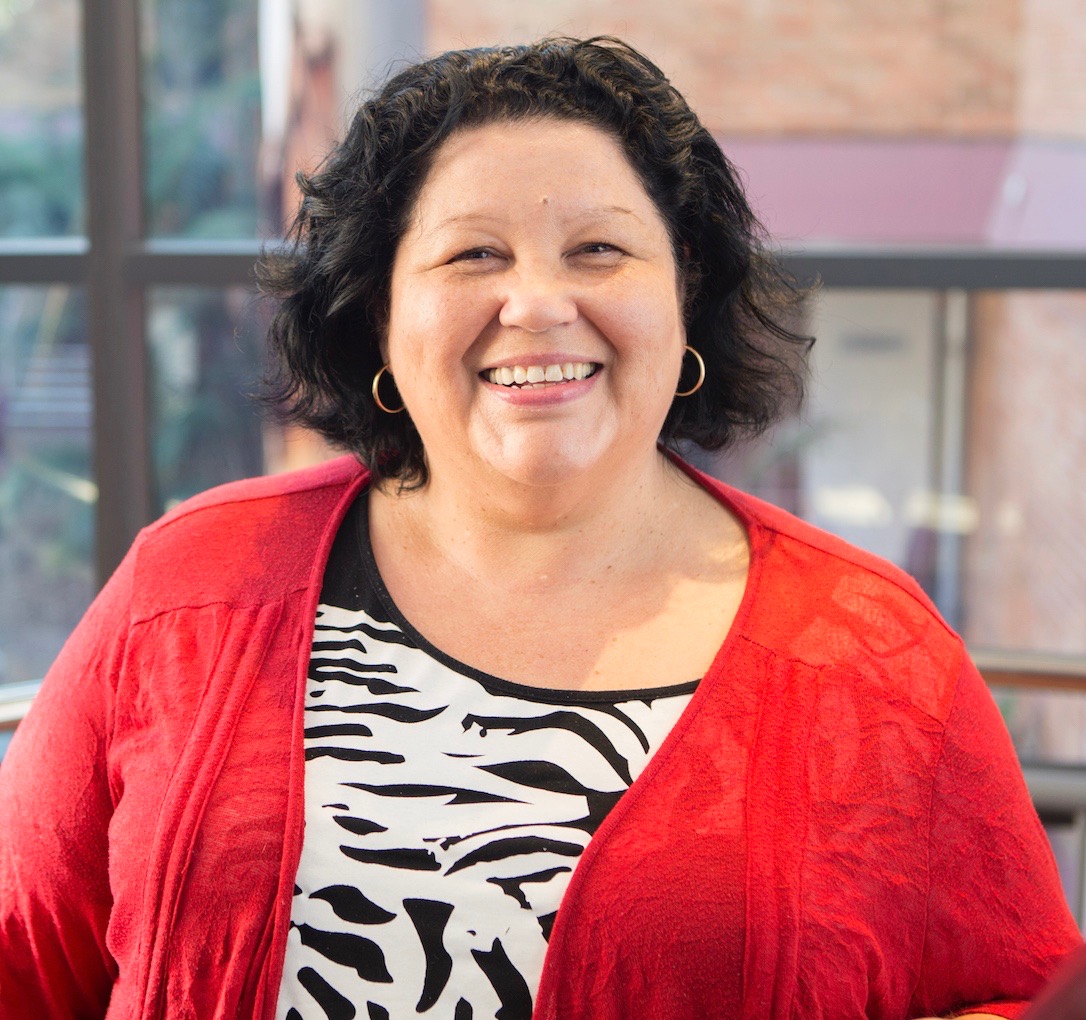
My area of research could be described as Indigenous digital sociology – I am interested in Indigenous peoples and our engagements with the digital economy and especially our use of social media for cultural, social and political engagements.
Who inspires you?
I am always inspired by Indigenous women who work in higher education. I understand how difficult it is for many of us to do well in higher education. We often come from families who have not had those opportunities so navigating the system and what is expected is extra difficult for us. I am equally inspired by the young Indigenous Queer scholars I am fortunate enough to work with. I have learned so much from them.
How will your research make the world a better place?
Given the current situation with the COVID-19 virus now more than ever it is important for us to understand how Indigenous people engage with digital platforms including social media. This unprecedent situation will see more and more use of online services and having a better understanding of Indigenous people’s daily engagements online will enable better support and hopefully we won’t see a widening gap with digital inclusion and marginalisation.
What’s a recent success that you’re proud of?
I have been truly fortunate in my application for research grants. I have been awarded three consecutive Australian Research Council Discovery Indigenous awards since beginning my academic career in 2012. The first in 2013 was focussed on Indigenous identity and community on social media. The second in 2016 was focused on Indigenous use of social media for help seeking and giving. The third in 2019 will focus on cyberbullying and other online violence. This is really important research given that Indigenous people are often targeted with racism and online violence. This has a significant negative impact in our communities and has been a great concern for Indigenous peoples for some time now.
What do you find most rewarding about your job?
The most rewarding thing about my job is the ability to support up and coming researchers and particularly Indigenous researchers. Being part of building a great sense of community on campus for the Indigenous cohort is really satisfying. I like to build things and I always take opportunities as they arise. I like to share those opportunities with HDR students and ECRs. Their success is really rewarding. Being able to introduce Indigenous Queer studies has been deeply satisfying. Restructuring the Indigenous Studies major has been exciting. I am lucky to work with such great Indigenous scholars. The huge growth in our student numbers means we are doing something good.
What do you find most challenging about your job?
The most challenging thing about my job is to keep reminding decision makers of the potential of Indigenous Studies and Indigenous staff and what could be achieved with investment.
May 2020
Spotlight on…Dr Emilie Ens - April 2020
Dr Emilie Ens, Department of Earth and Environmental Sciences, Faculty of Science and Engineering
What’s your area of research?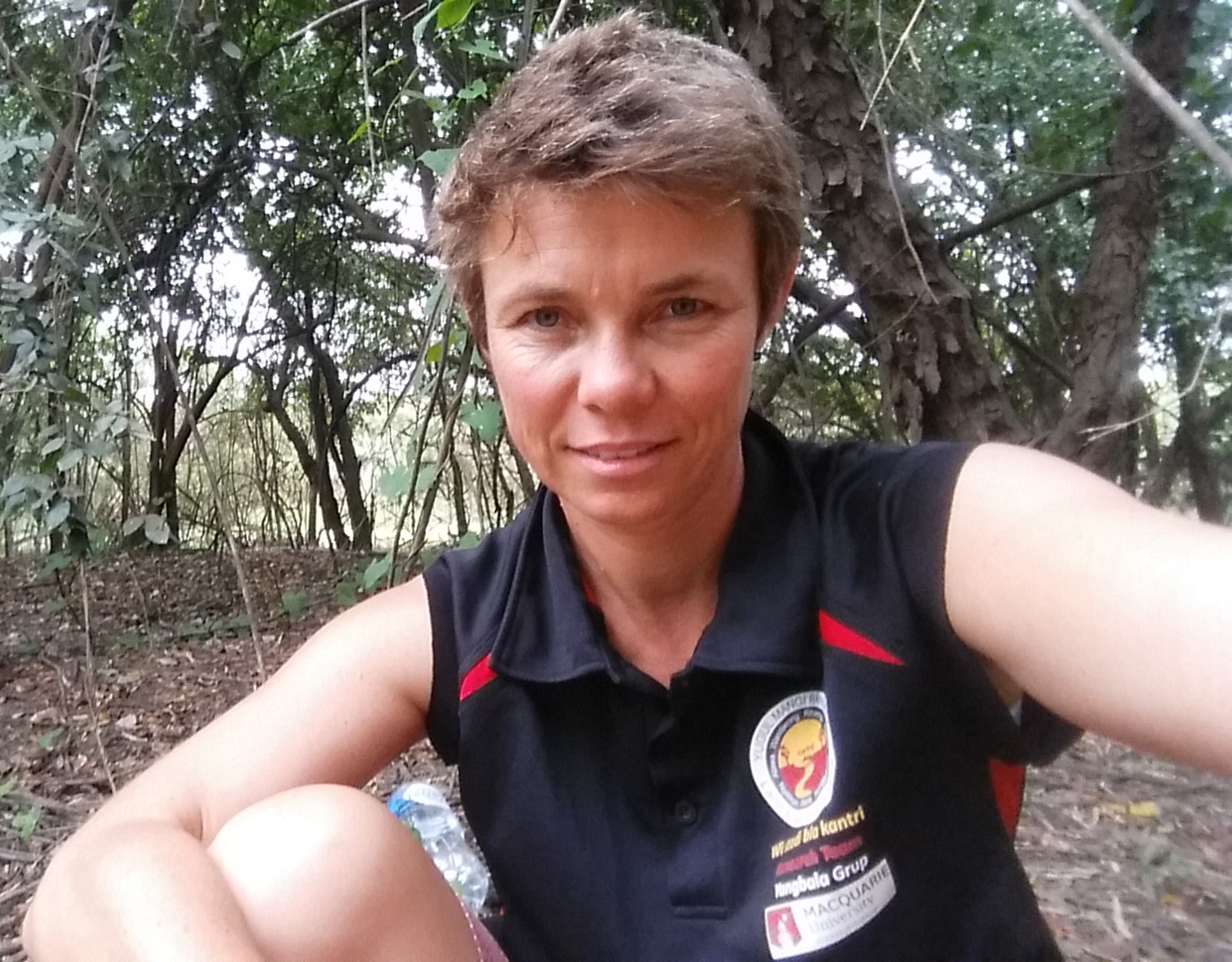
I conduct cross-cultural applied ecological research where I collaborate with Indigenous People to combine Indigenous and Western knowledge to better understand and manage our environment. My Indigenous colleagues, postgrad students and I are working on a range of topics including: tropical wetland health, impacts of invasive species, biodiversity decline, climate change, cultural burning and prehistoric rainforest tree dispersal by Indigenous people. All of our research includes Indigenous people, knowledge and ways of doing.
What inspires you?
I am inspired to conduct collaborative research with Indigenous people and to record Indigenous knowledge, as for too long they have been overlooked in environmental decision-making and research. Indigenous knowledge and culture is rich – it encodes millennia of interaction between Indigenous people and their environments. Western science has shown it cannot provide all the answers for sustainable environmental management. A wise and generous Elder I worked with for 10 years in south east Arnhem Land, Mrs Cherry Wulumirr Daniels OAM (now deceased), taught me a great deal about Indigenous culture, humanity and cross-cultural ways of caring for Country. I now work with her children and grandchildren to keep her words and passion about the environment and culture alive. A deeper understanding of linked bio-cultural values is key to human re-connection and management of the environments that sustain our lives and wellbeing.
How do you engage with end-users of your research?
I spend a great deal of time in Aboriginal communities and on Country with Traditional Owners, mainly in Arnhem Land and northern NSW. Mutual benefits are very important to my research. My research is applied, and needs to be relevant to our end users so our findings and cross-cultural methods can be adopted. The best way to do this is by including end-users in the research itself, in all stages, from employment, project design, data collection and analysis to communication. Important to our Indigenous colleagues is the maintenance of their culture, knowledge and languages, including opportunity for first hand intergenerational knowledge transfer. As a result, we do participatory research/citizen science with local Elders, Rangers and youth, and have produced a range of local educational products including multilingual plant and animal guide books and online resources (with the Atlas of Living Australia), biocultural seasonal calendars and videos. Academia, government and NGOs are also end-users of our research so we also produce a range of written and oral outputs for them to convey the results and benefits of our research including journal articles, reports, media pieces and presentations.
How do you fund your research?
Through grants from the Australian Research Council, NGOs, government departments and philanthropy.
What’s a recent success that you’re proud of?
Elders of the remote Aboriginal communities I work in want to see their young people going to University too. As a result, over the last few years I have worked with communities of south east Arnhem Land and Walanga Muru at Macquarie Uni to establish Australia’s first Bush Uni at Wuyagiba outstation, Northern Territory. We trialled a pre-Uni preparation course at Wuyagiba in 2018 based on donations and in 2019 we were fortunate to receive $2.5million in funding from the Australian Government Department of Education to develop the Bush Uni. In 2019, 10 Wuyagiba Bush Uni graduates did study at Macquarie Uni in Sydney and another group of 20 local students participated in the pre-Uni course, with 5 accepted to Macquarie Uni in 2020. The Wuyagiba Bush Uni is creating a pathway to tertiary education for remote living Aboriginal people of south east Arnhem Land and is set to expand over the coming years to offer more courses and hopefully facilitate economic development and local empowerment of this very remote part of Australia. I feel honoured and proud to work with inspiring Elders and young people on this project, it’s just awesome. It would be great to watch more Indigenous scientists, educators, health workers and leaders come out of this program.
What’s one piece of advice you would give to an early career researcher?
Think big, follow your heart and don’t be scared to do things differently.
What do you find most rewarding about your job?
Working in rugged and remote parts of Australia with First Australians who are so generous and resilient and passionate about their culture and Country.
What do you find most challenging about your job?
Being away from family and friends for long periods of time and observing the impacts of colonisation on our First Nations communities and Country.
April 2020
Spotlight on…Prof Michael Richardson - March 2020
Prof Michael Richardson, ARC Future Fellow, Department of Psychology, Faculty of Medicine, Health and Human Sciences
What’s your area of research?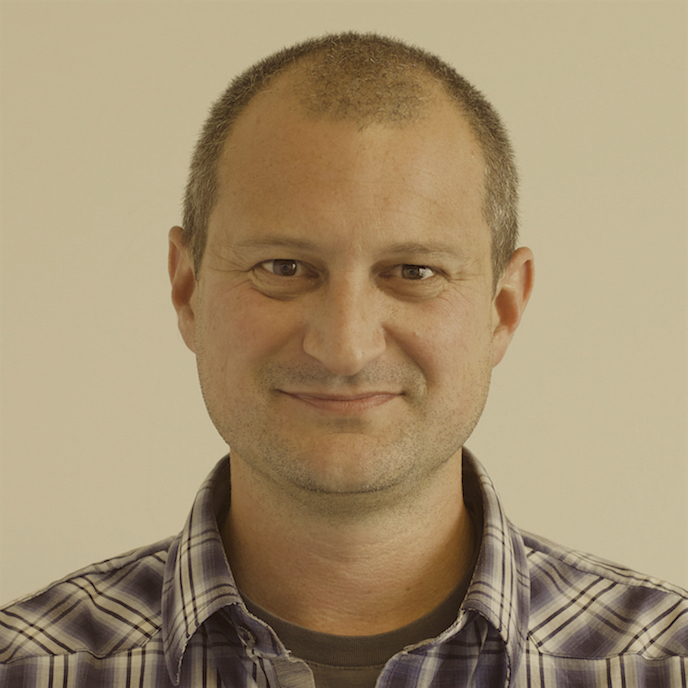
My research is directed towards understanding and modelling the complex dynamics of everyday human and team behaviour. This involves recording human and team behaviour in real and virtual (VR) task settings using a range of motion-tracking, eye-tracking, audio-visual, and physiological measurement techniques. I then employ computational and dynamical data analysis and modelling methods to identify and simulate the cognitive and perceptual-motor process that lead to effective human and team performance. I also employ the resultant models to developed interactive artificial agents for robust human-AI training technologies.
What is the research question you aspire to answer or the problem you aspire to solve?
If the theoretical principles and mathematics of symmetry (i.e., Group theory) can be used to understand and predict human behaviour.
How do you fund your research?
Research grants from the Australian Research Council or the Australian Department of Defence.
Are you currently working on a grant or high-impact paper? What’s it about?
Always…(Sigh). A unified theory of everything…(Sigh).
What’s one piece of advice you would give to an early career researcher?
Don’t let grant rejection grind you down, its 50% chance. And don’t wait for funding to start a proposed project. If possible, start the work the day after the proposal is submitted. If your proposal is unsuccessful, you will have more data to support a resubmission. If you are successful, you are ahead of the game.
What do you find most rewarding about your job?
Mentoring and collaborating with Honours and HDR students.
What do you find most challenging about your job?
Mentoring and collaborating with Honours and HDR students.
Who at Macquarie University deserves recognition for their outstanding contribution to the university’s research effort?
The (former) Faculty of Human Sciences Research Office.
March 2020
Spotlight on...Prof Frances Rapport - February 2020
Australian Institute of Health Innovation, Faculty of Medicine and Health Sciences
Google Scholar
Macquarie University Profile
What’s your area of research?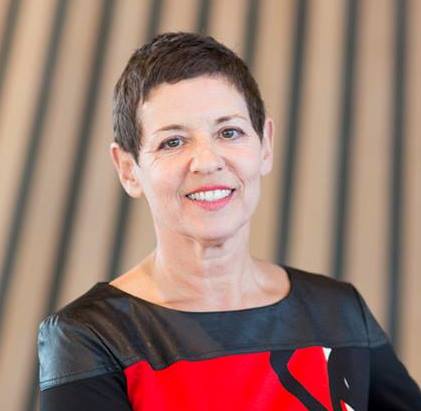
The official name of my discipline is ‘Health Implementation Science’, basically that means I work to ensure all the effort that goes into medical and health services research has a chance of seeing the light of day through useful, practical translation to improvements to healthcare delivery and patient experience.
Who inspires you?
Well it’s not the usual… celebrities or Nobel prize winners… no, it’s those people whose paths have crossed my own over the years and who have impressed me in the way they have managed to stay true to themselves.
What inspires you?
Improving my jab-cross.
What is the research question you aspire to answer or the problem you aspire to solve?
How to improve patients' healthcare experiences. That might be someone suffering from a disease, a mental illness or an emotional problem, but at the moment I am concentrating on people with epilepsy. Epilepsy is a wretched, debilitating illness that affects 1 in 25 Australians. It can take an average of 17 years for those at the more severe and complex end of the scale to obtain much-needed treatment and care. My research aims to ensure that there is a glimmer of hope for them and for their eventual seizure-freedom.
How will your research make the world a better place?
We live in troubled times, and in my darker moments I question whether research can really make the world a better place. But we must keep trying, and in particular we should be publicizing our results loudly and clearly in the hope of securing a safer and healthier future for us all. There is some excellent research being undertaken at Macquarie that is well-deserving of a global airing.
How do you engage with end-users of your research?
I ask them questions so they can ask themselves more searching ones.
How do you inspire or encourage women, other minorities or under-represented groups into your discipline?
I try to do so by example. I am a female, Welsh, Jewish, artist-turned-Professor and I would like to think of myself as a working example of disciplinary flexibility!
How do you fund your research?
Grants, grants and more grants.
What’s a recent success that you’re proud of?
Developing a model of care (the PRIME model), that aims to improve the quality of healthcare services for epilepsy patients. Plans are afoot to test the model across specialist tertiary epilepsy centres in Sydney, so that patients can receive the treatment they need more quickly and effectively, and at the same time come to know their disease with less fear and anxiety.
What’s one piece of advice you would give to an early career researcher?
‘Don’t be scared to think outside the box, be rigorous in your work, and pack some sandwiches, you’re in it for the long-haul’.
What do you find most challenging about your job?
Having to chase the silver dollar.
If you were given a $200,000 research grant, what would you do with it?
I would set up and pilot ‘MacQual’ – a vision I have for the first Qualitative Health Research Centre of Excellence at Macquarie University. MacQual would bring people together from across Faculties and Institutes, offering a much-needed, coherent voice to the excellent, yet siloed, qualitative research being undertaken across the campus. Not only would MacQual deliver fellowship and joint learning opportunities, but also new Category 1 grants. This would serve the interests of a forward-thinking university like Macquarie, enhancing its global reputation, and supporting its ethos of novel, joint-working practices.
Who at Macquarie University deserves recognition for their outstanding contribution to the university’s research effort?
Jeffrey Braithwaite, hands down.
February 2020
Spotlight on...Dr Catherine Bishop - January 2020
Dr Catherine Bishop, ARC DECRA Fellow, Centre for Workforce Futures, Macquarie Business School
What’s your area of research?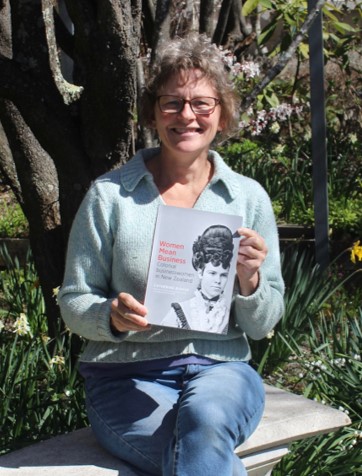
I am a historian primarily of women and business in New Zealand and Australia across the 19th and 20th centuries. I am also writing a biography of Annie Lock, an Australian missionary to Aboriginal people. I am interested in the ways we represent the past in heritage and, because I found an amazing archive, I am also researching a series of American post-WWII world youth forums.
Who inspires you?
Jacinda Ardern – unlike many current prime ministers she seems to put people’s welfare before business welfare. I need to keep remembering this as I get excited in my research finding more women/men in business…is this actually a good thing?
What inspires you?
Those moments that restore your faith in human nature – when you lose your wallet/passport/house keys and someone actually finds them, picks them up and finds a way to get them back to you. This restores my faith in human nature and so there is a point to doing research.
How do you engage with end-users of your research?
My favourite part of not having a ‘proper job’ was that it gave me time to go around local groups and talk to them about my research. Having spent hours in the archives digging up information, sharing it directly with the general public is fabulous – especially when it makes them see the past (and therefore the present) differently. (Nothing like meeting the great granddaughter of someone in your book who shows you a family photo of the woman you haven’t seen before)
As part of my current project researching 20thC Australian businesswomen I will be engaging with businesswomen’s networking groups. Understanding how women of the past overcame obstacles to business, or even just knowing that being in business is not challenging ‘women’s place’ – that women have always worked, albeit often unheralded – can provide confidence going forward.
How do you fund your research?
In November 2018 I was awarded a DECRA. This was 6 years since my PhD. During those 6 years I worked half time as professional staff in history departments, did a bit of teaching and applied for every single little research grant going. I had some success. I was fortunate to have some financial support so that this worked for me and I had time to publish. For most people in the post-PhD world, it is an endless grind of casual, underpaid contract teaching with no time to think or publish. Unfortunately, this means that there are voices that are not heard in academia – those who do not have the luxury of being able to afford to research.
What’s a recent success that you’re proud of?
We held a workshop in the UK for the contributors to our edited collection (see below), and included some PhD students and other local scholars. We had no funding except for catering so everyone had to find their own funds to attend. And they did! Much to our surprise, we had 20 people in the room and the remaining 5 contributors skyped in. Everyone was assigned 3 chapters to read…and they did! We had the most productive and exhilarating two days. Not only did we all learn so much from each other, but our book is now more cohesive, and we have created global network of scholars in the area.
Are you currently working on a grant or high-impact paper? What’s it about?
I am currently co-editing a collection of 18 chapters, Female Entrepreneurs in the Long Nineteenth Century: A Global Perspective (Palgrave 2020), with Dr Jennifer Aston of Northumbria University. This is the first ever book to discuss businesswomen beyond a trans-Atlantic frame, including chapters on Asia, Africa, Australasia and South America. It breaks new ground in our understanding of the ways women engaged in the economy and offers a range of innovative methodologies and approaches to history.
What’s one piece of advice you would give to an early career researcher?
Make it work for you. Don’t become a slave to the next rung on some imaginary ladder. You have to love what you do but also have a Plan B. Give yourself a deadline of a number of years after your PhD before you decide to find another path. It is easy to get sucked in to thinking that an academic career is the only one worth having, and it isn’t. One of the hardest things to remember too is that not getting a grant or job is not failing – it is sometimes bad luck – there are just too many good and deserving people out there competing for the same thing.
What do you find most rewarding about your job?
- The eureka moment in the archive when you find something that suddenly makes the whole messy jigsaw make sense. This is affirmation.
- Interesting conversations. Learning something new from a conference paper or article or just a conversation with a colleague – something that makes you rethink your research. This is connecting.
- Giving feedback on a student’s article or chapter and then when you read the revision, they have not only taken feedback on board but have gone further and found their own voice. This is impact.
- That fabulous moment when your new book is printed, and you get the advance copy. This is pure self-indulgence.
What do you find most challenging about your job?
The administrative red tape that is slightly different at every institution, all of whom have their own peculiar ways of doing things.
If you were given a $200,000 research grant, what would you do with it?
Humanities research initially does not cost as much as scientific or medical research – the main costs are travelling to archives and paying ourselves for research time. But you always have dreams for how to spend money. I have two.
One important aspect of humanities research that is often forgotten is collaboration. Attending and presenting at conferences and workshops, having those snatches of conversation over coffee or lunch in the breaks, making connections with others working in the field – all of these have enhanced my research and its impact over the last few years. Enabling unfunded scholars to connect at a focused workshop would be one way of spending some money.
The second involves the digital presentation and manipulation of data. In my research I have gathered biographical information about many individuals that I could not include in my publications. Creating a website for that information – a biographical dictionary of businesswomen – is one option, and, even better, linking it in with existing resources, namely the Australian Women’s Archives Project. This would allow others to access the results of my research, without having to reinvent the wheel. Similarly, a digital mapping project, mapping locations of businesses across time in Sydney or elsewhere, would enhance our historical analysis of the way the city and businesses developed.
January 2020
Spotlight on...Dr Morten Thaysen-Andersen - December 2019
Dr Morten Thaysen-Andersen, Senior Research Fellow, Department of Molecular Sciences, Faculty of Science and Engineering
What’s your area of research?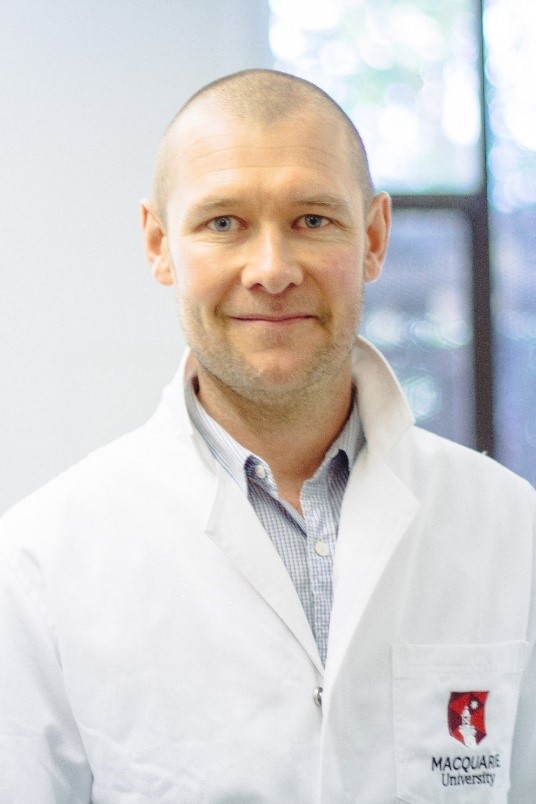
Glycoimmunology, the study of complex carbohydrates (sugars) in the human immune system. My research interest is to understand how sugars are involved in immune-related diseases and conditions including inflammation, bacterial infection, sepsis, and cancer.
Who inspires you?
People who think laterally, are multi-disciplinary and are able to interact with folks of all walks of life. People who listen, are positive-minded, curious and “big-picture” oriented. People who see opportunities not limitations.
What inspires you?
Seeing things change (mostly) for the better around us. Building on knowledge created by past and present scientists, and creating and passing on new knowledge to the next generation inspires me, in particular in this “post-truth” world where meanings, feelings and opinions sometimes matter more than facts.
How will your research make the world a better place?
My team produces fundamental biochemical knowledge describing how the immune system works. Such fundamental knowledge is a prerequisite for the downstream translational research and therapeutic developments that can improve the life of the many individuals affected by immune-related diseases. It is fantastic to see immunotherapy really taking off and it feels good to contribute to the basic science behind these developments.
What’s a recent success that you’re proud of?
I recently played a role in reinvigorating the glycoscience community in Australasia by chairing the 1st and 2nd Australasian Glycoscience Symposium in 2018-19. It was rewarding to experience the support from the community and to bring together world class research leaders in the area.
What’s one piece of advice you would give to an early career researcher?
Find a research area you are truly passionate about, find a mentor who cares about you, and surround yourself with enthusiastic people who share your values. Stay open-minded and keep on asking questions. Remember your “why” and be patient; good science takes time.
What do you find most rewarding about your job?
Witnessing students grow into becoming field experts and mature as scientists are amongst the most rewarding parts of my job as a group leader. I also really enjoy the collaborative aspects of modern science and that the scientific method builds on the border-less sharing of knowledge.
December 2019
Spotlight on...Dr Karin Sowada - November 2019
Dr Karin Sowada, ARC Future Fellow, Department of Ancient History, Faculty of Arts
What’s your area of research?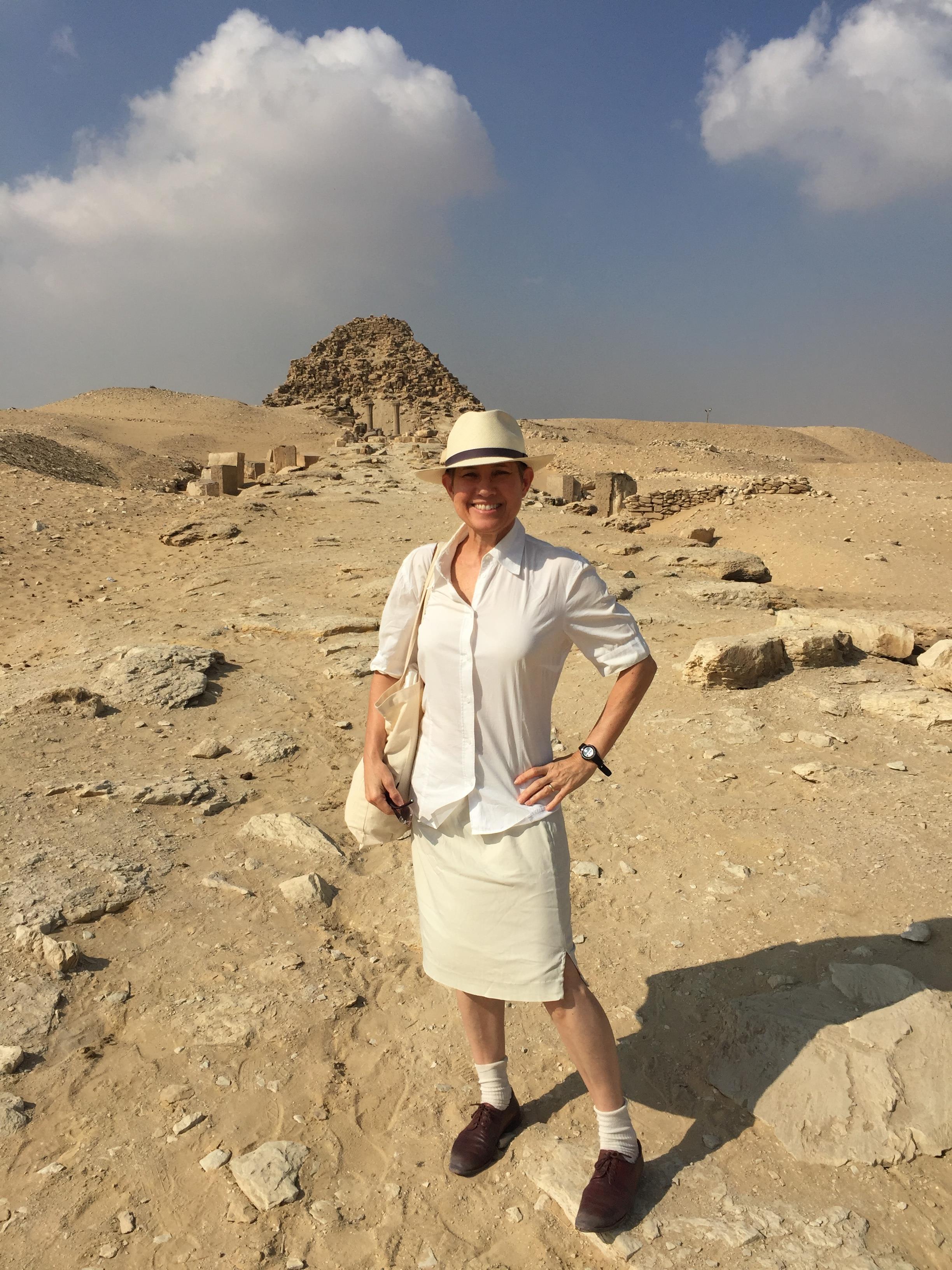
Despite the grandeur of the Pyramids, little is known about the reigns of the pharaohs who built them. I want to change that. My research examines the role and impact of Egypt as a state actor on the communities of the eastern Mediterranean during the Pyramid Age of the third millennium BC. Using archaeological, historical and new scientific data, the research program focuses on Egypt's economic interests and statecraft as drivers of change in the region.
Who inspires you?
George Lucas, creator of Star Wars.
What inspires you?
The Australian bush. It's my creative 'thinking space', and a place of mental rest. The ideas in my Future Fellowship were mapped during a road trip while staring at the landscape of outback NSW.
How do you inspire or encourage women into your discipline?
I encourage women by including them in my work as collaborators, mentoring women into opportunities, and actively listening to their needs. As a mother, I know that work-life balance is tricky and I relish opportunities to help others navigate their careers and family responsibilities.
What’s a recent success that you’re proud of?
Our research team recently had a major paper accepted for Levant, a leading international archaeology journal. The paper publishes scientific analysis on a large dataset of imported pottery from Giza, revealing for the first time the destination of royal trading expeditions conducted by the pharaohs who built the Pyramids. I am especially pleased that the paper was produced by an all-women research team.
What do you find most rewarding about your job?
I am a story-teller at heart. Archaeology is part anthropology, part story-telling, part science. I love making discoveries, creating new knowledge, and sharing it with people, especially in the public realm.
View a Channel 7 News interview with Dr Karin Sowada
November 2019
Spotlight on…Assoc Prof Melissa Norberg - October 2019
Assoc Prof Melissa Norberg, Deputy Director of the Centre for Emotional Health, Department of Psychology, Faculty of Human Sciences
What’s your area of research?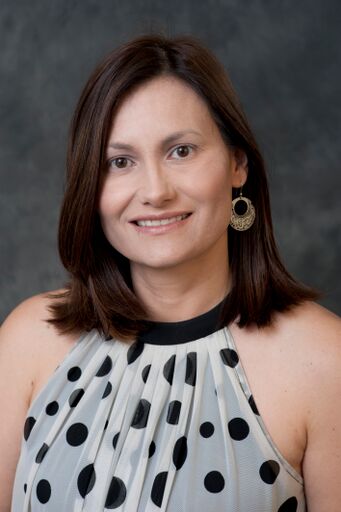
Broadly speaking, my research is focused on anxiety and its related disorders. My lab is focused on improving treatment outcomes. To do that, we need to conduct experimental research to understand what causes and maintains problematic behaviour. Recently, my lab has been trying to determine what underlies excessive acquiring and saving behaviours so that we can improve treatment for hoarding disorder, which currently only helps 25% of people who receive it.
How will your research make the world a better place?
I hope that my research on hoarding disorder will not only help those who experience the disorder, but also the broader population. Australians spend over $10.5 billion a year on goods they rarely or never use. Many of these possessions end up in overfilling landfills. In order to care for our environment, we need to learn how to stop acquiring possessions for their psychological properties.
How do you engage with end-users of your research?
I try to reach end-users through a variety of means. I’ve participated in various media interviews, given public lectures, written articles for The Conversation, and provided workshops and talks to organisations that provide assistance to individuals experiencing mental health difficulties.
How do you inspire or encourage minorities or under-represented groups into your discipline?
I try to lead by example. I used to do everything I could to hide how poor I grew up. But now, I think it is better to be open about my childhood so that other minorities and low SES individuals can know that it possible to achieve your dreams despite not having many of the opportunities afforded to other people.
Who at Macquarie University deserves recognition for their outstanding contribution to the university’s research effort?
This is a tough question. I’ve worked with a lot of amazing people that deserve recognition. That said, one of the things I’m most proud of is the undergraduate student involvement in my lab. I have had many terrific students in my lab, but one individual definitely stands out. Cassandra Crone, whose name may ring a bell as she is super involved with many organisations on campus, joined my lab during the second year of her undergraduate degree. Since then, she has worked on many projects in my lab, presented the lab’s research at scientific conferences, and has published five papers with me, with another two currently under review. Her ambition, dedication, and contribution to Macquarie University deserve a medal and an HDR scholarship!
October 2019
Spotlight on...Dr Mauricio Marrone - September 2019
Dr Mauricio Marrone, Senior Lecturer, Department of Accounting and Corporate Governance, Macquarie Business School
What’s your area of research?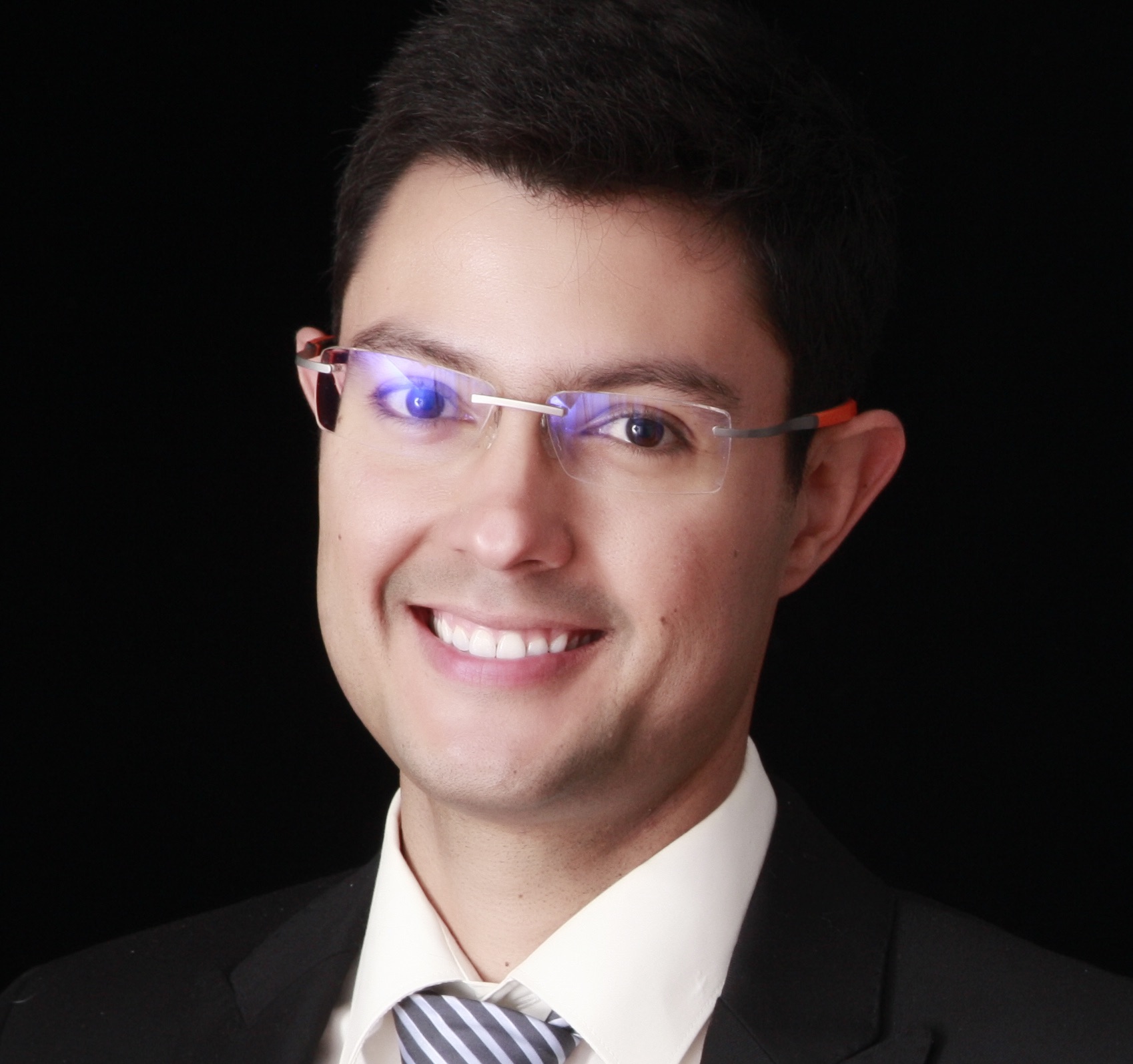
I research how text mining and machine learning can help researchers identify research gaps, when doing literature reviews, for instance, and explore potential collaborations with other researchers.
How will your research make the world a better place?
I am working to create a tool that helps identify what research is needed. Research extends our knowledge, informs our behaviour and policy-making, and as such advances our society and nation. Research in many fields is important for Australia’s economy and for the wellbeing of Australian citizens. For example, research in science, medicine and engineering advances discoveries and innovation in the treatment of diseases, while market and social research enables businesses to develop better products and services for their customers, and evidence gained from research allows government agencies to tailor their policies and programs to citizens’ needs. My aim is to create a tool that helps identify research gaps quicker and connect research and researchers to fill those with new insights more effectively.
Who inspires you?
It’s various great thinkers at different times and in different contexts. At the moment, I think about E.O. Wilson and his ideas of consilience. He defines consilience as “Literally a 'jumping together' of knowledge by the linking of facts and fact-based theory across disciplines to create a common groundwork of explanation.” I work to create this common ground.
I love how he talks about research:
“Become thoroughly familiar – no, better, become obsessed – with the system. Love the details, the feel of all of them, for their own sake. Design the experiment so that no matter what the result, the answer to the question will be convincing.”
What inspires you?
Going to the library and seeing so many people sharing my thirst for knowledge. I really admire their dedication.
What is the problem you aspire to solve?
I have a couple of problems I wish to solve including:
- Who should I collaborate with and why? This question is of interest, because productive collaborations are often serendipitous events and are hard to get. Through this tool I am developing, I am trying to help connect research areas and researchers that could potentially solve complex problems if they worked together.
- What is the best way to visualise research, the different strands and their progress? Where is potential for research fields to merge and collaborate? Given the research that has been done in the past, we could suggest new research paths that can be forged, or maybe a linkage of two fields or topics in addressing a particular issue.
September 2019
Spotlight on…Assoc Prof Michelle Power - August 2019
Assoc Prof Michelle Power, Department of Biological Sciences, Faculty of Science and Engineering
What’s your area of research?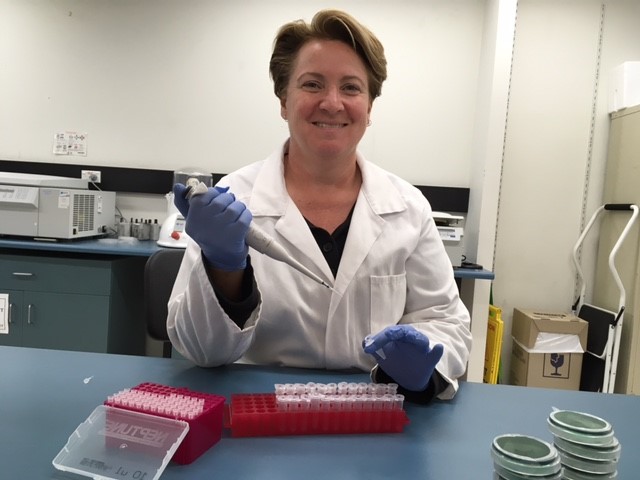
People are most aware of pollutants such as plastics, chemicals and smog. But what about our hidden pollutants, our microbes? We share our homes, cities and food with wildlife and we also share our microbes which presents risks of spreading our diseases to wildlife. We are investigating the spread of human micro-parasites and antimicrobial resistant bacteria to wildlife (seals, penguins, bats, possums and others) and working with the environmental and wildlife sectors to find ways to mitigate risks of this pollution to wildlife health.
Who inspires you?
Captain Catherine Janeway…she’s wise, cool, calm and inquisitive, and a scientist before a captain.
How will your research make the world a better place?
Antimicrobial resistance is a vast and complex problem due to the connection and mobility of resistant bacteria and resistance genes between humans, wildlife, domesticated animals and the environment. I am hoping that as we chip away at understanding some of the pinch points in the environment and continue to work with citizens to empower change in antimicrobial use and actions to counteract disease transmission, that we can prolong some of the current medications that are used today, both in human and veterinary medicine.
How do you engage with end-users of your research?
One of my most rewarding end-user engagement activities is through citizen science, specifically the Scoop a Poop project where citizens can collect a possum scat from their yards for antimicrobial resistance in wildlife surveillance. When it comes to antimicrobial resistance, the important end-users are those that take antibiotics. The Scoop a Poop project has components that engage and empower people in understanding how their actions can contribute to reducing the impacts of resistance and help minimise this global health crisis.
What’s a recent success that you’re proud of?
I recently reached the pinnacle of a five-year strategy on establishing collaborations and model systems to investigate the spread and impact of antimicrobial resistance in Australian wildlife, an area I have been pioneering since 2006. We are now in a great position, have momentum and are generating publications and HDR completions within this area of my research. And hopefully there are many successful grants on the horizon.
Are you currently working on a grant or high-impact paper? What’s it about?
Wildlife are often identified as being a significant source of emerging diseases that infect humans (termed zoonses) and the impacts of this disease exchange is human focussed. I am working on an invited opinion piece that addresses the reverse, the concept that human-associated disease agents have spread to wildlife (reverse zoonoses). Antimicrobial resistant bacteria are a primary example of this spread, we are now seeing more resistant bacteria in wildlife species from the land and in the sea, and we have no idea of the threats this poses to our wildlife.
What’s one piece of advice you would give to an early career researcher?
I would advise a research-only ECR to acquire some teaching, service and outreach experience which will enhance track record and competitiveness. Those who are successful in gaining academic positions will transition from research roles to the three tiers of university business – research, learning & teaching and service – some experience will benefit this transition.
What do you find most challenging about your job?
The most challenging aspect for women in science is saying no. I am a team player and enjoy service and teaching, but that is at a cost of sacrificing research time. Managing this personally and with managers is very challenging at times.
If you were given a $200,000 research grant, what would you do with it?
$200,000? With no prior budget lines? Right now? I would do four things:
- provide a PhD student who will submit at the end of this year with security in knowing there is a bit of salary for 2020 and momentum for her fantastic flying fox research;
- bring some of our rural and remote Scoop a Poop Citizen Scientists to the project's ‘University for a day experience’;
- replace a vital instrument that my research program relies on; and
- use the remainder as leverage for a competitive grant, having co-funding is becoming more important for grant success, and co-funding opens avenues for different schemes.
August 2019
Spotlight on...Assoc Prof Adam Dunn - July 2019
Assoc Prof Adam Dunn, Australian Institute of Health Innovation, Faculty of Medicine and Health Sciences
What’s your area of research?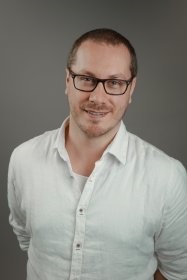
The first of two streams of research I look after in the Centre for Health Informatics is clinical research informatics, where we study the design, production, reporting, and synthesis of clinical trials. Much of my time is spent on creating new ways to measure how studies with industry funding and researchers with conflicts of interest make drugs look safe and effective when they are not. I also look after another stream in public health informatics, where we create new ways to measure how a population’s information diet is reflected in their attitudes and health behaviours. We mostly focus on anti-vaccine rhetoric and how exposure to misinformation can reduce vaccine confidence.
What inspires you?
I always feel a bit jealous when I hear researchers talking about the inspiring and dramatic personal stories that drove them to save humanity or discover new things about the universe. I don’t have any of those kinds of stories; I have just always liked learning new things and tend to ignore disciplinary boundaries.
What’s a recent success that you’re proud of?
I have been working with Florence Bourgeois from Harvard Medical School for around seven years and we recently applied for our first large US-based grant together. It was awarded earlier this year and we will receive four years of funding to develop new methods to make use of results data from ClinicalTrials.gov for systematic reviews and pharmacovigilance. My hope is that the new methods we create as part of the grant will be used to save lives by identifying safety issues in approved drugs much faster than has been possible in the past.
Are you currently working on a grant or high-impact paper? What’s it about?
I have been working on a US-based grant with Kenneth Mandl from Harvard Medical School. Many large media organisations have recently started trying to build automated fact-checking tools to reduce the spread of misinformation. The problem is that even if we can quickly identify misinformation, most of the interventions aimed at mitigating its impact on behaviour haven’t worked. Our grant is different because we propose new methods for predicting which people are most susceptible to misinformation from their social media data, and empowering them with tools based on socially embedded prebunking: automated warnings that pop up whenever they encounter misinformation online.
What’s one piece of advice you would give to an early career researcher?
I finished my PhD thesis soon after I turned 24 so my experience as an early career researcher is from a long time ago, and obscured by confirmation bias. But I think what I have discovered slowly over the last 12 years is that navigating research is mostly about navigating researchers. Some researchers chase accolades for themselves by being selfish gatekeepers who feel they own ideas and research. Others are generous with their time and ideas. Avoid the former; be the latter.
What do you find most rewarding about your job?
It is easy to forget that working in a university is an incredible privilege. I still find it astounding that I actually get paid to work at a campus where I can hear dozens of languages as I walk to get coffee in the morning one day, and spend time with the world’s most brilliant minds on the other side of the planet the next.
July 2019
Spotlight on...Dr Leigh Boucher - June 2019
Dr Leigh Boucher, Senior Lecturer, Department of Modern History, Politics and International Relations, Faculty of Arts
What’s your area of research?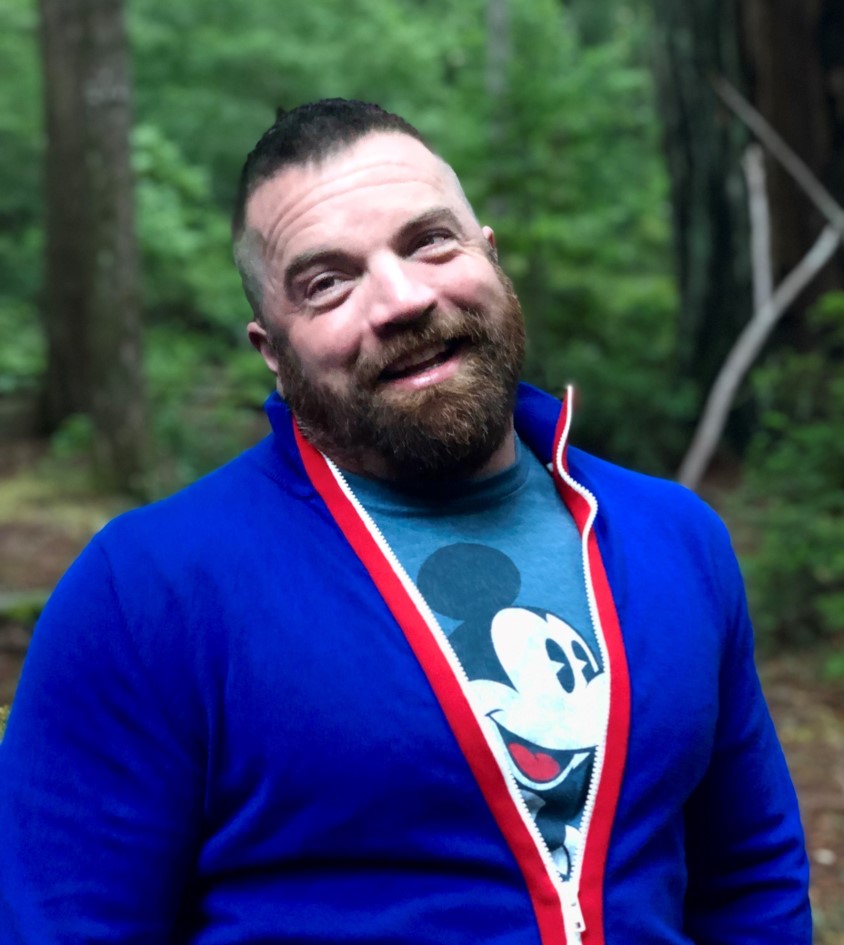
I’m a cultural historian, which means I investigate how the categories and ideas that shape our everyday life and politics took shape over time. At the moment I’m involved in a collaborative project with colleagues at MQ and Flinders Universities. This project examines how ideas about sexuality and gender have reshaped our political life over the past fifty years. The 1970s marked a period in which the ‘personal became political’ as activists argued for the liberation of people who were oppressed by ideas about gender and sexuality, but the next fifty years witnessed tremendous contests over the rights of sexual and gender minorities which continue today. This project traces how the visibility of activism around questions of domestic life, same-sex marriage, trans rights, sex-education, father’s rights and much more have remade how politics is conducted in Australia. Rather than thinking about this as a story of progress from repression to liberation and acceptance, we think these campaigns have challenged the rules of our political life in ways that still surprise and unsettle. See: http://sexualcitizenship.org
What inspires you?
My work, if I’m honest, is often inspired and motivated by frustration and despair about our contemporary world, not least the ways in which ideas about who and what is normal tend to exclude and oppress. I don’t just mean that ‘conservatives’ make the lives of trans kids harder than they need to be, although that is certainly the case. I also mean that campaigners for same-sex marriage last year made certain kinds of gay and lesbian lives look ‘normal’ while suggested other ways of organising kinship and intimacy were somehow ‘less than’ this model of the happy monogamous couple. The narratives that shape our political debates in Australia are so blunt and tend to justify all kinds of oppressions and exclusions. My work is an attempt to bring a critical gaze to the stories we tell about ourselves and others. I want to suggest there might be other, more inclusive and expansive ways to think about how we organise our intimate, political and public lives.
What is the research question you aspire to answer or the problem you aspire to solve?
I think that all the researchers on this project have been frustrated by the naïve and simplified stories of progress or decline that we witness when questions of gender and sexuality emerge in our public life. This story orients our responses to issues like gay marriage, trans-recognition, or father’s rights in blunt and simplifying ways. Indeed, it also obscures just how quickly these transformations have occurred – it is little wonder they provoke such heated responses, fifty years is a short time to remake the rules about who can speak and what political identities are legitimate. Our political leaders and commentators need a much better sense of how gender and sexuality have remade the rules for inclusion, thinking critically about this history rather than telling a blunt story of progress achieved or denied can help us to navigate this complex and contested landscape.
What’s a recent success that you’re proud of?
I recently attended a graduation where four students I had supervised along with other colleagues were awarded their PhDs along with two MRes students. It was pretty incredible to watch them achieve this milestone and think I had some small part in shepherding them through this process. Their research was incredible and I’m pretty sure a few of them are going to be my boss one day. One of the most satisfying things as an academic is to think about the way our work with HDR students creates a cohort of emerging academics.
What do you find most rewarding about your job?
I still get a buzz out of teaching when it is going well. It’s pretty incredible when I’ve worked with students in a lecture theatre or tutorial room for an hour and it feels like they are thinking differently about something they took for granted before. Being part of a moment when somebody critically ruptures how they once thought about themselves or the world they live in as an immense privilege; nothing in my academic life has ever come close to the feeling of walking out of a tutorial room or lecture theatre when everybody has been energised and excited by what has happened over the previous hour or two.
June 2019
The Ian Potter Foundation awards $200,000 to the Department of Biomedical Sciences - October 2018
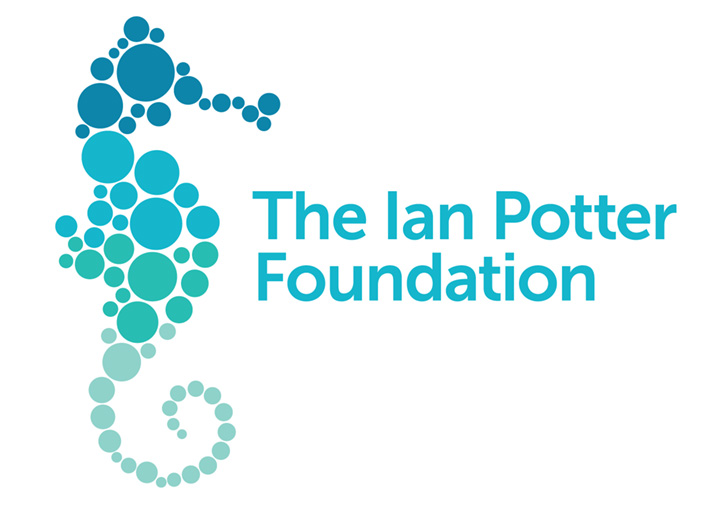 The Ian Potter Foundation is one of Australia’s major philanthropic foundations. The Foundation makes grants nationally to support charitable organisations working to benefit the community across a wide range of sectors including the arts, environment, science, medical research, education and community wellbeing. The Ian Potter Foundation aims to support and promote a healthy, vibrant and fair community for the benefit of all Australians.
The Ian Potter Foundation is one of Australia’s major philanthropic foundations. The Foundation makes grants nationally to support charitable organisations working to benefit the community across a wide range of sectors including the arts, environment, science, medical research, education and community wellbeing. The Ian Potter Foundation aims to support and promote a healthy, vibrant and fair community for the benefit of all Australians.
Prof Helen Rizos, with contributing efforts of Assoc Prof Julie Atkin, Dr Elena Shklovskaya and Mr Alistair Brooks, was awarded $200,000 from The Ian Potter Foundation to contribute towards the purchase of a flow sorter.
The flow sorter will enable the separation of patient tumour biopsies into specific cancer and stromal cell sub-populations. This study will include melanoma patients as part of a Macquarie-led NHMRC Program Grant and other cancer patients undergoing treatment at Macquarie University Hospital, as part of the Macquarie Live Cancer Biobank. The sorter will also accelerate the development of genetically engineered cellular models of motor neuron disease (MND) and cancer. These models can be used to understand disease mechanisms, and to discover and validate novel treatments.
As part of our Faculty of Medicine and Health Sciences, the Department of Biomedical Sciences is undertaking leading research in cancer as well as in motor neuron disease, and the flow sorter will help accelerate these efforts. For example, the department’s Precision Cancer Therapy (PCT) research team is focussed on improving survival of patients with advanced melanoma. PCT is a member of the Melanoma Institute Australia, which manages the largest melanoma biobank in the world, and their research explores biomarkers that predict patient response to provide rational choice of therapy combinations for better treatment. This multidisciplinary, translational research relies on examining unique, longitudinal patient samples, and the flow sorter will enable ready exploration of the sub-populations of cancer cells in these tissue samples.
The department is also home to the largest MND-focussed research centre in Australia, with over 70 researchers with expertise in genetics, cell biology, proteomics, transgenic zebrafish and mouse research programs. The centre is dedicated to finding the causes of MND and developing new, effective treatment strategies. MND research at Macquarie is driven by patient samples and the centre manages the Neurodengenerative Disease BioBank of over 12,000 samples banked from MND clinics at Concord, Royal Prince Alfred, Westmead and Macquarie University Hospitals.
The Ian Potter Foundation saw the value of supporting this research in these two important diseases. Melanoma is the third most commonly diagnosed cancer in Australia, with over 12,000 new diagnoses and 1,500 deaths each year. Therapies targeting immune activity and tumour pathways have produced unprecedented clinical responses in melanoma patients, but both treatments are severely restricted by resistance. Attention is now focused on inducing durable responses using personalised therapy, and the PCT team is seeking to define markers that predict melanoma response to therapy and to understand mechanisms of resistance to design new, effective treatments. Though not as common as melanoma, MND is a fatal, rapidly progressing neurodegenerative disorder with no effective treatment: as the disease develops, progressive paralysis occurs with only support and palliation available. Understanding the mechanisms of neurodegeneration is critical in designing novel and effective treatments for MND. Teams within the MND centre are developing unique animal and neuronal cellular models to examine disease mechanisms and to screen novel small molecule compounds that show activity against MND pathology. Both areas will soon be better able to address important, clinically relevant research questions thanks to the generosity of the Ian Potter Foundation.
October 2018
Macquarie University success in the NHMRC and beyondblue Targeted Call for Research - August 2018
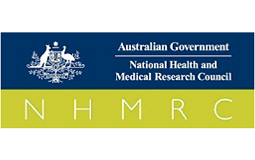 On 19 April 2017 the NHMRC announced a Targeted Call for Research into depression, anxiety and suicide among elderly Australians (65 years and older). The Targeted Research Call will be co-funding with beyondblue. The call focused on exploring ways to prevent depression, anxiety and suicide among elderly Australians and on improving the detection and effective management of these conditions, through new and existing interventions and models of care. In other words, how can the rates and impacts of depression, anxiety and suicide among elderly Australians living in the community and/or in residential aged care services be reduced?
On 19 April 2017 the NHMRC announced a Targeted Call for Research into depression, anxiety and suicide among elderly Australians (65 years and older). The Targeted Research Call will be co-funding with beyondblue. The call focused on exploring ways to prevent depression, anxiety and suicide among elderly Australians and on improving the detection and effective management of these conditions, through new and existing interventions and models of care. In other words, how can the rates and impacts of depression, anxiety and suicide among elderly Australians living in the community and/or in residential aged care services be reduced?
NHMRC and beyondblue allocated a total of $5 million to support a small number of research projects via this targeted research call. The projects will commence over the period 2018-2022. NHMRC and beyondblue funded seven grants (out of 39 applications), announced by The Hon. Greg Hunt on Friday 27 July 2018.
The Centre of Emotional Health in the Faculty of Human Sciences were successful with two applications in the Targeted Call for Research into depression, anxiety and suicide among elderly Australian. Macquarie University’s total funding awarded from this scheme is $1,803,540.80.
The projects will be led by A/Professor Viviana Wuthrich and Distinguished Professor Ron Rapee. Chief investigators on each of the teams include Macquarie University researchers, Dr Henry Cutler, Professor Andrew Georgiou, Dr Carly Johnco and Professor Mike Jones.
This is an exceptional achievement for the Faculty of Human Sciences and the Centre for Emotional Health. The researchers in the Centre for Emotional Health concentrate on the understanding, treatment and prevention of anxiety, depression and related mental health problems. Internationally renowned for their research into anxiety, including several ‘world-first’ findings, they conduct research that focuses on emotional disorders and wellbeing across the lifespan.
Details of the success grants are below:
APP1151138 (led by A/Professor Viviana Wuthrich) - $1,022,888.60
Translating Evidence-Based Psychological Interventions for Older Adults with Depression and Anxiety into Public and Private Mental Health Settings Using a Stepped Care Framework
This project aims to evaluate the feasibility of implementing evidence based psychological interventions to treat geriatric depression and anxiety in real world (public and private) mental health settings. The outcomes of this research will provide important information about how to effectively translate evidence-based low intensity and moderate intensity interventions into routine care, and the cost benefits associated with such a model.
APP1151186 (led by Distinguished Professor Ron Rapee) - $780,652.20
Improving Mental Health and Social Participation Outcomes in Older Adults with Depression and Anxiety
This study will evaluate a comprehensive treatment program for older adults who are suffering depression and anxiety. We expect that this new treatment program will be more powerful than standard cognitive behavioural therapy. Through this treatment we will increase social participation and quality of life and reduce depression and anxiety in older Australians.
August 2018
Helping families using genetic sequencing - June 2018
Professor Deborah Schofield, Director of the Centre for Economic Impacts of Genomic Medicine (GenIMPACT) and a 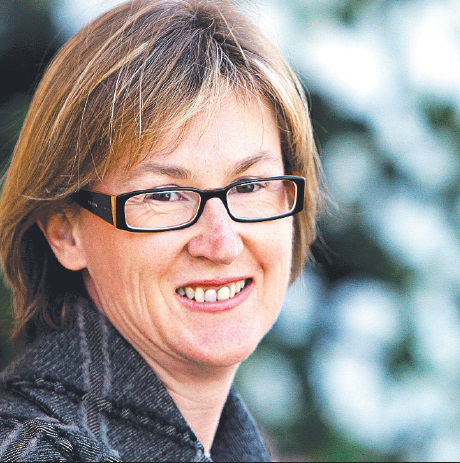 multidisciplinary team of clinicians and scientists and clinicians have paired up with partner organisations Illumina, Neurogentics Service, Royal North Shore Hospital, Sydney Children’s Hospitals Network (SCHN), Clinical Genetics Service, Randwick, Genome.One, NSW Health Pathology’s Genetics Laboratory (Randwick) and Genetic Alliance Australia (GA) to tackle the complex and devastating issue of genetic disease diagnosis.
multidisciplinary team of clinicians and scientists and clinicians have paired up with partner organisations Illumina, Neurogentics Service, Royal North Shore Hospital, Sydney Children’s Hospitals Network (SCHN), Clinical Genetics Service, Randwick, Genome.One, NSW Health Pathology’s Genetics Laboratory (Randwick) and Genetic Alliance Australia (GA) to tackle the complex and devastating issue of genetic disease diagnosis.
Patients and families affected by a Genetic Disease (GD) face a lifetime of social and economic impacts, including: financial pressure, relationship strain, poor carer physical and mental health as well as fear and uncertainty about recurrence in future children. GDs are estimated to account for 10% of infant mortality, 20% of paediatric hospitalisations, and 10% of inpatient hospital costs.
The Human Genome Project and Whole Genome Sequencing (WGS) has brought many benefits to human health and our understanding of human diseases and has enabled the identification genetic mutations in thousands of diseases. However, these extraordinary advances in technology have not converted to accurate and accessible diagnostic tools for GD patients. There is also no comprehensive economic model of the costs and benefits of technologies such as whole genome sequencing (WGS) and thus limited capacity to estimate the potential economic benefits of preventing or treating GDs.
Addressing the problem
“There is currently a significant gap between the promise of genomic medicine and the economic evidence needed to make it accessible to all families who need it”, says Professor Schofield. “This proposal will fill this gap and provide evidence to be help health departments develop policies and new services for GD patients and their families to access this new technology and obtain a genetic diagnosis to improve their health outcomes with precision medicine.”
She adds, “With the price of genomic testing becoming increasingly affordable, many more families could soon be able to obtain an accurate genetic diagnosis, resulting in targeted management and avoidance of ineffective treatments, some of which may have serious adverse consequences. Further, a genetic diagnosis provides information to assist with family planning. For families with a low risk of GD recurrence, it can restore reproductive confidence. Where the risk is high, it facilitates access to testing providing access to IVF and pre-implantation genetic diagnosis (PGD) to ensure the health of future children.”
The project will facilitate a remarkable step forward from current practice where the vast majority of families affected by a GD have no definitive diagnosis, and for those who have a diagnosis, this project will vastly improve the median time from first contact to establishing a causal mutation which, for some conditions, can currently take over 15 years.
From research to impact
Funded under the Australian Government NHMRC Partnerships Grant Scheme, the research team will work closely with partner organisations to assess the health and economic benefits of rapidly translate results into real gains for patents with GDs and their families by shifting genomic testing techniques into clinical services so that patients can access whole genome sequencing (WGS), obtain a genetic diagnosis and improve their health outcomes.
This will be the first study internationally to model the social and economic impacts of an important group of severe GDs and the potential benefits of WGS, thus addressing a critical policy shortfall. Early, precise diagnosis would create a dramatic shift in management focus away from a long, costly, often fruitless diagnostic journey, to timely diagnosis, targeted therapy and informed family planning. This project brings an innovative and sophisticated cross-portfolio approach to the assessment of impacts of severe GDs for both State and Commonwealth governments.
Ultimately, it will provide better evidence to support diagnostics and targeted therapies to improve the lives of Australian families.
June 2018
Cancer cage fight - May 2018
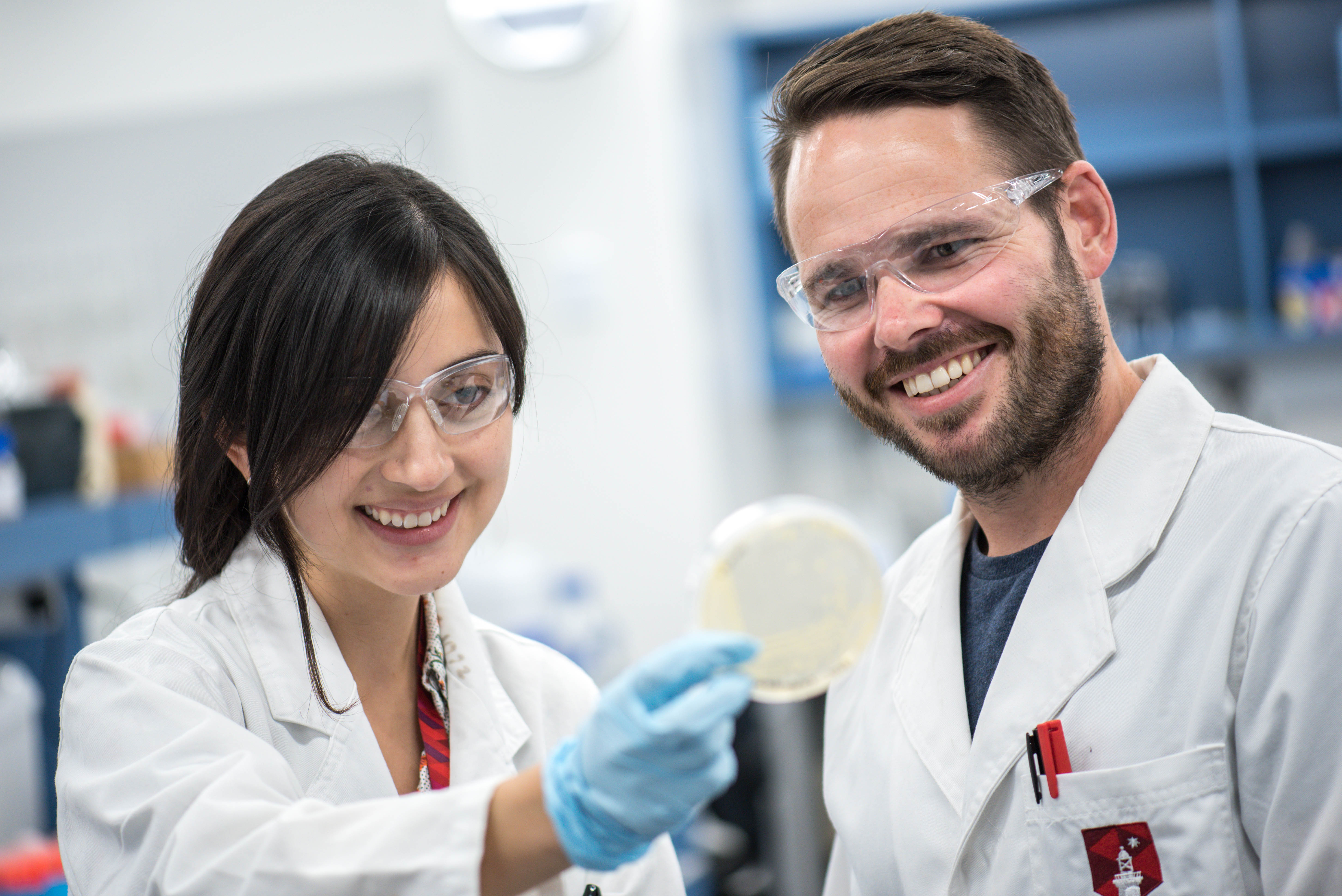 Although great advances have been made in the diagnosis, prevention and treatment of cancer, it remains one of Australia’s leading causes of death. Treating cancer often involves the use of chemotherapy drugs that dose the whole body to target fast growing cells, causing unwanted side effects.
Although great advances have been made in the diagnosis, prevention and treatment of cancer, it remains one of Australia’s leading causes of death. Treating cancer often involves the use of chemotherapy drugs that dose the whole body to target fast growing cells, causing unwanted side effects.
One of the most promising avenues for cancer treatment is to treat tumours and other cancers at their source, using targeted drug delivery. Until recently, however, finding the right vehicle to deliver a therapeutic cargo when and where it is needed most has proven elusive.
Now Dr Andrew Care, a research fellow in the Department of Molecular Sciences, is researching whether biological nanoparticles may hold the answer.
He is using genetically engineered bacteria to produce biological nanoparticles that can be loaded with drugs to target cancer. These nanoparticles self-assemble from multiple protein subunits into cages that look like hollow balls.
“Protein cages naturally occur in microorganisms like archaea and bacteria, and one of the cages that we are using come from a bacterium found in hydrothermal vents off the Italian coast,” explains Dr Care.
“This project combines synthetic biology and nanotechnology to develop new protein nanocages (see image) for the targeted delivery and controlled release of therapeutics in the treatment of cancer,” he says, adding that he is leading the project in collaboration with Associate Professor Anwar Sunna, with support from the ARC Centre of Excellence for Nanoscale BioPhotonics (CNBP) and other Australian and international collaborators.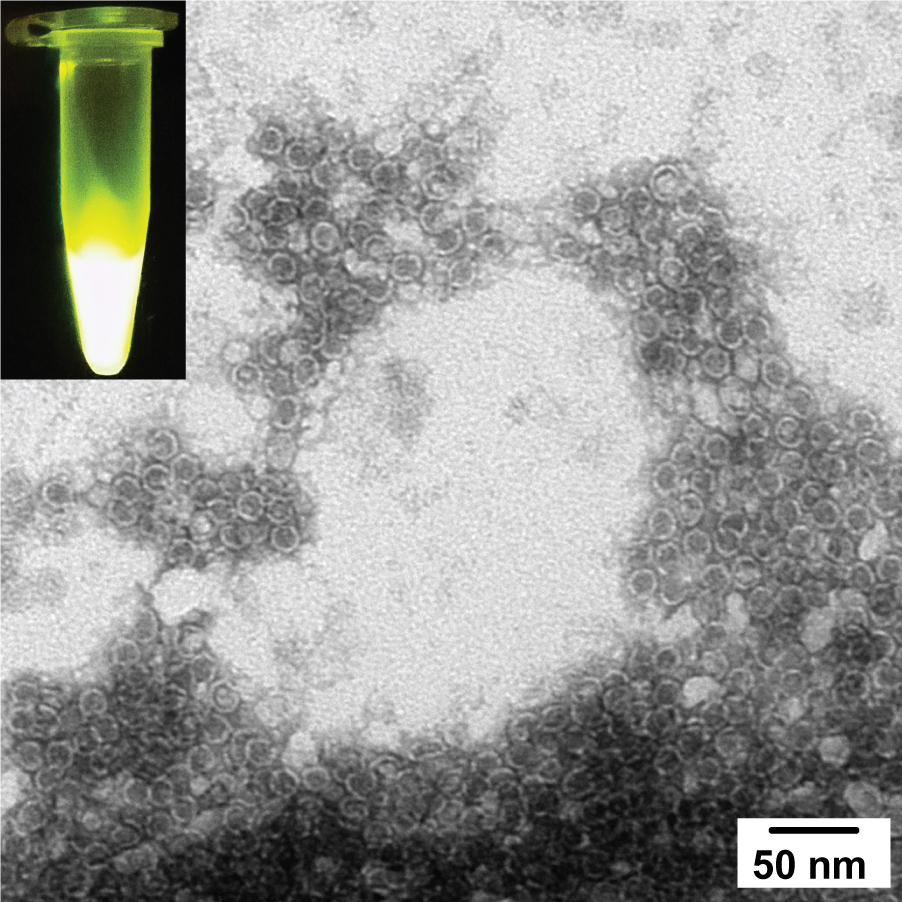
He was recently awarded a 2018 Early Career Fellowship from the Cancer Institute New South Wales (CINSW) to fund the research project, while PhD candidate Ms Dennis Diaz, who is one of three PhD students in the research team, was awarded a Research Scholarship Award worth $10,000 from the translational cancer research centre, Sydney Vital.
Flicking a switch
More than 900 protein cage-expressing microorganisms have been identified, with some producing larger cages that are capable of carrying more drugs or others with larger holes in their structure, potentially allowing different approaches to releasing therapeutics.
“In the lab we make empty cages, load them with therapeutic cargo (proteins or drugs) and then target them towards the diseased cells,” Dr Care says.
Each ‘cage’ is about 25nm in diameter, perfectly round and uniform sized, and releasing its cargo is as simple as flicking a switch – well almost.
“We can engineer these cages to have light switches that trigger the cages to disassemble when you shine light on them, causing the loaded drug to be released,” he adds.
The location of the cages is detected using fluorescent imaging technology. When the cage reaches the target area, lasers are used to shine light onto the cages and release the drug.
“Using the light allows the researchers to track its progress, and localise the delivery of the drug in the right place and at the right time,” Dr Care says.
Broad application
Dr Care previously worked in the CNBP, which develops innovative nanotechnologies to study biological processes with the human body. While there, he developed methods of attaching proteins to inorganic nanoparticles for drug delivery, but says that inorganic particles can sometimes be difficult to dissolve and are not always biologically compatible and can even be toxic, significantly limiting their application in humans.
“The big difference with this project is that we’re using biological nanoparticles, not chemical or synthetic composites, which are often not compatible with human biology because of their insolubility, size, shape, and complex surface chemistries, which inhibits their use in targeted pharmaceutical delivery”.
“All going well these biological nanoparticles will be a customisable platform for the delivery of different drugs to target a huge range of issues, from cancer to neurodegenerative diseases,” he says.
May 2018
Switched on to learning - February 2018
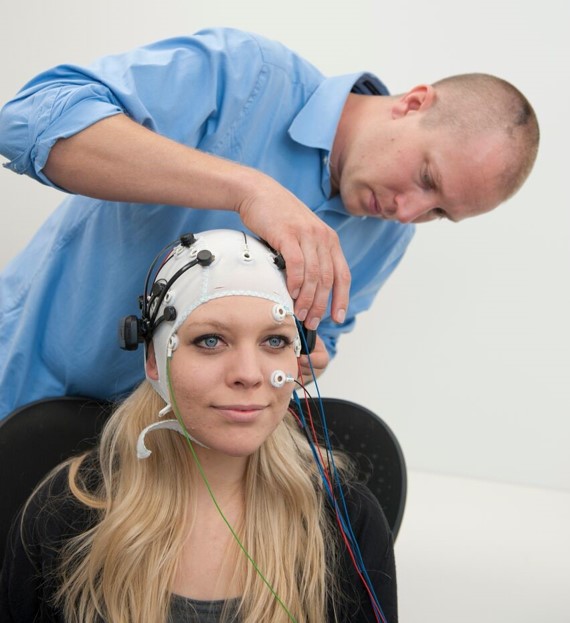 Being a good learner translates to higher results at school or university, better socioeconomic status, the ability to work harder or longer and better work-life balance.
Being a good learner translates to higher results at school or university, better socioeconomic status, the ability to work harder or longer and better work-life balance.
But what makes a good learner? Cognitive scientist Dr Nicholas Badcock is aiming to find out as part of his new prestigious Macquarie University Co-Funded Fellowship, which will combine state of the art neuroimaging technology with innovative research methodologies. He will work in collaboration with fellow cognitive scientists, Mr Nikolas Williams, and Prof Genevieve McArthur.
“I am interested in how being switched on – that is, a person’s ability to pay attention, take in information and their speed of decision making – underpins complex functioning and impacts important issues like learning to read,” says Dr Badcock.
The team aims to discover the neural markers of successful learning, which will pave the way for training the brain to learn better in people with learning difficulties.
Alpha waves
The neurons that make up our brains are constantly firing as they communicate by passing tiny electrical signals between themselves. Although the signals are tiny, when many neurons fire in synchrony, such as in response to sound or another stimulus, the electrical activity – which appear as oscillations or waves – can be measured at the scalp, using electroencephalography (EEG).
Low frequency oscillations (known as alpha waves) have been associated with relaxed states of mind but also greater cognitive activity like active listening.
“Normally we look at how the brain responds to single words in a contrived setting by measuring the electrical signals that occur as words appear,” Dr Badcock says.
But when someone is reading a paragraph, everything happens much faster. The electrical signals in the brain are different – and more complex – because the reader is making predictions and anticipating what comes next in the sentence or paragraph.
“Signals also vary when people are listening to gibberish, compared with spoken text.”
Measuring cognitive complexity
This project will assess the relationship between these brain waves and educational outcomes to determine their value in predicting strong versus weak learners.
Using a technique pioneered in 2017 in India, Badcock and the team will explore alpha waves and EEG complexity in university student populations of varying educational abilities. Among other areas, they will measure brain activity when participants complete simple versus complex language and literacy tasks.
“These tasks are the foundations of most learning in modern western societies which suggests that neural activity during these tasks is likely to discriminate between good and poor learners.
The research will measure participants’ brain activity when listening to speech in quiet versus noisy environments to examine how the brain accommodates increased difficulty.
Student volunteers will also be assessed when listening to native versus non-native speech to establish EEG descriptors specific to comprehension.
Finally, students will be exposed to paragraph readings of varying complexity to explore the relationship between successful and less successful learners of reading whilst they read texts that vary in complexity.
Game changing technology
In the past, medical grade neuroimaging technology has been prohibitively expensive, limiting the scope of research that could be undertaken. Fortunately, Macquarie’s collaborator on this project is bioinformatics and technology company EMOTIV, whose Australian arm recently moved to Macquarie’s Innovation Hub.
In 2009, EMOTIV released a low-cost electroencephalography (EEG) system that is also wireless and portable. In addition to reading the raw data, the system can give users the ability to control virtual and physical objects using only brain waves.
“The technology was a game-changer not only for users but also cognitive scientists who found that it is almost as good as medical grade EEG systems that cost around $100,000. The gaming device can be used with children, including those with special needs such as autism,” Dr Badcock says.
New avenues
The partnership between EMOTIV and Macquarie will harness the existing recognition software for cognitive and emotional states (currently consisting of stress, focus, excitement, relaxation, engagement, and interest).
Dr Badcock says this will both enhance the user experience and widen EEG and neurotechnology’s application to fields including virtual and augmented reality, artificial intelligence development, neuromarketing, neurofeedback applications for neurological conditions such as post-traumatic stress disorder and attention deficit hyperactivity disorder, and for general consumer use in optimising brain performance and wellness.
While these outcomes are important, Dr Badcock’s focus remains on helping students with learning difficulties.
“Literacy is widely recognised as the road to human progress and to realising potential,” he says. “This research will hopefully open new avenues to helping students master the critically important life skill of reading.”
February 2018
Understanding the impacts of a regional ‘superpower’ – from the age of the pyramids - November 2017
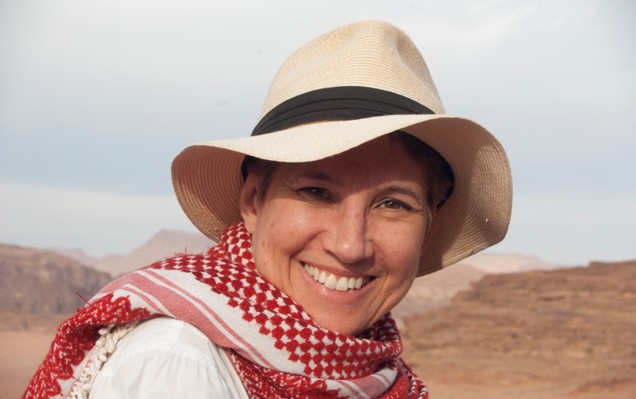 Globalisation has hammered home the message that the actions of major developed countries can significantly impact trading partners as well as those sharing geographical boundaries. Less well understood are the impacts of power plays, trade and social instability in ancient societies like ancient Egypt on their neighbours.
Globalisation has hammered home the message that the actions of major developed countries can significantly impact trading partners as well as those sharing geographical boundaries. Less well understood are the impacts of power plays, trade and social instability in ancient societies like ancient Egypt on their neighbours.
That’s all about to change, thanks to the Department of Ancient History’s Dr Karin Sowada, who is an expert in the interaction between Egypt the eastern Mediterranean during the Early Bronze Age (3100-2000 BC). She was recently recognised with an Australian Research Council Future Fellowship, and will be leading the project 'Pyramids, Power and the Dynamics of States in Crisis'.
“Traditionally, archaeology in the Middle East tends to be segmented and specialised, with researchers focused on their own patch,” Dr Sowada says, adding “it can be hard to lift above the geographic parameters in which you work to link archaeological results in a coherent way.”
She says she was inspired by the work of the late Professor Basil Hennessy, who was a leading scholar in the archaeology of the Levant (eastern Mediterranean), and whose work put the evidence he found within a broader international context.
“Archaeological, historical and scientific data points to the possibility that Egypt during the third millennium BC was a major state actor and driver of economic, political and social change in the wider region. The kings of Egypt had a voracious appetite for imported luxury products such as cedar from Lebanon which was unavailable locally. We know that economic exchange mechanisms are a driver of cultural and social change, but the ‘x factor’ of internal politics and how leadership responds to threats and challenges, such as environmental change, also drives decision-making and economic policy settings.”
Dr Sowada says climate variation had a significant impact on the functioning of the Egyptian state.
“The Nile River was the lifeblood of the Egyptian economy and the annual inundation was much anticipated and measured by the administration. Low floods caused by climate events beyond human control had a huge impact economically and politically.
“Knowing how Egypt dealt with this stress during the period when the pharaonic state reached its developed form, will help increase understanding of the role of politics, climate change, trade and the movement of people across a wide geographic area over a long chronological range.
“It will also help us understand the ‘big E’ environment in which the Egyptian state operated, and what impact its engagement had on the rest of the Levant.
Dr Sowada’s own background has been diverse – she has worked in politics, public policy and archaeology, while holding leadership positions in several charitable organisations. In the early 1990s, she broke new ground as the youngest woman Commonwealth senator. Her political experience was followed by almost a decade working as Assistant Curator of the Nicholson Museum where she conducted extensive research on its collection of Egyptian antiquities as well as participating in archaeological excavations in Australia, Egypt and Jordan while working towards her doctorate in Egyptian archaeology in 2002.
Her PhD thesis was a foundational study on Egypt’s foreign relations in the third millennium BC and has formed the basis of the Future Fellowship work.
Dr Sowada says that even though the events she is studying happened in the distant past, they offer insight into the modern world.
“Take China’s One Belt, One Road initiative [which will see it renew the old Silk Road trading route over land, and develop maritime routes that connect southern China to South-East Asia and the east coast of Africa to advance its strategic and trade interests].
“China is pursuing its own interests through trade, political influence, and infrastructure investment. This policy will have a huge impact on neighbours and trade relationships.
“This project allows us to track the progress of a similarly influential state in the ancient world,” she says.
November 2017
New National Centre of Research Excellence in Digital Health Research - October 2017
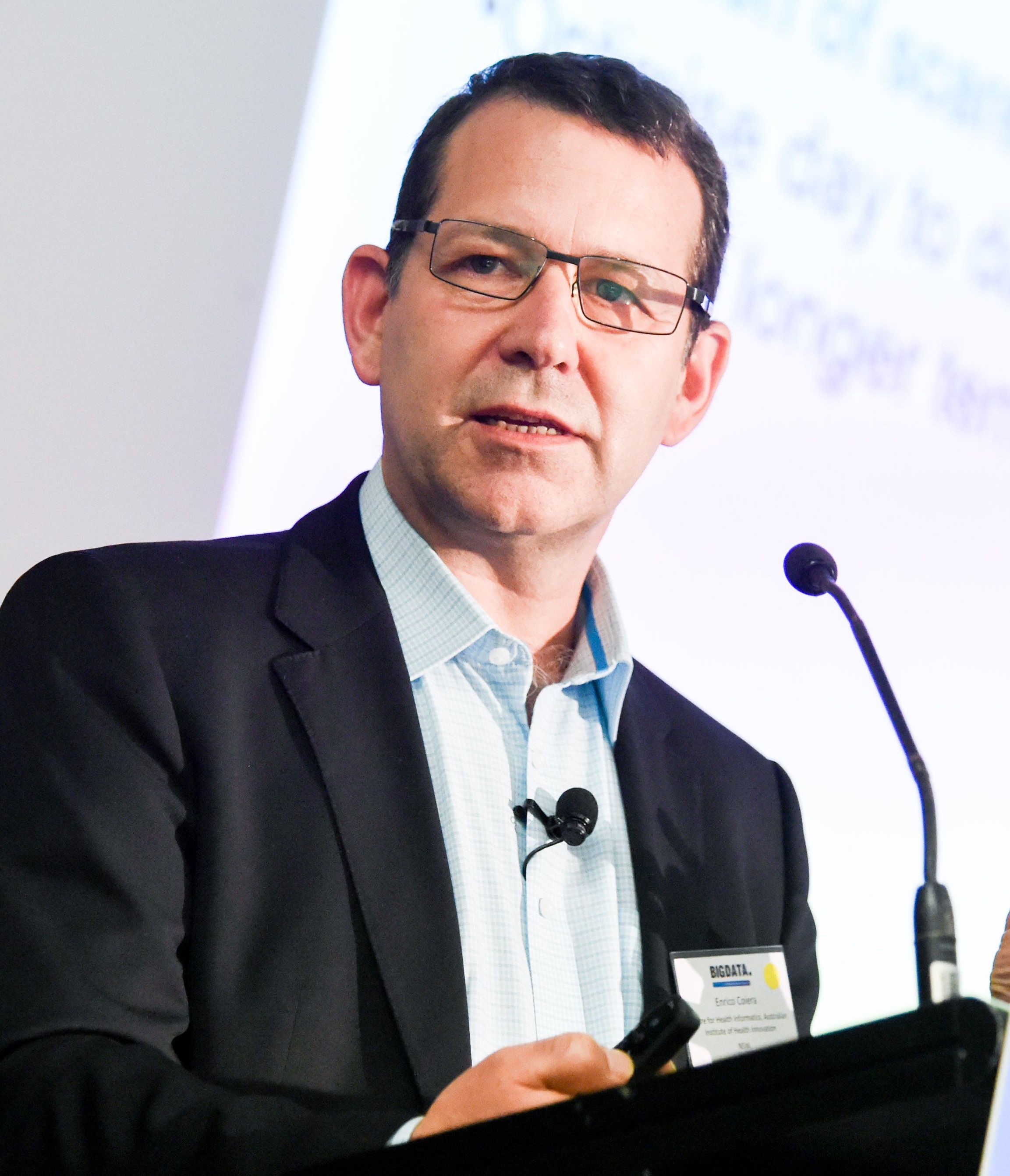 The Centre for Research Excellence (CRE) in Digital Health will be led by Professor Enrico Coiera at the Australian Institute of Health Innovation. It brings together for the first time all the major Australian academic centres of health informatics research, with the support of the new Australian Digital Health Agency and the Australasian College of Health Informatics. Other members of the CRE include Bond University, the University of South Australia, the CSIRO Australian e-Health Research Centre, the University of Sydney, the University of Melbourne and the University of New South Wales.
The Centre for Research Excellence (CRE) in Digital Health will be led by Professor Enrico Coiera at the Australian Institute of Health Innovation. It brings together for the first time all the major Australian academic centres of health informatics research, with the support of the new Australian Digital Health Agency and the Australasian College of Health Informatics. Other members of the CRE include Bond University, the University of South Australia, the CSIRO Australian e-Health Research Centre, the University of Sydney, the University of Melbourne and the University of New South Wales.
“Digital Health is rightly seen as a critical tool to improve the quality, safety and effectiveness of healthcare. Doing that however requires a solid research base to help understand how to make changes to the complex system that is healthcare” said Professor Coiera. “Through this Centre of Excellence, researchers and front-line service providers will tackle fundamental challenges that impede the creation of truly safe, efficient and effective digital health services for both clinicians and consumers. If Australia’s health system is to benefit from this digital revolution, we will need much more than just technology. We urgently need the evidence, skills and workforce to translate these advances into effective working health services”.
The CRE has a number of programs that it will support over its five years of operation, covering both research and support for policy development and training:
- Working with the Australasian College of Health Informatics (ACHI), the CRE will create a new Fellowship Program in Health Informatics, to help build the urgently needed national capacity in digital health research to meet our rapidly expanding national health service needs. The four-year research Fellowship has two components - a three-year doctoral program in health informatics and a one-year program of work placements. At the completion of training, candidates will be awarded a doctorate and an ACHI Fellowship. This will be the first pathway to Fellowship of ACHI that involves completion of a formal training program. A Fellowship is currently awarded solely based on length and quality of past experience. The Australian Digital Health Agency has supported the Fellowship proposal, and will be amongst the first organisations to offer Fellowship trainees paid work placements which forms part of the training program. Other organizations that have expressed interest in taking Fellowship trainees on placement include leading digital health software companies, state government e-health agencies, and public sector health service providers such as large hospitals.
- Rapid response function. Making evidence-based decisions is a major challenge for policy makers, health services and industry who operate often on tight timeframes, and may not have access to the research literature or be set up to analyze it effectively. Many questions also test the boundaries of the research literature. The CRE will conduct rapid literature reviews in answer to critical questions from the community, with an emphasis on maintaining a neutral and independent position, whilst still meeting the needs of key bodies such as the Australian Digital Health Agency.
- Research Programs: Given that many barriers to success lie less in the design of new technologies, and more in their translation into working systems, the CRE will specifically target the major evidence gaps that exist in our understanding of how to successfully implement and monitor digital health. Australian researchers individually are at the forefront of health and biomedical informatics research internationally. Through the CRE, we will come together to deliver an integrated research program to understand the implementation challenges faced by digital health interventions when translated into real-world settings. It will make crucial contributions to national digital health policy and practice by translating these insights into improved digital health design, implementation, performance and surveillance.
Research will focus on three streams of work:
- Safety and quality of digital health systems: To reduce the risk of patient harms from IT, the CRE will fund the development, evaluation and support of an automated IT critical incident database, which will extract and collate reports from national and international incident report databases. CRE investigators will disseminate critical IT alerts in response to significant new risks identified in the reports. Additionally, the CRE will conduct research into automated surveillance methods to detect clinically significant problems associated with the safety and quality of IT, suitable for use in large health service organisations such as hospitals and general practice networks. Working with clinicians and clinical informatics professionals, we will also trial dashboards for IT surveillance systems to provide early warning of events such as downtimes.
- Advanced clinical analytics: The CRE will undertake a research program to help translate the next generation in decision support technologies into practice, in support of better, and safer, clinical and population decision- making. It will undertake an internationally innovative research program to evaluate the impact of data and text analytics decision support tools such as dashboards for clinical and public health decision-making. A major focus of the work will be to identify which clinical decisions are most in need of decision support, how this decision support fits into the clinical workflow, and the formulation of design and implementation processes for these new tools.
- Consumer digital health: The CRE will work with consumers, system designers and service providers to carry out highly novel and much needed research into the factors that lead to successful implementation of consumer digital health tools. It will study the relationship between outcomes and the different features of consumer apps, users, and the context of use. It will seek to develop evidence-based guidelines for the design of consumer apps and the health services in which they are embedded.
October 2017
Centre for Research Excellence in Implementation Science in Oncology funded to translate research to better patient care - October 2017
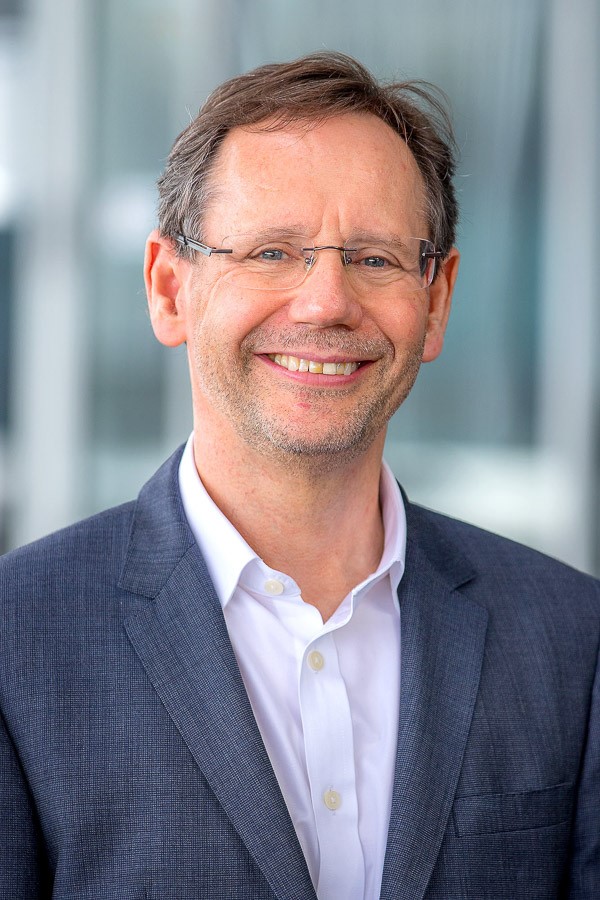 The Centre for Research Excellence in Implementation Science in Oncology (CRE-ISO), led by Professor Jeffrey Braithwaite, has been awarded $2.5 million by the NHMRC to develop new evidence-based treatments for cancer patients.
The Centre for Research Excellence in Implementation Science in Oncology (CRE-ISO), led by Professor Jeffrey Braithwaite, has been awarded $2.5 million by the NHMRC to develop new evidence-based treatments for cancer patients.
“We need a concerted effort and training for the next generation of researchers and clinicians to translate what we know into improved practices,” explains Professor Braithwaite.
“This Centre for Research Excellence harnesses new ideas in implementation science to make improvements to clinical care. Researchers will work side-by-side with clinicians, policymakers, and patients in achieving higher levels of evidence-based care.”
Participating institutions include the Cancer Institute (NSW), South Eastern Sydney and South Western Sydney Local Health Districts, Macquarie University, the University of Adelaide, University of Queensland and the Sansom Institute for Health Research. New practices generated by the CRE will be tested in the local health districts, which have some of the largest populations of cancer patients in Australia.
The CRE-ISO is underpinned by high-value research, initiatives and projects many of which are already underway. It adds extensive capacity in terms of research training, facilitates collaboration in getting more evidence into practice in cancer care, takes a fresh perspective, and is built on internationally-regarded chief investigators and associate investigators who are well established and well configured in the CRE as a very strong multi-disciplinary team.
CRE-ISO is built on internationally-regarded investigators from across Australia who are well established as a strong multi-disciplinary team. It adds considerable capacity in research training and in collaborations that will increase evidence-based practice in cancer care.
“Supported by the funding, we intend to create extensive new research assets (new theories, more compelling evidence, better improvement models), build further world-class capacity, provide research training for the next generation and secure further fellowships, partnerships and project grants,” Professor Braithwaite says.
CRE-ISO’s planned activities include:
- analysing network behaviours and characteristics in two cancer delivery hubs in New South Wales;
assessing barriers to and facilitators of implementation; - assessing the further potential of eviQ, a world-regarded web-based platform for delivering evidence based care;
- enrolling and developing researchers, policymakers, mentors and opinion leaders to strengthen take-up rates of evidence;
- running studies to demonstrate the efficacy of new models of care based on multi-disciplinary teamwork; and
- conducting studies with international partners to strengthen consumer-based and consumer-led cancer care.
October 2017
Partnership Projects success for the Centre for Health Systems and Safety Research - October 2017
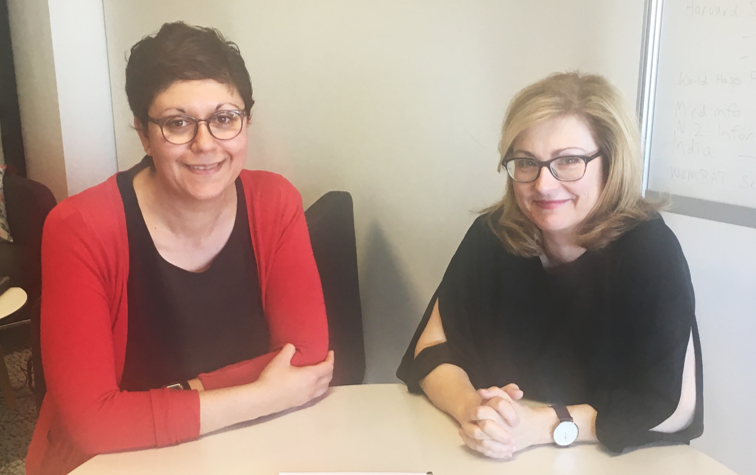 The Centre for Health Systems and Safety Research (CHSSR) in the Australian Institute of Health Innovation (AIHI), conducts innovative research aimed at understanding and improving the way in which health care delivery and patient outcomes are enhanced through the effective use and exchange of information.
The Centre for Health Systems and Safety Research (CHSSR) in the Australian Institute of Health Innovation (AIHI), conducts innovative research aimed at understanding and improving the way in which health care delivery and patient outcomes are enhanced through the effective use and exchange of information.
The Centre, led by Professor Johanna Westbrook, is internationally recognised for their work. Their research is highly competitive with other international research teams and their own research program is characterised by strong engagement with national and international academics from a broad range of disciplines, health practitioners, government bureaucrats, policy-makers and information system industry leaders.
Minister for Health and Minister for Sport, the Hon. Greg Hunt MP, announced two National Health and Medical Research Council (NHMRC) Partnership Project Grants awarded to the Centre. The Partnership Project Grants totals over $4 million which is cash from both the NHMRC and partnering organisations. The partners have also contributed a further $1.1 million in in-kind contributions.
The first NHMRC Partnership Project Grant is led by Professor Johanna Westbrook.
Creating a culture of safety and respect: a controlled, mixed methods study of the effectiveness of a behavioural accountability intervention to reduce unprofessional behaviours.
In healthcare unprofessional behaviours are common. They can include overtly inappropriate and hostile behaviour, such as verbal abuse. They can encompass a variety of situations, and interfere with team functioning and patient safety. These behaviours are associated with high staff turnover, patient dissatisfaction, and increased medicolegal risk. The prevalence of unprofessional behaviours is likely to be underestimated. Despite this, around half of surgeons and 40 per cent of nurse’s report being subjected to discrimination, bullying or harassment.
Addressing unprofessional behaviours in healthcare is a national issue and has been set as a priority by governments, the Australian Medical Association, and Colleges. The levels of concern resulted in the establishment of a Senate inquiry in 2016. Given its ubiquity, there is a pressing need for evidence-based interventions to reduce its impact on staff and patients and normalise a culture of safety.
The NHMRC Partnership Grant in partnership with St Vincent’s Health Australia will assess the effectiveness of the Ethos program, an innovative approach to address unprofessional behaviours. The Ethos program is a structured staff behaviour and accountability intervention designed to improve staff safety, patient outcomes and experience, and hospital culture. Ethos involves a process of early, non-punitive and tiered interventions. The project will assess the effectiveness of the program to reduce unprofessional behaviours and improve patient safety.
The second NHMRC Partnership Project Grant is led by Dr Melissa Baysari.
Optimising computerised decision support to transform medication safety and reduce prescriber burden
Drug-drug interaction (DDI) errors occur when two or more drugs interact with each other in such a way that the effectiveness or toxicity of one or more of the drugs is altered. DDIs can result in adverse effects (e.g. bleeding) and lead to therapeutic failure. A strong relationship exists between the number of drugs prescribed for a patient and the probability of a DDI error. Hospital patients are prescribed on average 12 medications, making it highly likely that a DDI error will occur.
Despite an absence of robust evidence of effectiveness, enormous resources continue to be devoted to implementing decision support for clinicians in electronic medication management (eMM) systems to reduce DDI errors. This decision support comprises computerised alerts, which are generated at the point of prescribing to warn doctors about potential interactions in their patients’ medication orders. Although computerised alerts sound promising in principle, in reality prescribers are often bombarded with large numbers of alerts. The consequence is alert fatigue, where users become overwhelmed and desensitised to alert presentation, so much so that alerts are ignored. The inclusion of DDI alerts in eMM systems is likely to result in prescribers presented with hundreds of DDI alerts a day.
As medication management in Australian hospitals shifts from paper to electronic formats, organisations are faced with a difficult decision: should DDI alerts be turned on and if so, which alerts? This NHMRC Partnership Project, in partnership with eHealth NSW and eHealth QLD, will combine a robust evaluation of error rates with a human factors evaluation of alerts to answer these questions. The results will directly inform the design and implementation of computerised decision support, positively affecting
prescribing decisions for hundreds of thousands of patients and their providers.
October 2017
MQ-Biotext partnership: Rich with opportunities - October 2017
 A dynamic partnership between Macquarie University’s Department of Linguistics and the Canberra-based publishing company Biotext is being forged as the foundation for a multifaceted initiative in commercial, research and training activities, focusing especially on style and accessible communication.
A dynamic partnership between Macquarie University’s Department of Linguistics and the Canberra-based publishing company Biotext is being forged as the foundation for a multifaceted initiative in commercial, research and training activities, focusing especially on style and accessible communication.
The commercial component begins with the transfer to Macquarie University of a well-developed online style manual for scientific writers and editors, called the Australian Manual of Scientific Style (AMOSS). The 350-page online manual was developed over the last three years by Biotext’s scientifically trained staff, led by Dr Richard Stanford. Through the agreement with Biotext, Macquarie University will become the co-publisher of AMOSS and collaborate in its further development; an endeavour that will be led by Emeritus Professor Pam Peters. The revenue from individual and institutional subscriptions to AMOSS will be shared, in line with the volume of existing and new material created.
In association with AMOSS, a new multi-purpose platform will be designed by Access Macquarie for Macquarie University, to be called the Australian Style Hub. As its name suggests, it will support multiple products relating to both general and specialist written styles, so as to become the first port-of-call for those nitty-gritty issues of language. The Australian Style newsletter will again be accessible through it, as a vehicle for exchanging research and observations on current usage, and conducting language surveys across Australia. The Australian Style Hub opens a fresh chapter in Macquarie University’s long involvement in references on Australian language and style -- in dictionary-making with the Macquarie Dictionary, and contributions to the last three editions of the Australian Government Style Manual. The Australian Style Hub will also support the multilingual online termbanks (TermFinder™) developed by Macquarie Linguistics staff to provide accessible information on specialised terminology for the general public, including terms in family law (LawTermFinder) and in cancer medicine and health care (HealthTermFinder).
When it comes to making recommendations on style, usage and accessibility, Biotext and Macquarie University both take seriously the need for empirical research. A series of experimental studies is being undertaken by Professor Jan-Louis Kruger, Head of the Department of Lingustics, at Macquarie to establish the different levels of accessibility involved in accessing information in online websites, to put flesh on the bones of the existing standards of web accessibility. Media Access Australia will be a further partner in this, to ensure that the needs of those with a disability are accommodated in empirically enhanced approaches to information design. The results of this research will be synthesised for publication as a further product of the Australian Style Hub. They will also inform Macquarie’s own training courses in accessible communication and external workshops, as well as webinars to be accessed through the Australian Style Hub.
October 2017
World first MS biomarker discovery lead by our researchers - July 2017
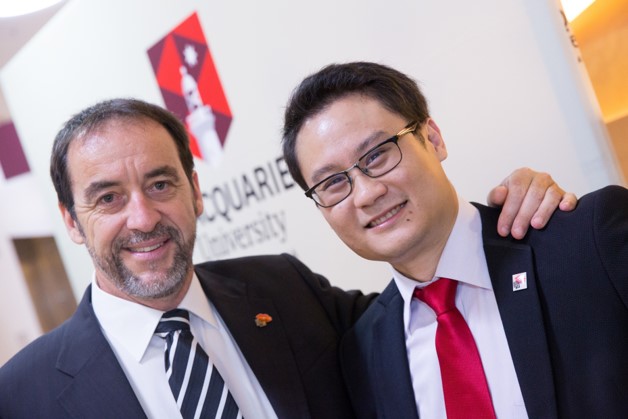 Tiny changes, huge repercussions
Tiny changes, huge repercussions
For neuroscientist Professor Gilles Guillemin, determining minute changes in specific chemical pathways within the brain is key to unlocking the progression of neurodegenerative diseases like multiple sclerosis (MS), Alzheimer's disease and Amyotrophic lateral sclerosis (ALS), also known as motor neurone disease (MND) or Lou Gehrig's in USA.
“We specifically look at a biochemical pathway that uses a chemical called tryptophan which is known to be involved in brain inflammation,” says Professor Guillemin.
Guillemin, who has been working in the field of Neuroimmunology for more than 24 years and in the field of tryptophan metabolism for 20 years, has shown through research that the tryptophan pathway is integral in many neurodegenerative diseases. These results have been particularly useful in the advancement of disease biomarkers, including the development of the first prognosis biomarker for MS which Guillemin and Dr Edwin (Chai) Lim recently announced in a paper published in the journal Scientific Reports.
“We have developed a biomarker test which will allow clinicians to determine which type of MS a patient has with 85-91 per cent accuracy, negating the need for patients to have to undergo an array of expensive tests to get the same answer,” he explains. “The new results show that a blood test could greatly simplify and speed up this process, which is significant for patients because it will allow their clinicians to quickly and simply make a prognosis and adapt their MS treatment more accurately and rapidly.”
Over the years, a number of key organisations have collectively provided around $1 million in funding to advance the research, including start-up and ongoing funding from MS Research Australia, an Australian Research Council fellowship, as well as grants from the National Health and Medical Research Council, the Ramaciotti Foundation, the Deb Bailey Foundation and Macquarie University.
More than 12 years later, the researchers are now working on commercialising the biomarker so that clinical labs around the world can aid MS patients in receiving a quick prognosis.
Mentoring a bright young star
Over the past few years Professor Guillemin has been working with Dr Lim, an emerging young analytical biochemist with highly specialised skills when it comes to investigating tryptophan metabolism. With only five years of postdoctoral experience, he already holds two patents and is a technical consultant with Michigan State University in the USA.
Working within the Guillemin laboratory, Lim is aiming to generate large amounts of clinical data for the biochemical pathway that uses tryptophan, called the kynurenine pathway, for various diseases.
“This will allow us to perform a disease wide analysis to fully delineate the role of the tryptophan processing pathway in a number of brain conditions,” says Lim.
Having published 21 peer reviewed research articles in the last three years relating to this pathway, Lim’s enthusiasm to learn more about the nuances of tryptophan metabolism led to the discovery of six compounds found to be critical in determining specific types of MS, allowing the development of the world’s first MS biomarker.
Collaborate to completion
Guillemin is currently engaged in 34 active collaborations with researchers from around the globe, including scientists from Australia, France, Spain, Chile, Brazil, USA, South Africa, Oman, Kuwait and China. For the biomarker research alone, Guillemin and Lim have worked with a large and accomplished group of researchers, including Macquarie University’s Associate Professor Ayse Bilgin, St Vincent’s Centre for Applied Medical Research Centre’s Professor Bruce Brew, Menzies Research Institute Tasmania’s Professor Bruce Taylor, Ms Sonia Bustamante from the University of New South Wales, and international collaborator, Dr Alban Bessede from ImmuSmol in France.
“We are now in the process of developing a new MS prognostic kit in collaboration with Dr Alban Bessede’s laboratory in France. To do this, we needed to develop specific and sensitive set of antibodies that are able to detect the small molecules identified as biomarkers,” Guillemin explains. “This is extremely challenging and only a few companies in the world have this expertise, ImmuSmol being one of them.”
Over the last 18 months, the researchers have been developing a commercial test kit, with the support of the Australian company Dianti MS Pty. Ltd., which they are aiming to have available to Australian pathology clinics within two years, and available to pathology labs worldwide soon after.
A simple test
The clinical MS biomarker test kit will enable patients to receive a prognosis within 24-48 hours, allowing them to start an adapted treatment regimen earlier and limiting the autoimmune damages in the brain and spinal cord caused by MS.
“This has the clear capacity to be the first ever blood biomarker for the prognosis of MS, and in doing so will meet one of the real unmet needs in the clinical management of MS,” says Dr Matthew Miles, CEO of MS Research Australia. “We have been excited to be part of the translation of this initially fundamental research into a potential clinical test.”
Currently, most existing MS therapies only work for the relapsing remitting subtype of MS, whereas some new treatments on the market actually benefit those with the secondary progressive subtype of MS. Guillemin says that a quick prognosis result from the clinical test kit will allow clinicians to quickly gauge when to stop or change MS therapies, which is critical when it comes to sparing patients the side effects and cost of unnecessary treatments.
“The results of the recent research identify biomarker components that could be potential therapeutic targets for MS and could also be used to assess the response of new drugs for the treatment of MS in clinical trials. Future research will need to look at ways to rectify the abnormal levels of these components in MS patients in order to potentially delay or halt progression of a patient’s condition,” concludes Guillemin.
July 2017
Mind mapping - June 2017
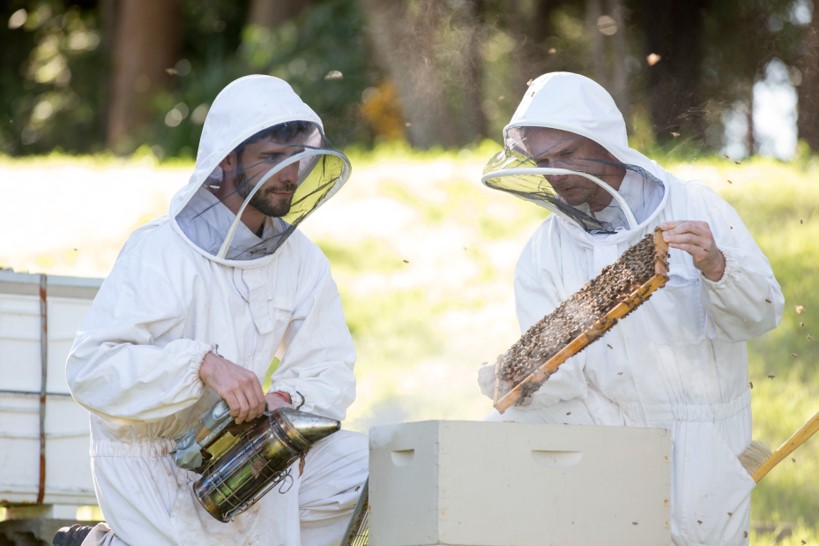 For entomologist Associate Professor Andrew Barron, his research holy grail is finding out what insects think – and then creating a neurobiological model that displays the passage of those thoughts as they spark across the neural circuitry.
For entomologist Associate Professor Andrew Barron, his research holy grail is finding out what insects think – and then creating a neurobiological model that displays the passage of those thoughts as they spark across the neural circuitry.
“I don’t believe that consciousness is outside the capacity of neuroscientific examination,” he says.
Barron, who started his research career working on flies at the University of Cambridge, decided to switch his focus to honeybees after completing his PhD, driven by worldwide concerns over pollinator decline and a fascination with how minds work. These interests coalesced around an initiative to model the insect brain.
“Although their brains are minute, bees exhibit astonishingly complex behaviour,” he explains. “This means when it comes to understanding what drives animal behaviour, insects and bees have a real advantage over other animals."
In 2001 he was awarded a Fulbright Scholarship and spent a year working with Professor Gene Robinson from the Carl Woese Institute for Genomic Biology at the University of Illinois.
More than 15 years later, Barron and Robinson continue to collaborate, recently publishing an article in Science that demonstrated that instinctive behaviours – such as honeybees’ inherent knowledge of how to communicate the location of food sources in their environment to their colony using movement and sound – may evolve from the process of learning until they eventually become hard-wired into the DNA.
They showed that both learning and instinctive behaviours are regulated by the same cellular and molecular mechanisms, adding to the growing body of research in the exciting new field known as epigenetics, and proposed the first general model of how instincts can evolve.
From mentee to mentor
Over the past year, Barron has been on the other side of the Fulbright Scholarship relationship, mentoring PhD student and Fulbright scholarship holder Brian Entler.
“This is a competitive award and the students who get through are exceptional,” Barron says. “Brian was a highly motivated, dynamic character who took advantage of any opportunity to increase his skills, becoming involved in everything that was happening in the lab.
“As a result of his enthusiasm, and the work he undertook while he was at Macquarie, he contributed to three papers that are yet to be published.
“He has returned to the US to continue his studies, but while he was here his passion and enthusiasm energised and helped lift the research performance of the whole team.”
Stimulating research
In 2009, research that involved stimulating the reward system of bees using cocaine attracted the attention of the world’s media.
Barron found surprising similarities between the ways bees and humans react, with the drug altering affected bees’ judgement, stimulating their behaviour and making them overestimate the value of the pollen and nectar they found.
“The cocaine triggered the release of octopamine, which has a similar effect on the brain to dopamine in humans. It caused the bees to dance more vigorously than their finds warranted,” he explains, adding that the research revealed new insights into how brains react to drugs of abuse on a molecular basis.
While much of Barron’s work focuses on creating a functional model of the honeybee brain, he has also written for Nature about the implications of media sensationalisation of research on animal sexual behaviour, particularly when it comes to relationships between animals of the same sex.
Making stressed colonies resilient
Another research avenue Barron is focusing on is the survival of bee populations worldwide, which have been decimated by Colony Collapse Disorder – a phenomenon in which entire bee colonies suddenly disappear without trace.
During research that tracked bees using miniature radio tags, Barron and colleagues found that stress, in the form of parasites, pathogens and pesticides, may be the problem.
“Bees from stressed colonies start foraging too young, with lower foraging success rates and increased risk of death.”
Modelling showed it doesn’t take much to tip the balance from a healthy, productive hive to one in mortal decline: decreased food for the colony and increased forager mortality led to rapid colony collapse.
But the news wasn’t all bad, with the researchers suggesting that by simply supplementary feeding hives during times of stress could help stave off colony collapse.
Barron says that all of his work is connected: “As our knowledge of bee biology has increased, so too has our understanding of how to improve colony function and health”.
It all comes back to the brain
While insect brains and human brains could not look more different, they have structures that do the same thing. But because of the mammalian brain’s complexity, creating a model of its circuitry remains out of reach for researchers.
In 2015, Barron was awarded an ARC Future Fellowship to develop computational and mathematical models of the honeybee brain. He is currently mapping their neural networks and relating function to network activity within the brain.
“The small size of the bee brain constrains the model, meaning that only so many connections between neurons (for processing information about place, smell and colour) are possible. Once we know how they connect we can create a proper circuit model,” he says.
“Even though they’re small, they are still able to solve complex problems. For all bees, foraging on flowers is a hard life. It is energetically and cognitively demanding; bees have to travel large distances to collect pollen and nectar from sometimes hard-to-find flowers, and return it all to the nest without running out of power, getting lost or dying.
“To do this they need finely tuned senses, spatial awareness, learning and memory, and do it with a brain of just a few cubic millimetres.”
Applications for 2018 Fulbright Scholarships are currently open and will close 1 August 2017.
June 2017
Philanthropic grant success: Pocket Rockets - May 2017
 Meet Dr Carol Newall from the Department of Educational Studies, Faculty of Human Sciences (this is not her pictured!). She is a tenacious go-getter and an impressive academic. Dr Newall understands what philanthropic foundations want from their granting: in-depth engagement and clear demonstration on how their funding will change the world for the better. She has been successful in receiving grants from many different avenues.
Meet Dr Carol Newall from the Department of Educational Studies, Faculty of Human Sciences (this is not her pictured!). She is a tenacious go-getter and an impressive academic. Dr Newall understands what philanthropic foundations want from their granting: in-depth engagement and clear demonstration on how their funding will change the world for the better. She has been successful in receiving grants from many different avenues.
In 2015, Dr Newall defied the odds and secured funding from the Ian Potter Foundation, one of Australia’s largest private foundations, who supports a variety of areas including arts, community wellbeing, education, and the environment amongst others (last financial year they gave out over $36 million to 267 projects). In 2015/16, only 10% of applications in their Education stream were successful, so Dr Newall is a proven superstar. The funding was for a small pilot program for Pocket Rockets, an innovative STEM workshop for children aged 4-6 years, in collaboration with Dr Kate Highfield at Swinburne University.
With the help of the Office of Advancement, Dr Newall has successfully managed the relationship with the funder, including:
- Managing the funds so well that she was able to undertake 2 extra free workshops for children in remote areas (above and beyond what the Foundation expected)
- Inviting the Foundation along to the workshops and ensuring they have been kept up to date where appropriate
The way that Dr Newall has managed this relationship is best-practice. She has treated them as a partnership, rather than as a transactional relationship. She has ensured that they are ‘inside the tent’ rather than keeping them at arm’s length. This will have done wonders in bolstering Macquarie’s reputation with the Foundation, which can only benefit all of our future applications.
We have also been able to leverage Dr Newall’s program. Through connections in the Office of Advancement, we have met with the Head of the St George Foundation (the bank’s philanthropic arm) and received their first ever donation to an Australian University. This is unheard of!
Because of Dr Newall’s persistence and understanding of the philanthropic landscape, philanthropic funding for her work continues to grow.
For more information on philanthropic foundations, please contact Caitlin Crockford from the Office of Advancement.
May 2017
Faculty of Arts working with Optus for positive social impact through technology - April 2017
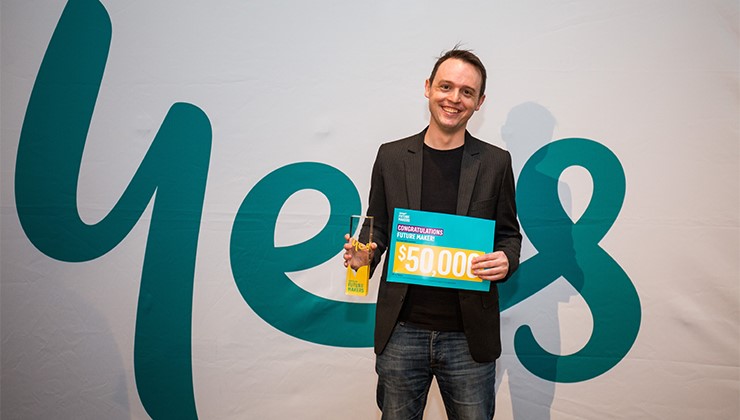 Dr Rowan Tulloch from the Department of Media, Music, Communication and Cultural Studies was funded by the Optus Future Makers for his pitch ‘The Game Change’.
Dr Rowan Tulloch from the Department of Media, Music, Communication and Cultural Studies was funded by the Optus Future Makers for his pitch ‘The Game Change’.
The inaugural Optus Future Makers program fosters digital innovation that will impact how we socially engage. A tense pitching process to a panel of experts by eleven emerging digital influencers took place in front of an audience at the Optus Campus in Sydney.
The innovators had just 180 seconds each (with no notes or power point slides) to secure their share of the $300,000 funding pot and six walked away with enough financial backing to bring their ideas to life.
Rowan won $50,000 to help make his innovative idea a reality. Rowan said “it was so far out of my academic comfort zone, but it must have gone well because they funded me to the full amount”. The Game Change is software that helps university and school teachers gamify their classrooms to better engage and motivate students. The software is also designed to assist students who are marginalised by traditional teaching practices. Through the Future Makers program, Rowan found his collaborator, Epiphany Games, and has been able to expand the scope and enhance the timeline of his original proposal, and to hopefully bring The Game Change app to market.
Paul O’Sullivan, Future Makers Judge and Optus Chairman, said, “This program is about helping Australia’s innovators to make a positive social impact through the use of technology. We know how important technology is in people’s daily lives, and with Future Makers we are specifically targeting projects that will benefit marginalised and vulnerable youth.”
“I think the main thing that gamification can give us as teachers is the possibility to open up a dialogue with students and to help guide them into the practices that we take for granted,” Rowan says.
For further details from Rowan himself, listen to the PioneeringMinds podcast.
April 2017
